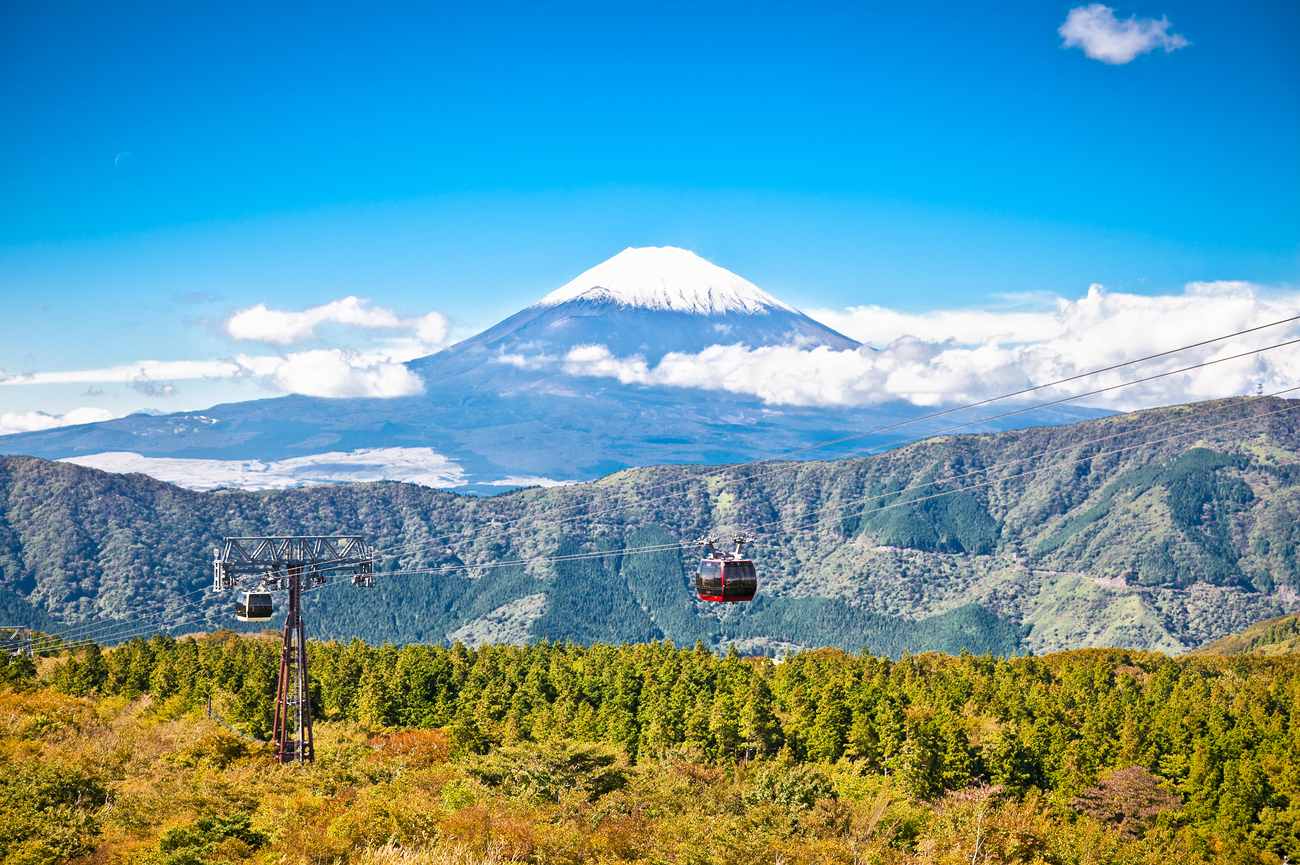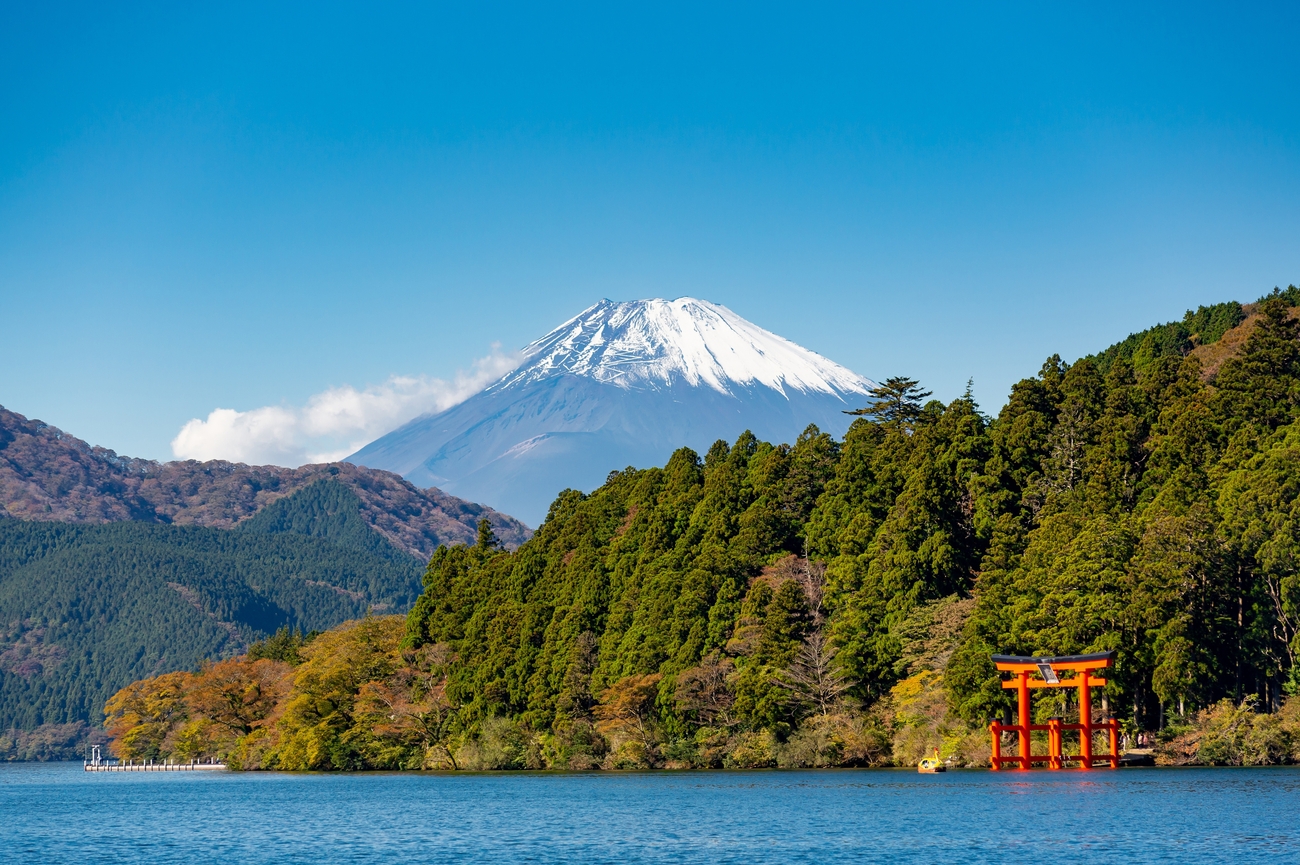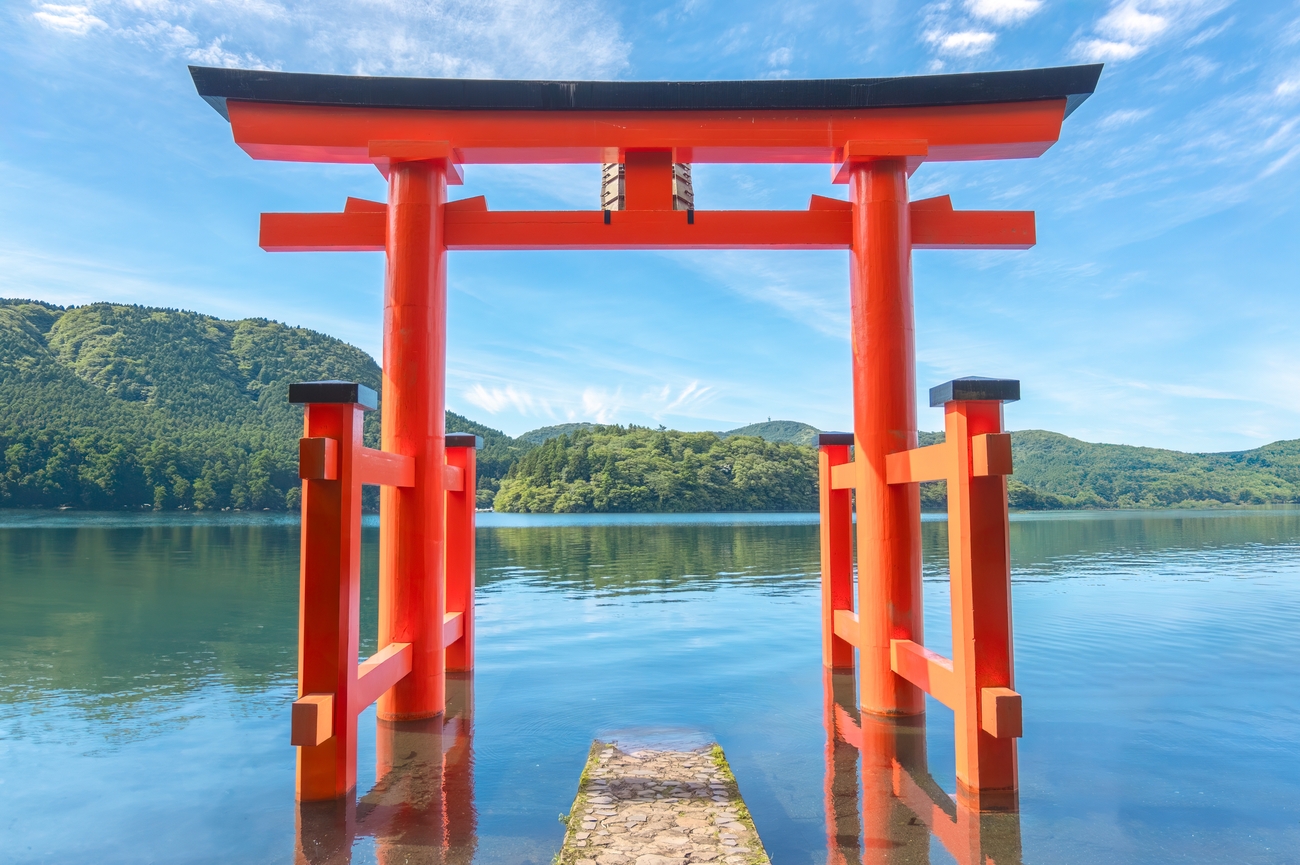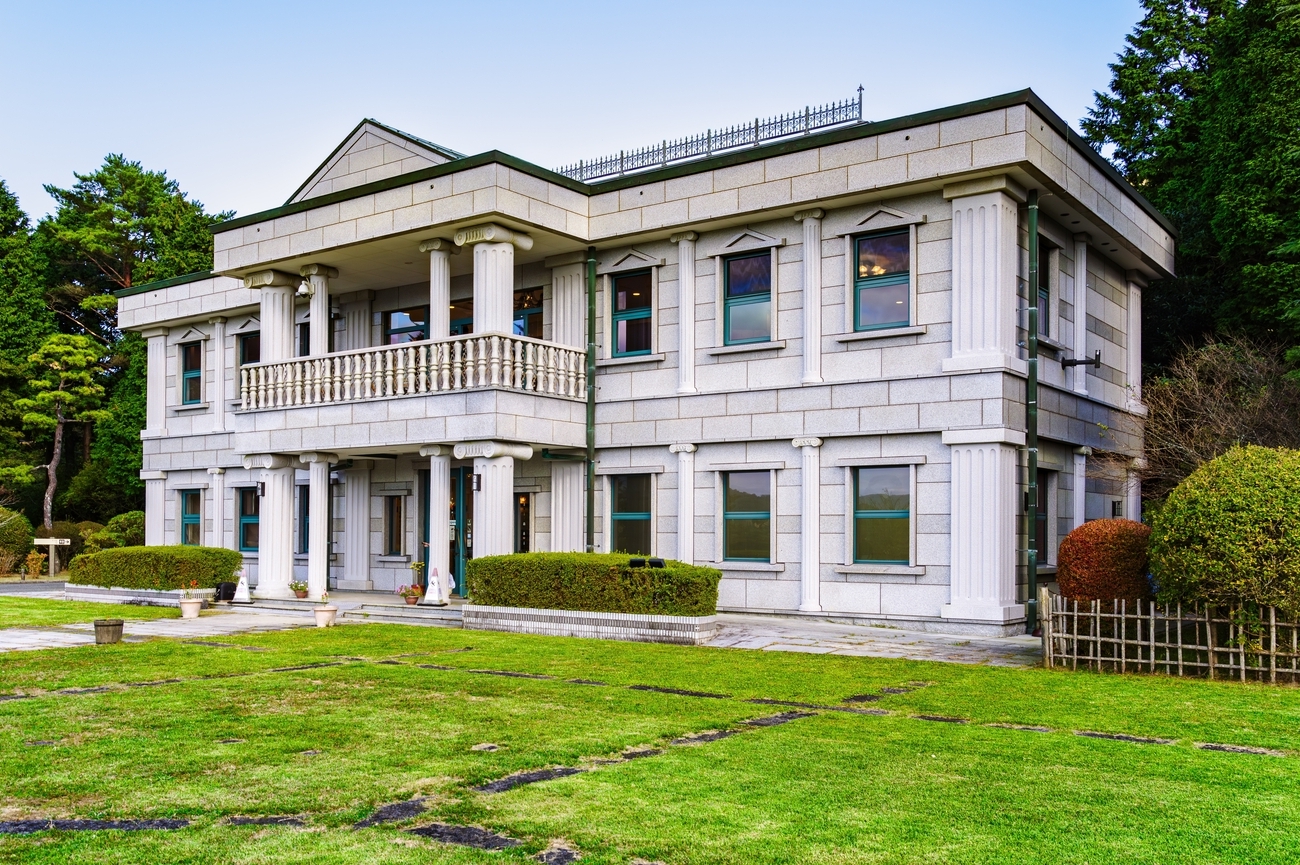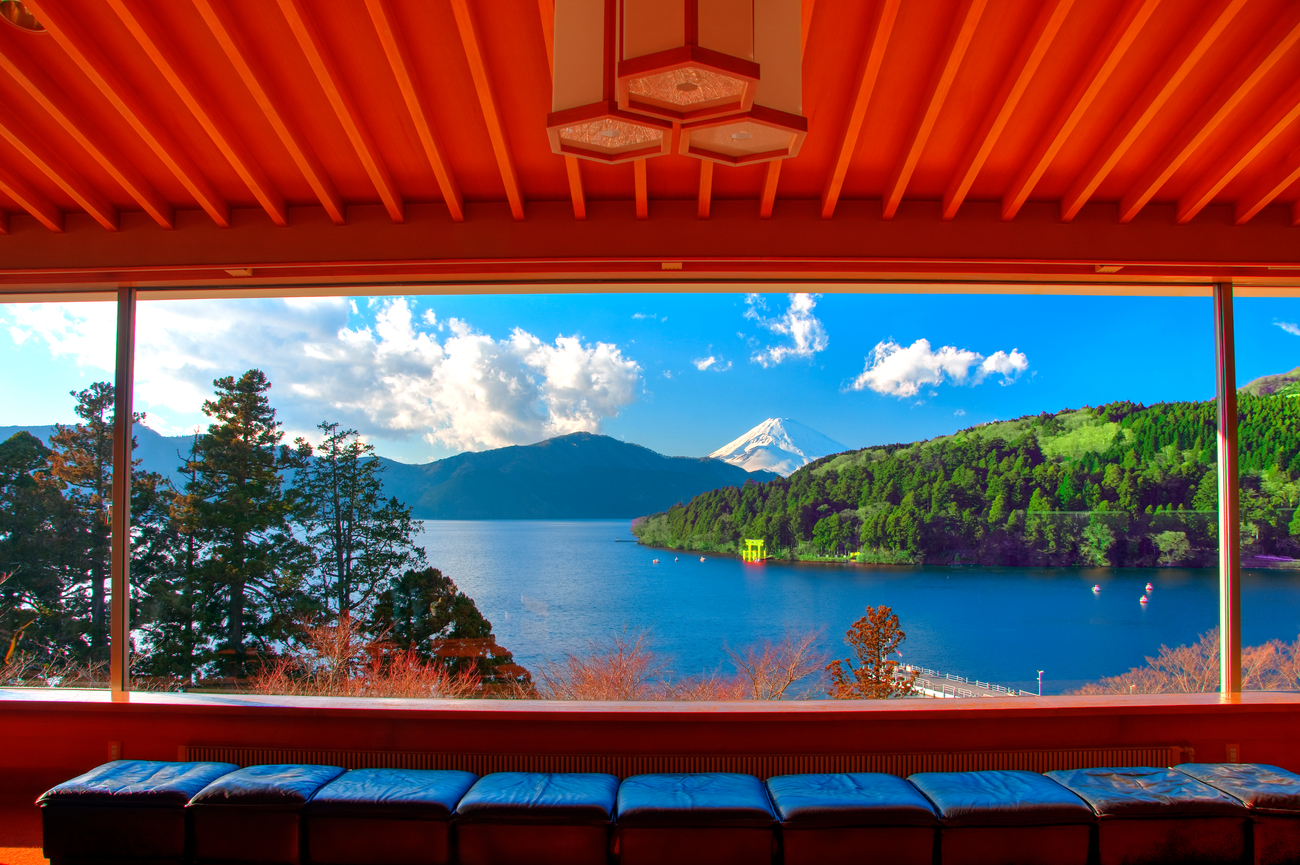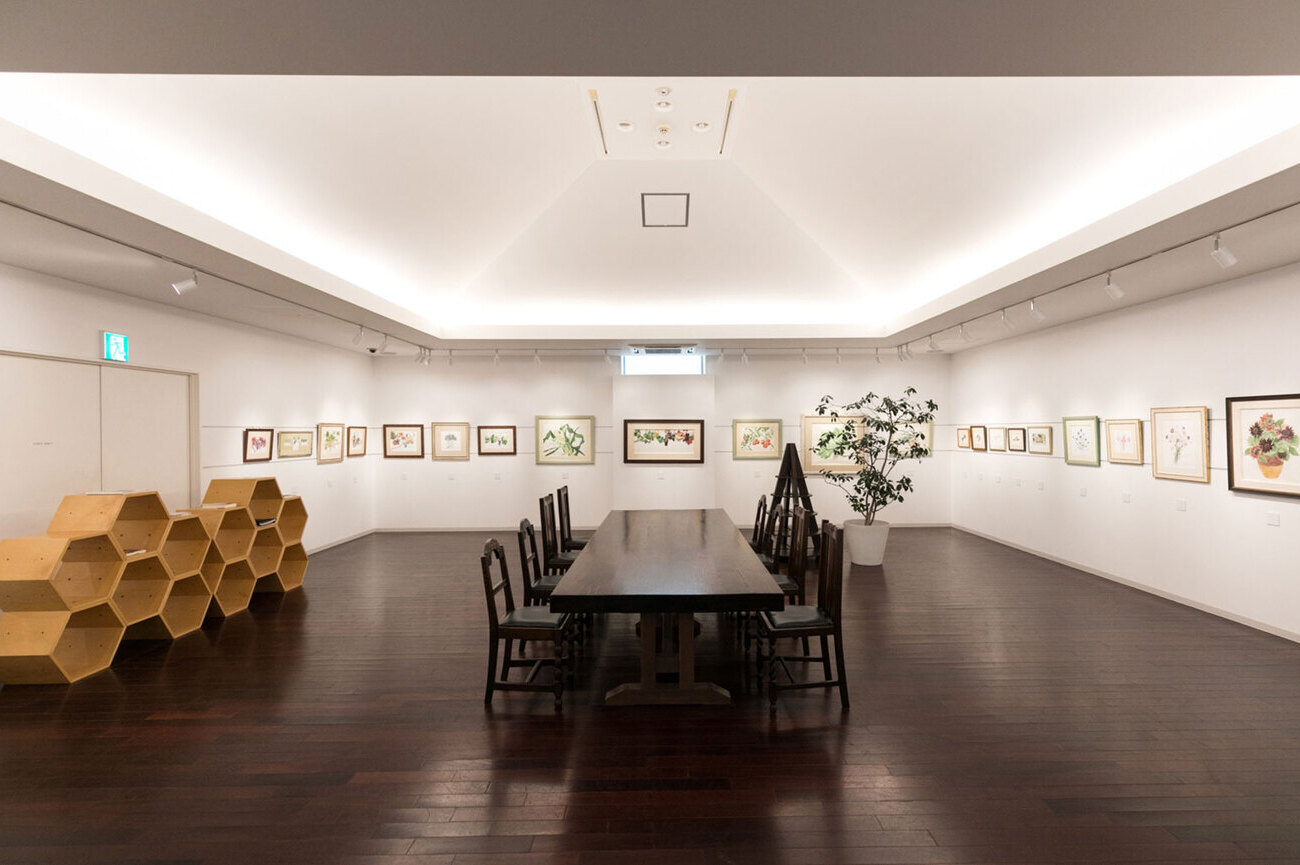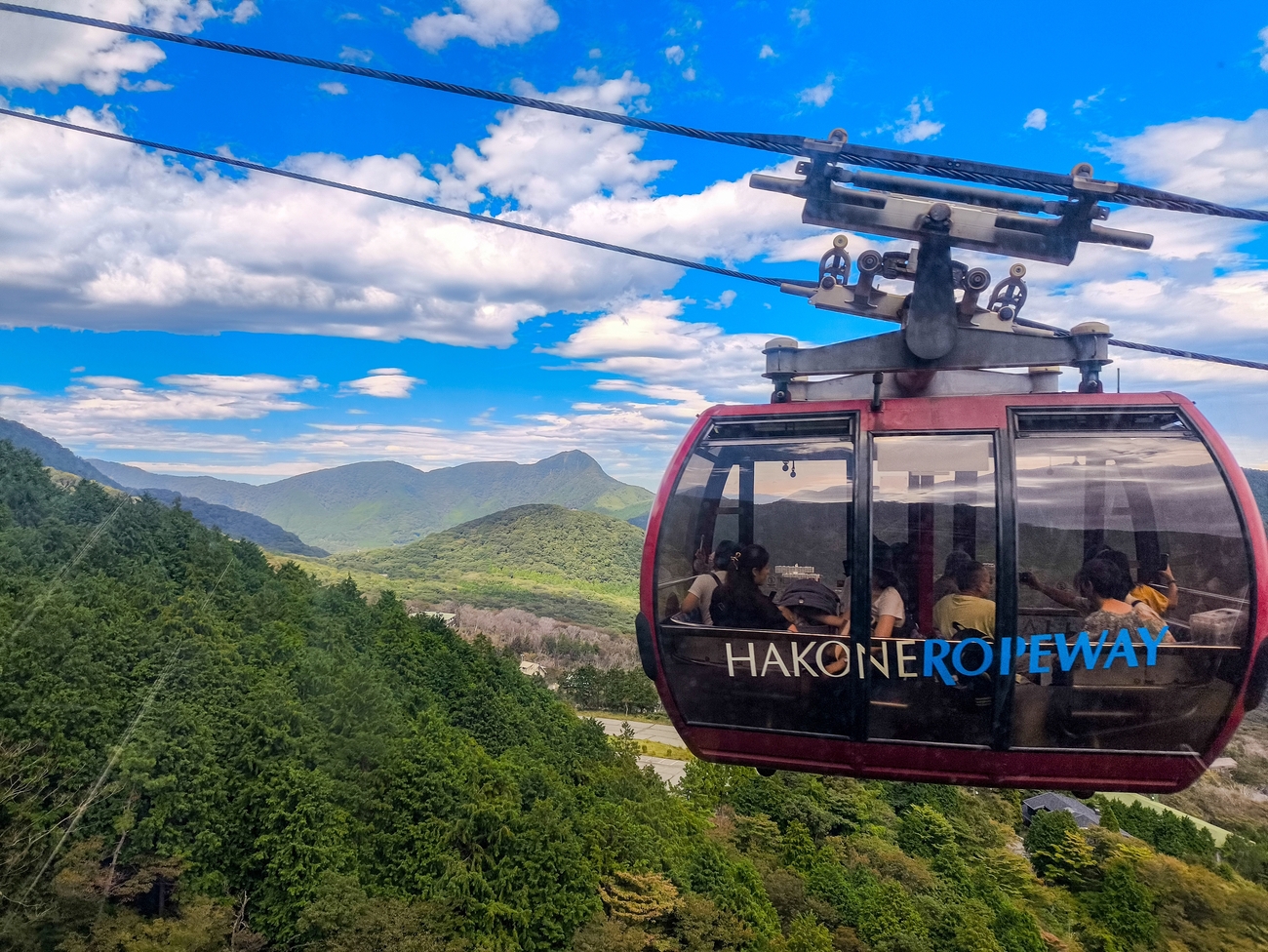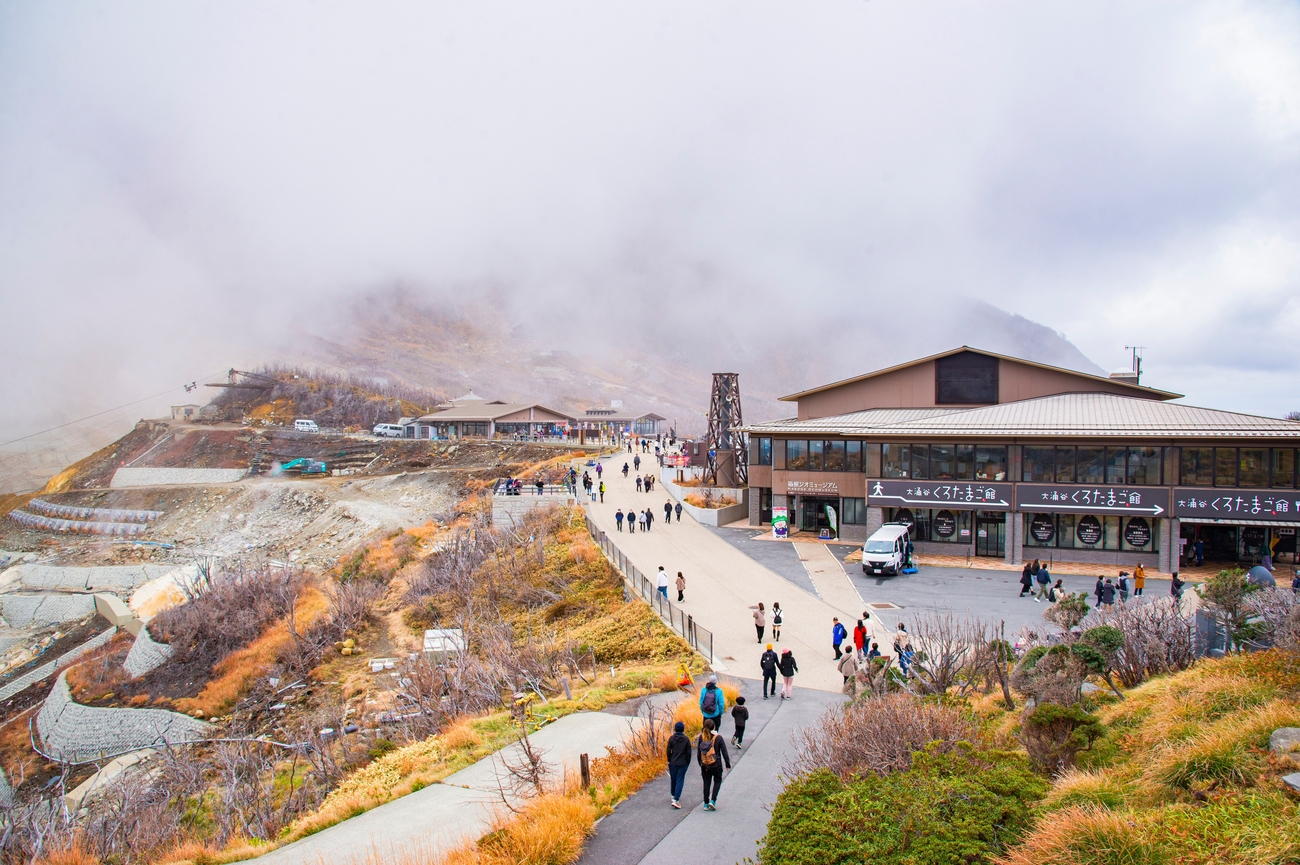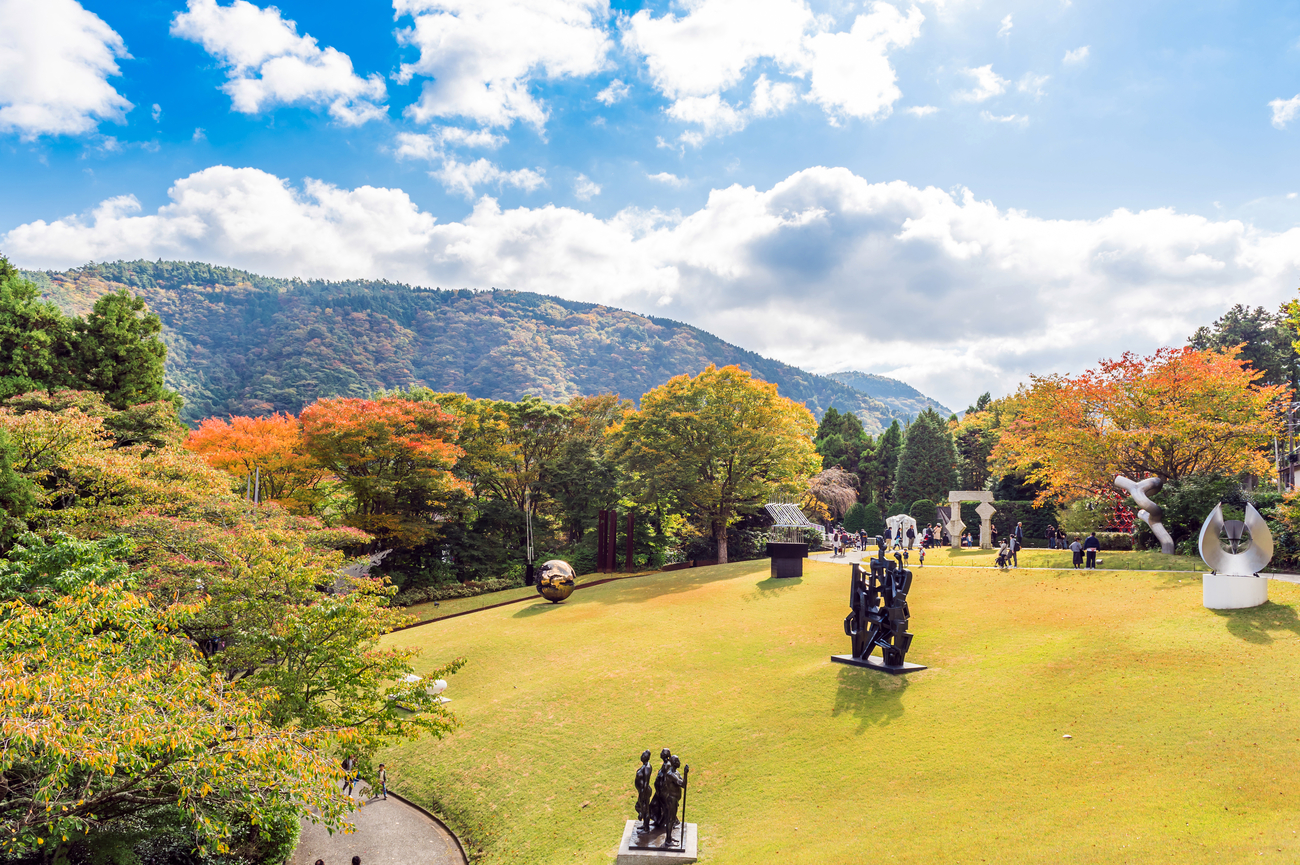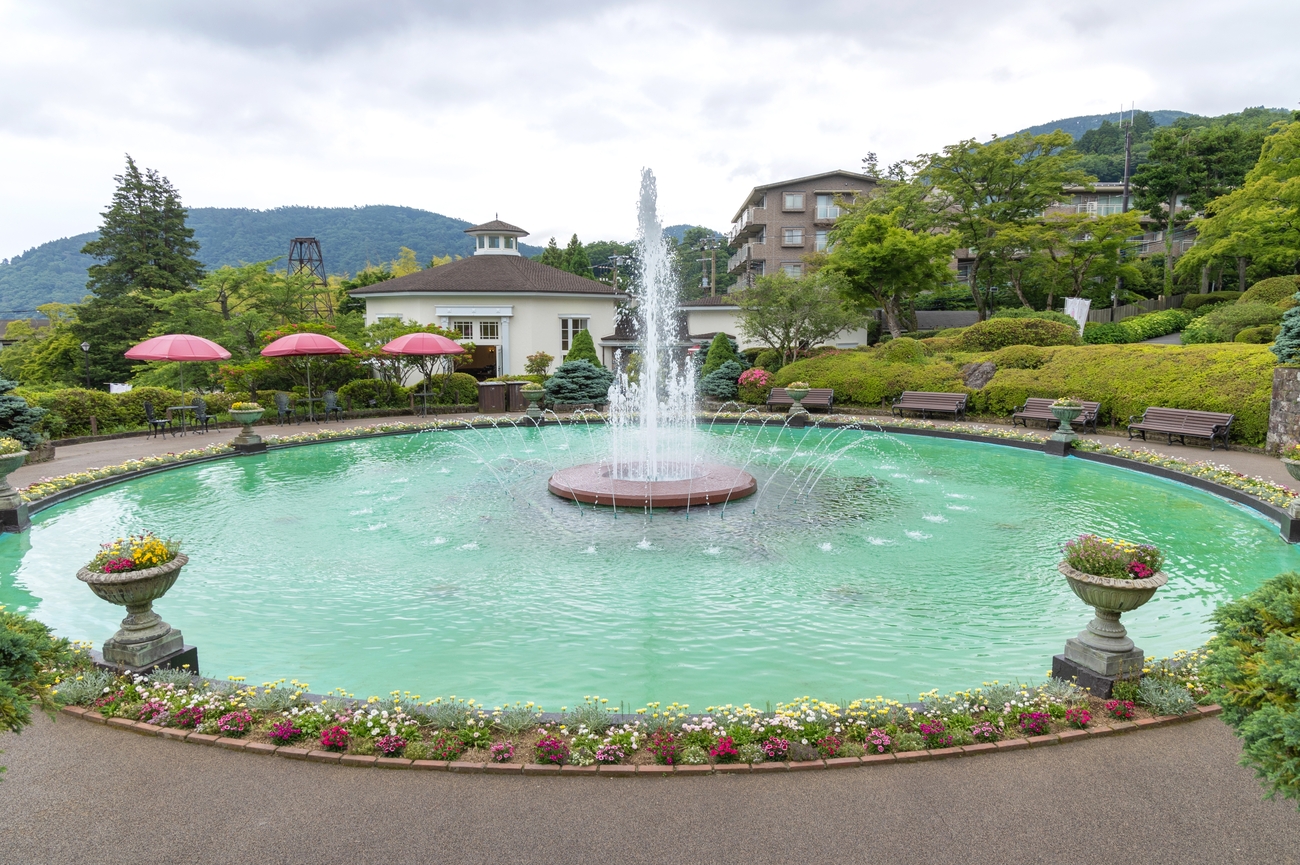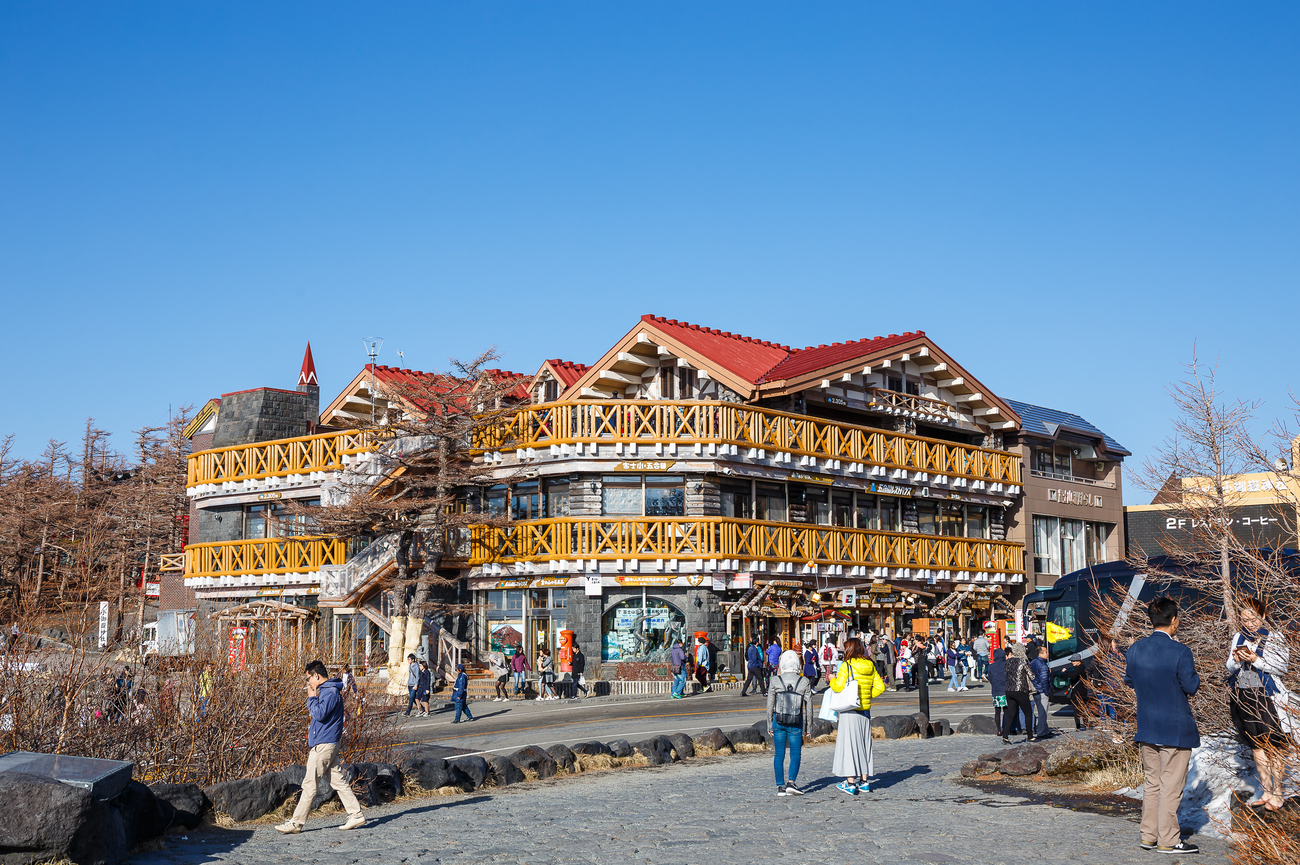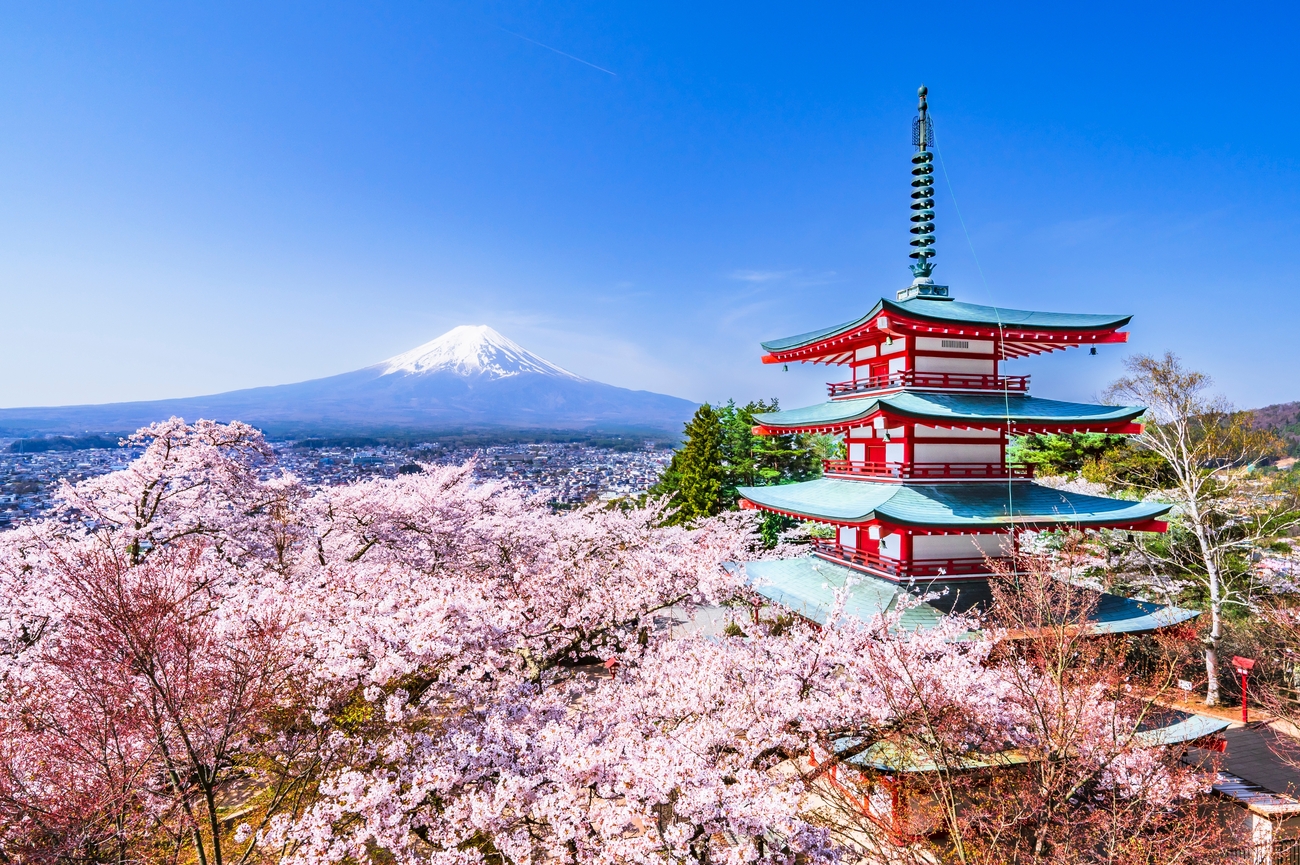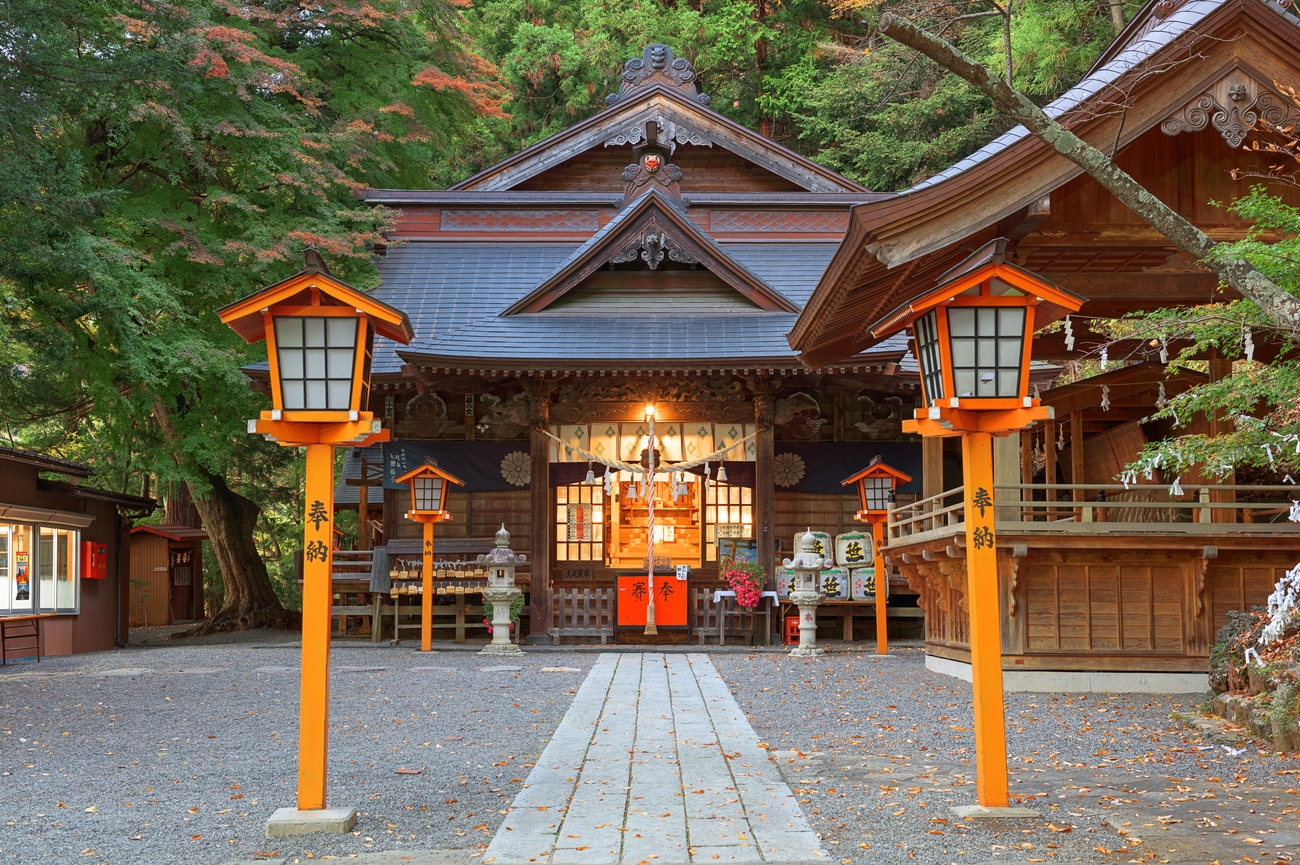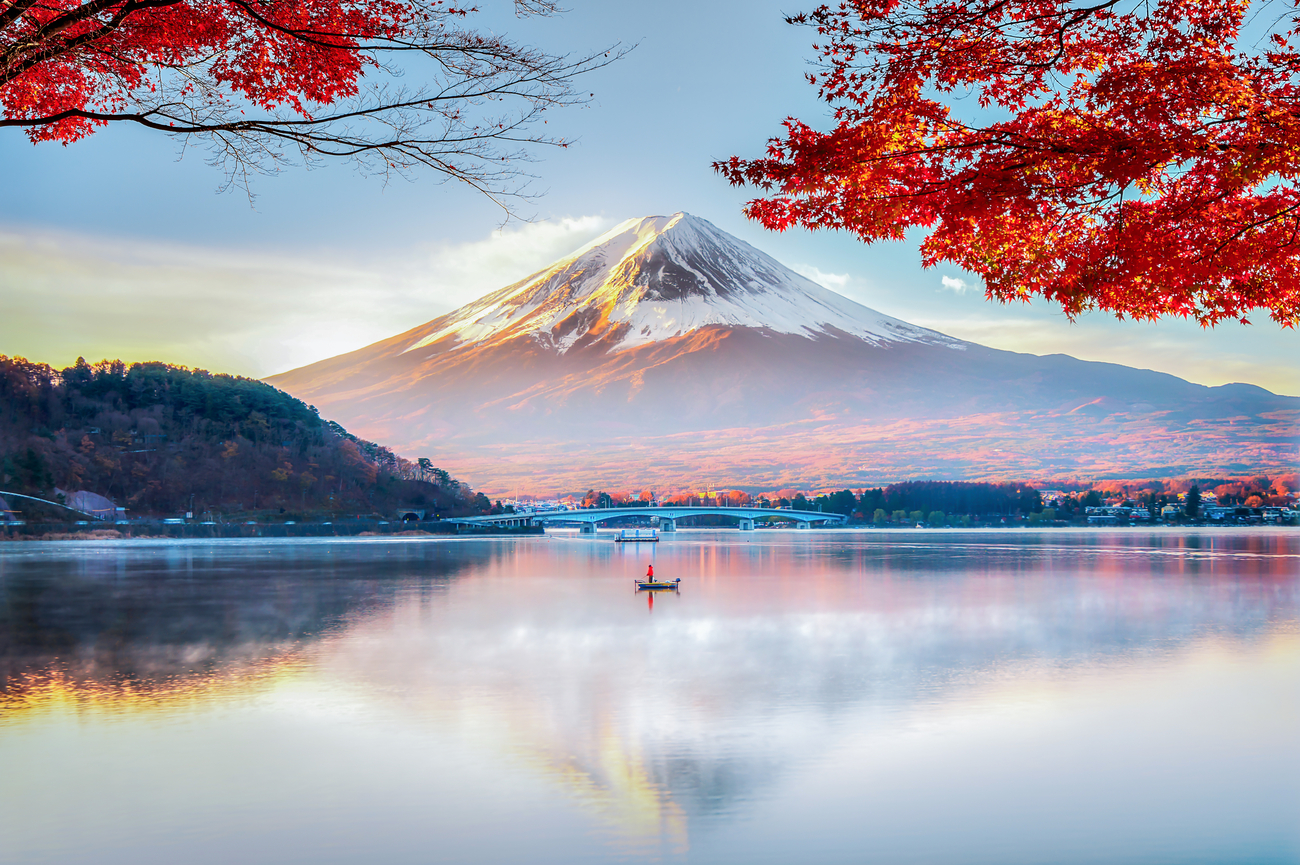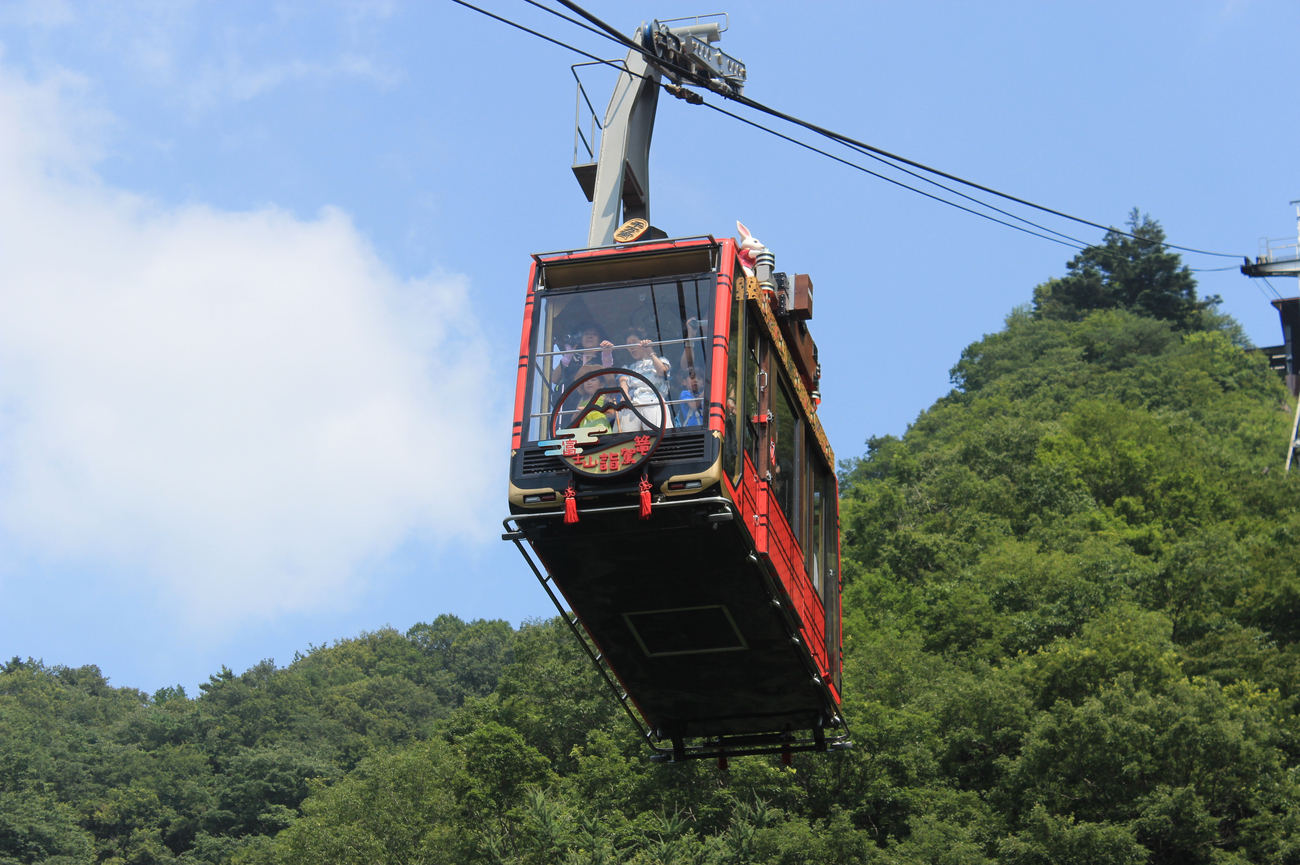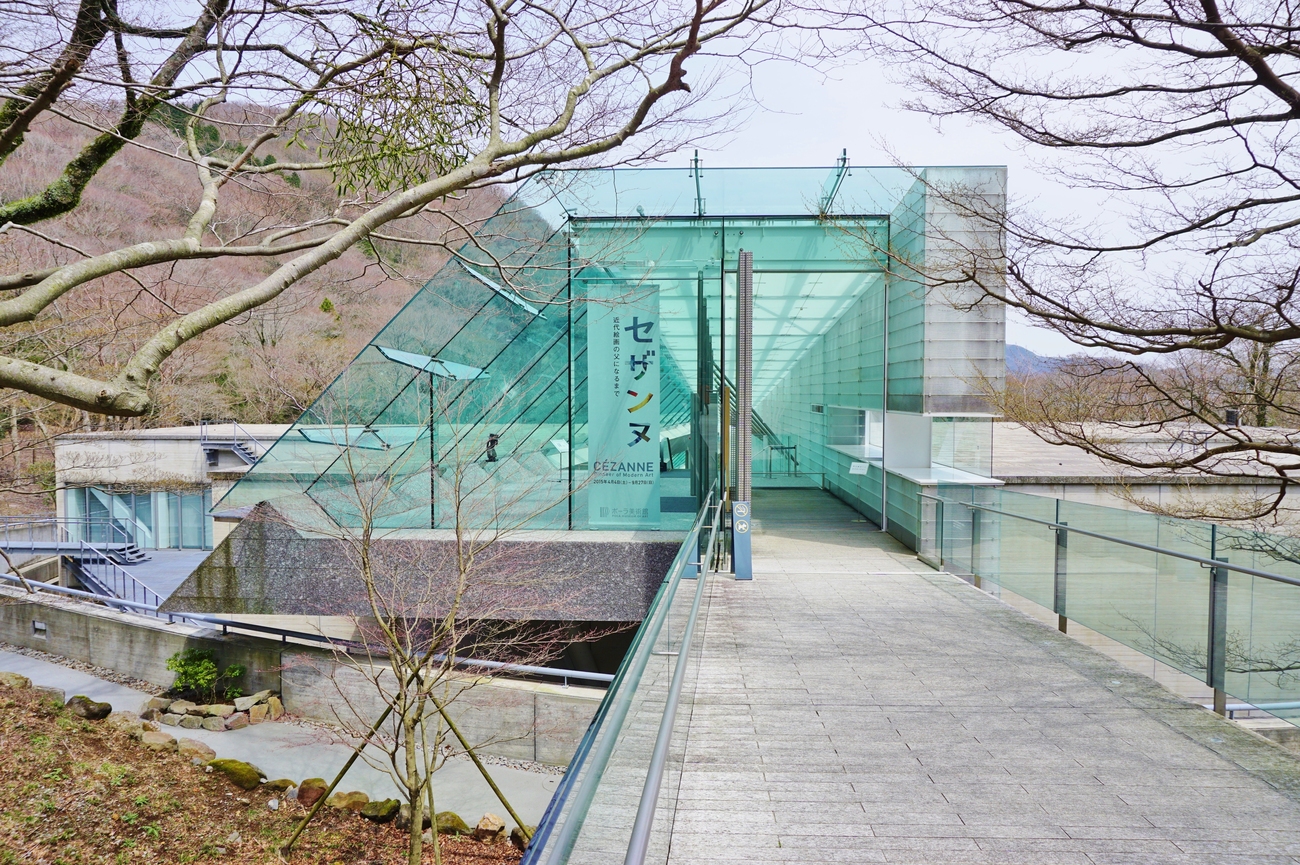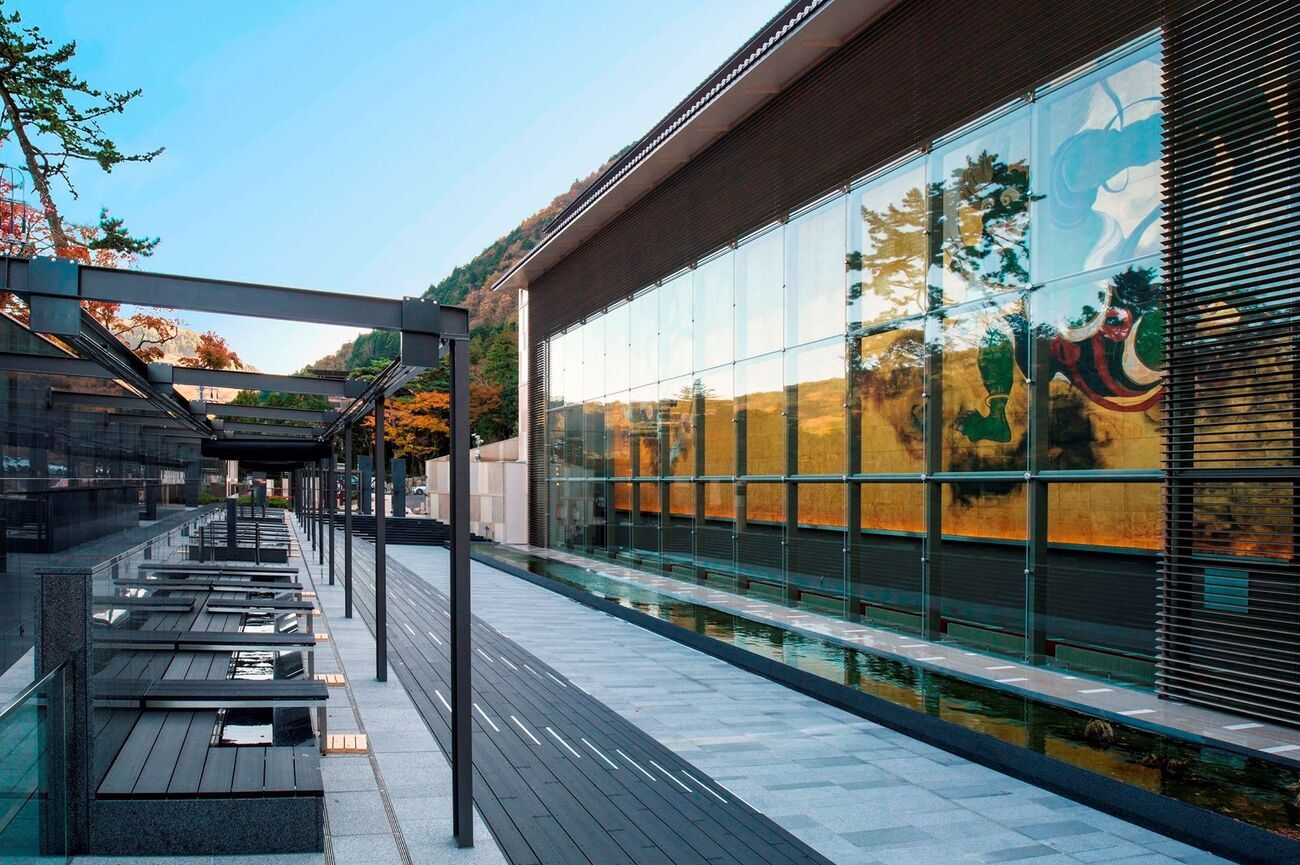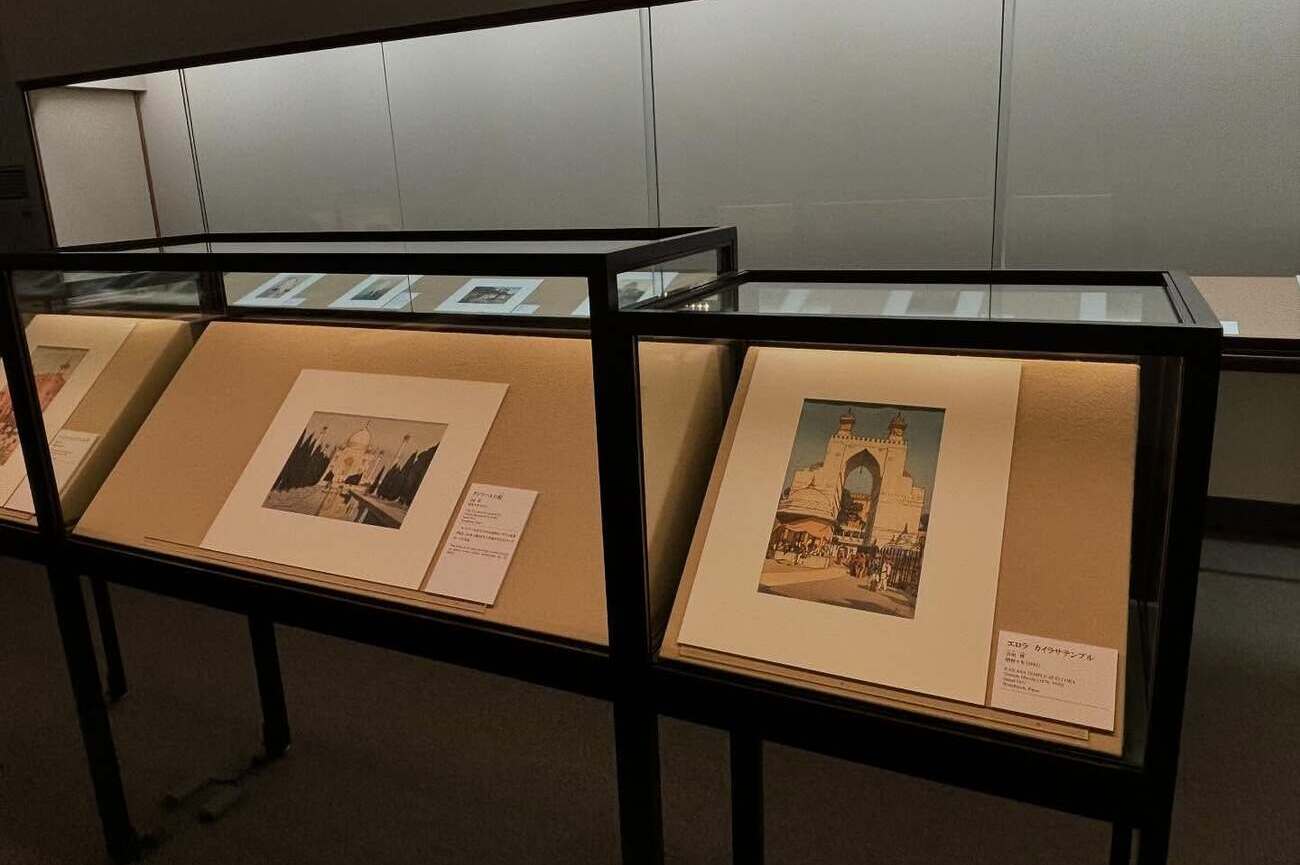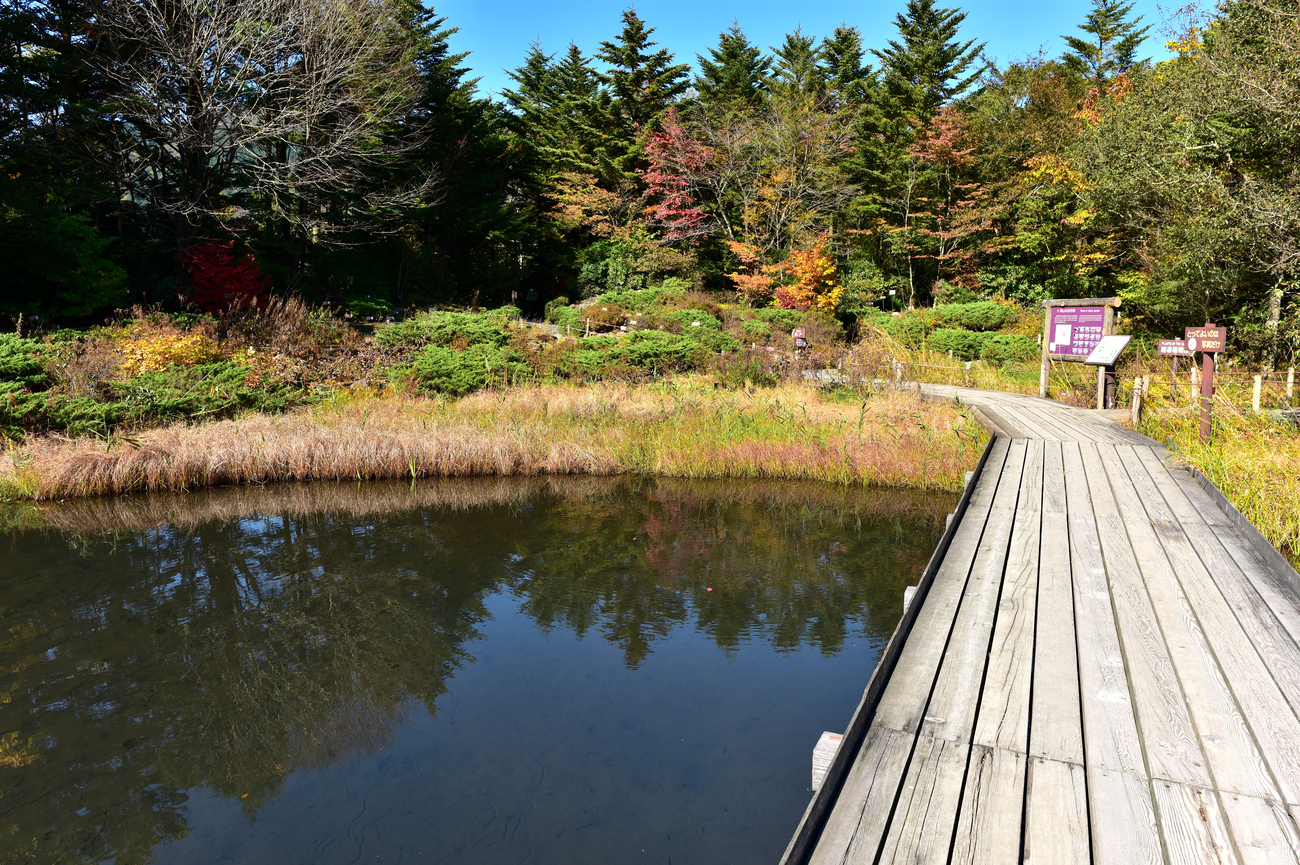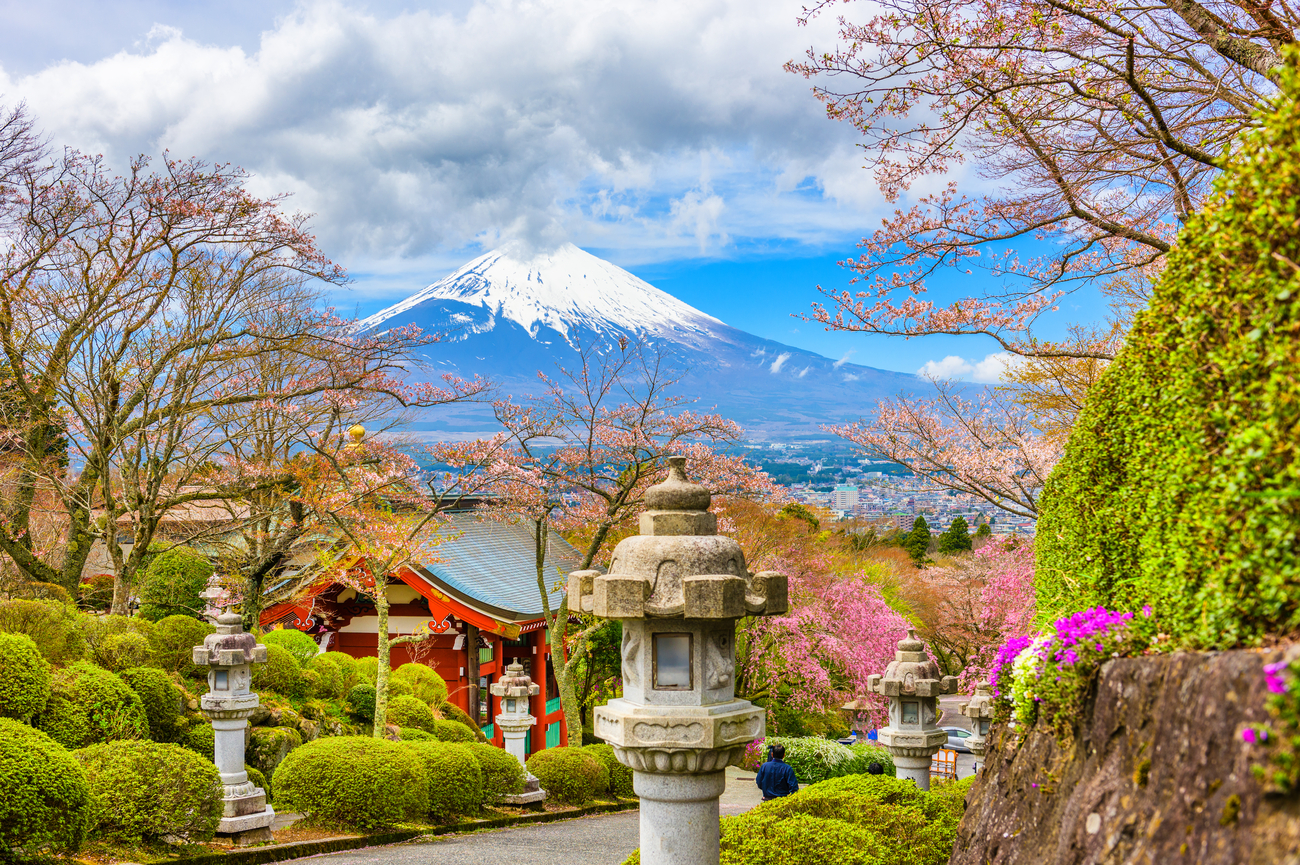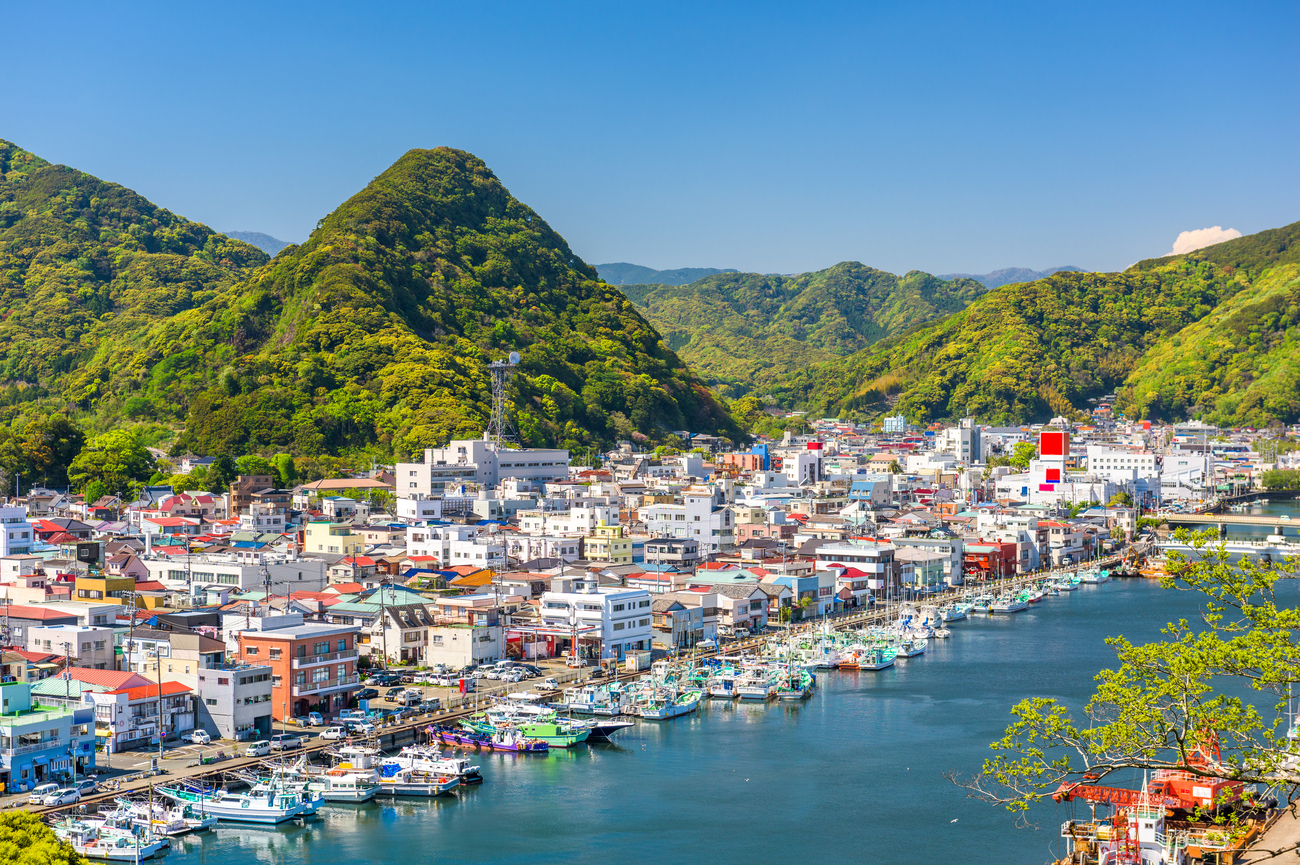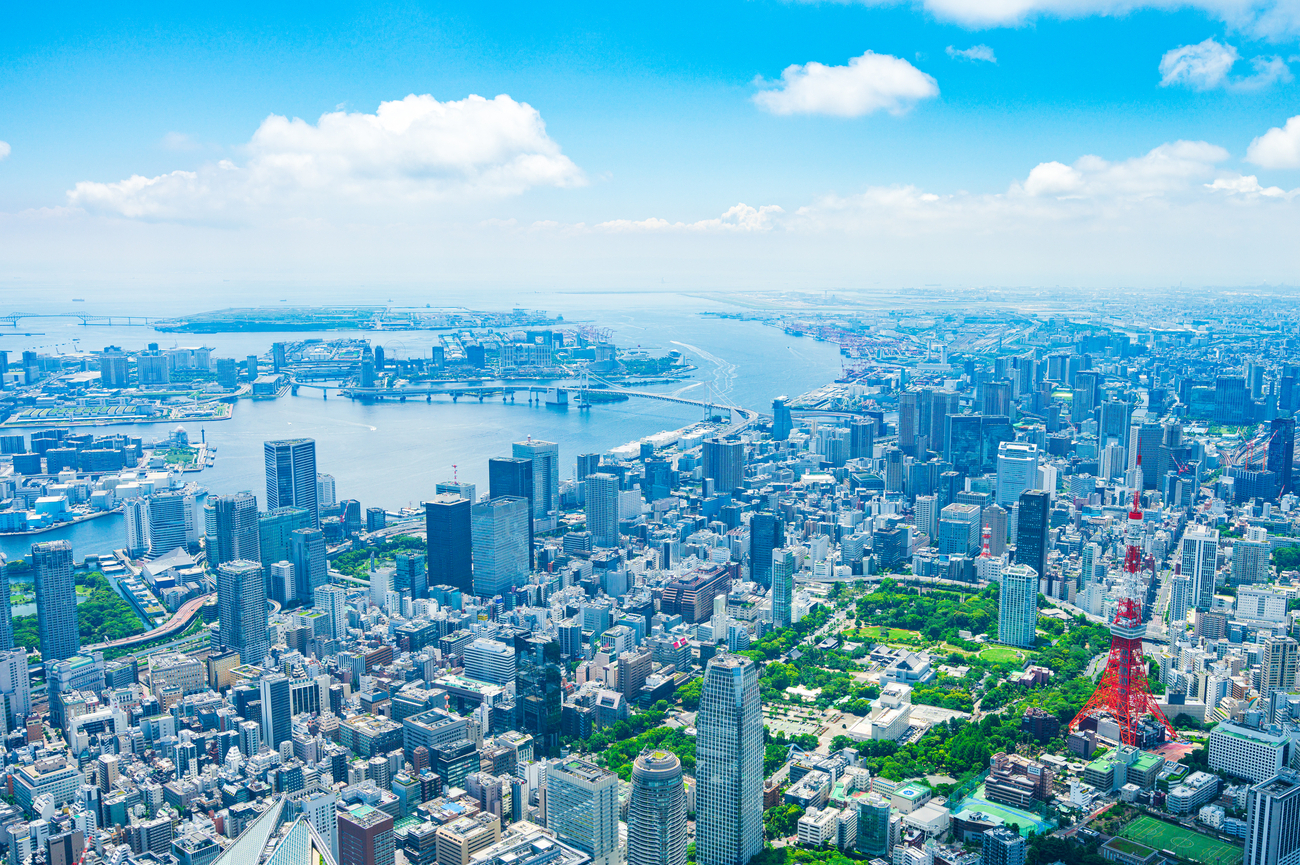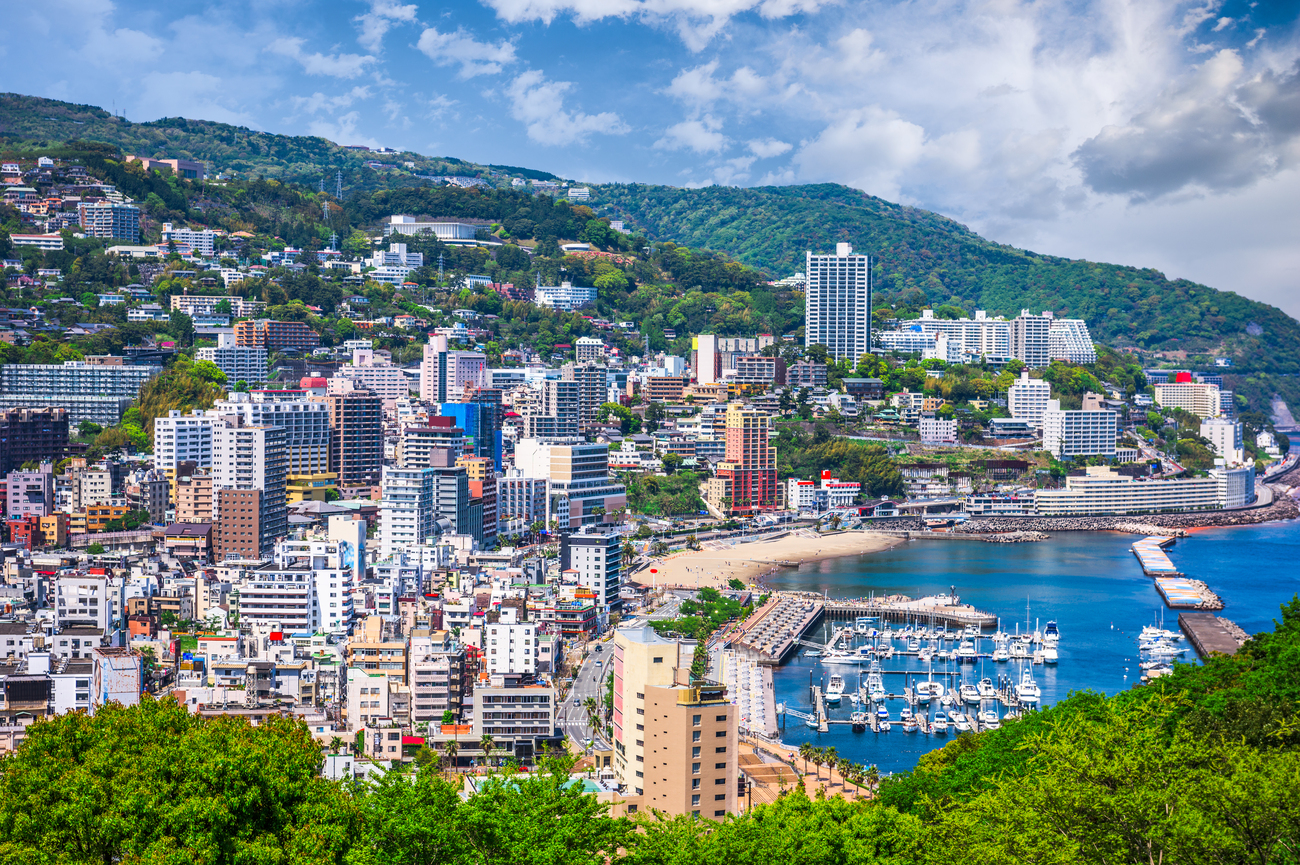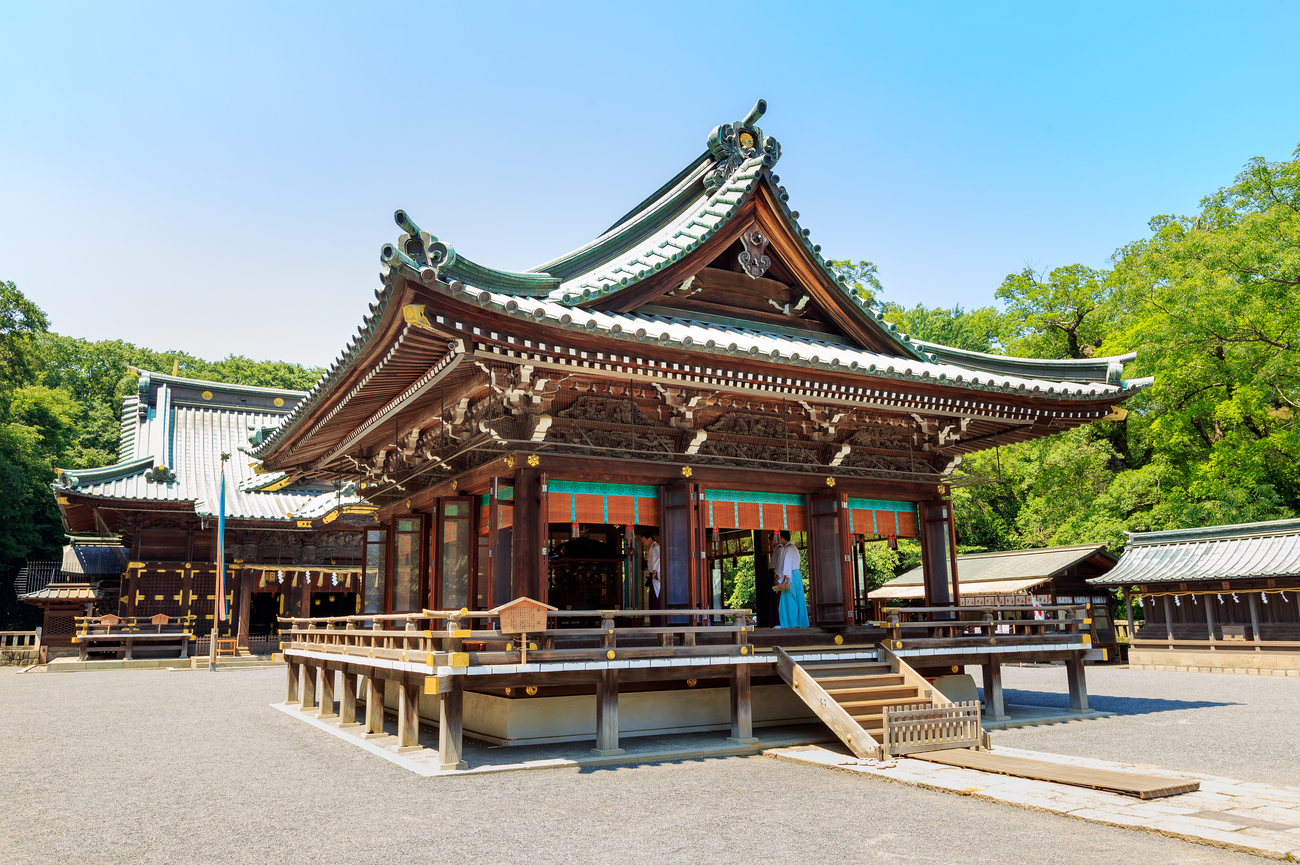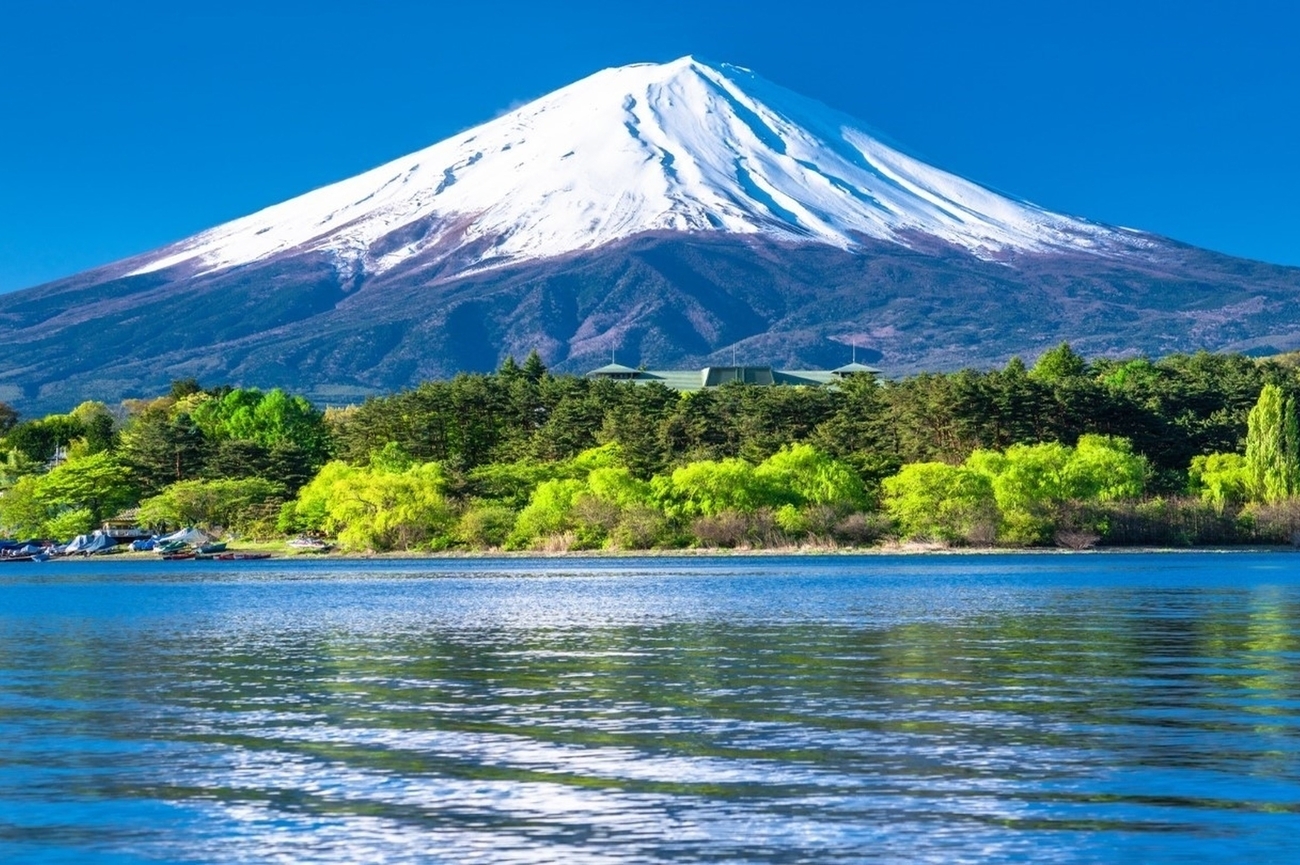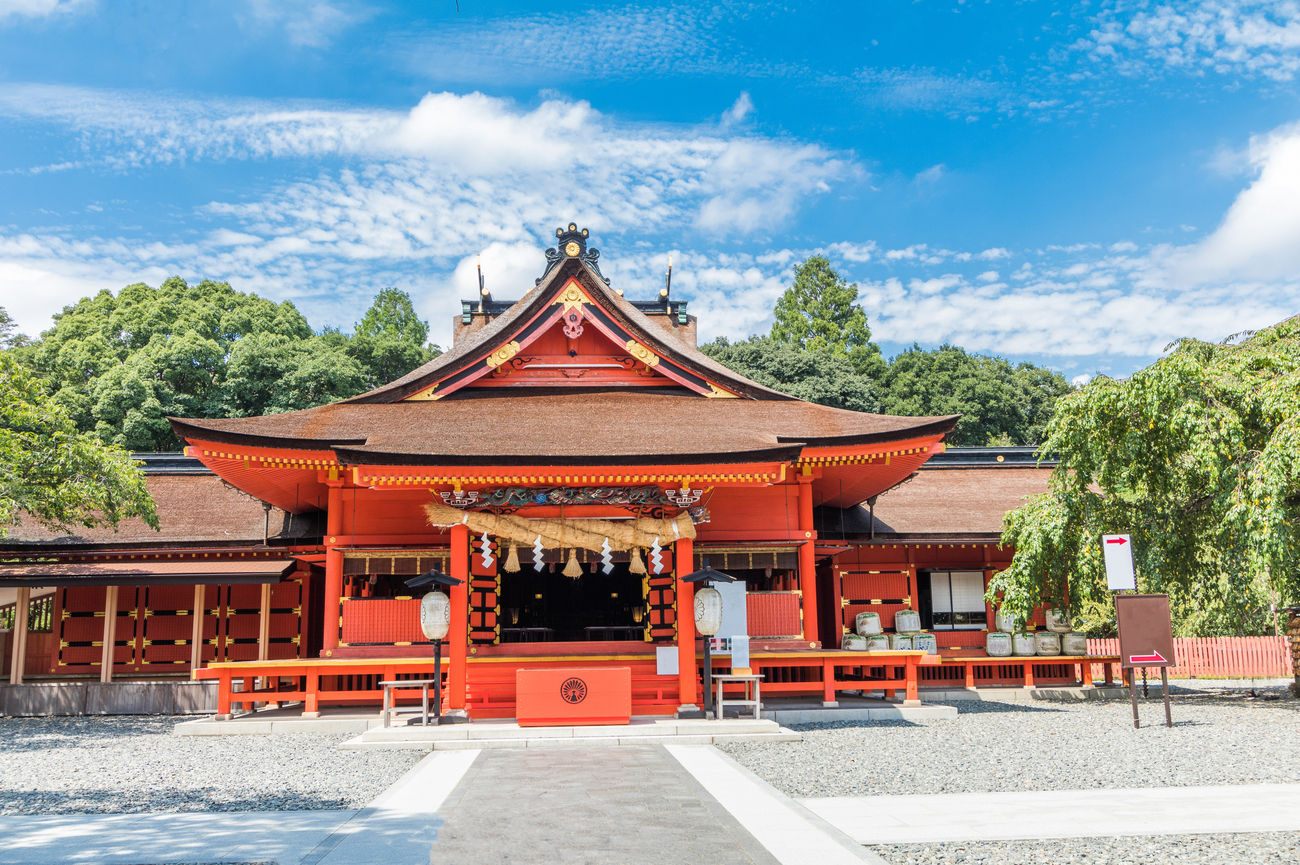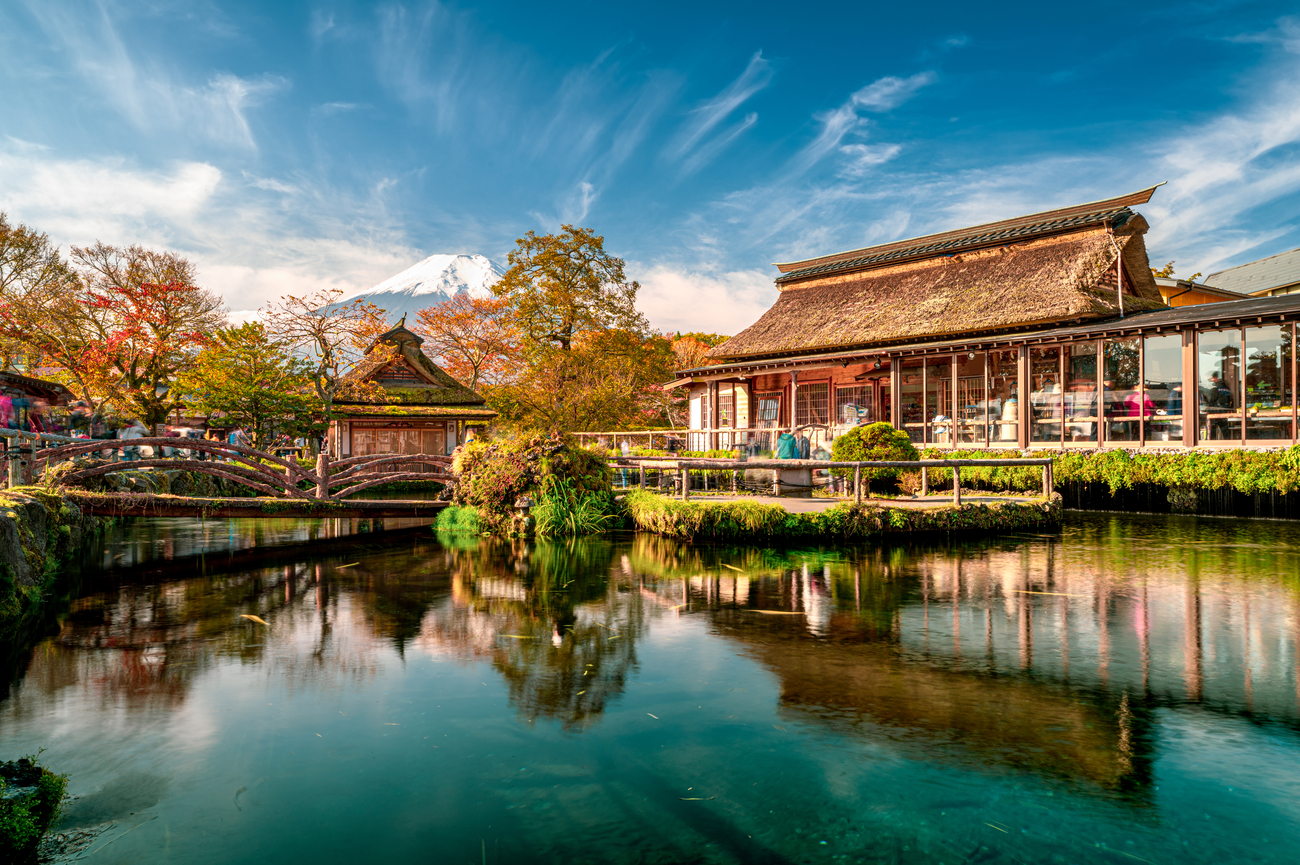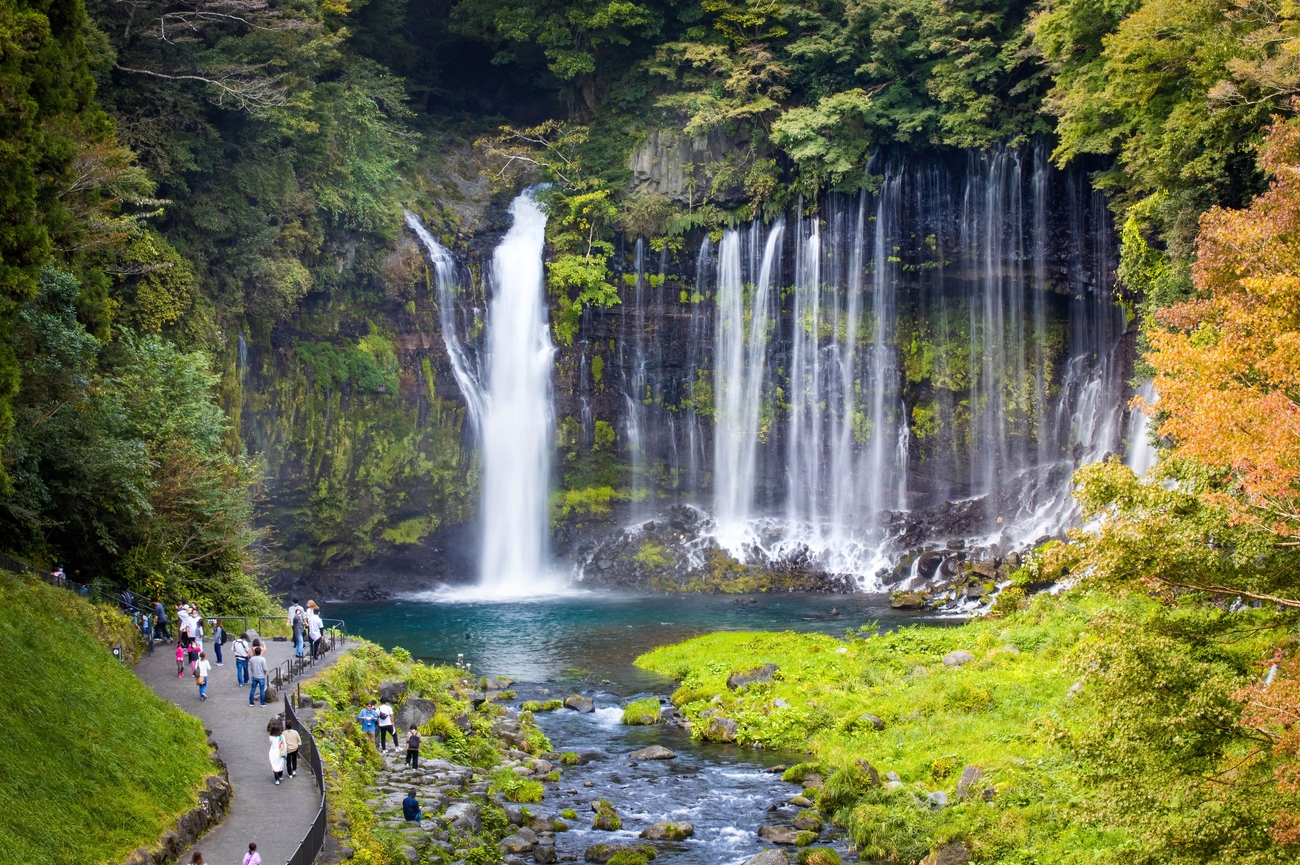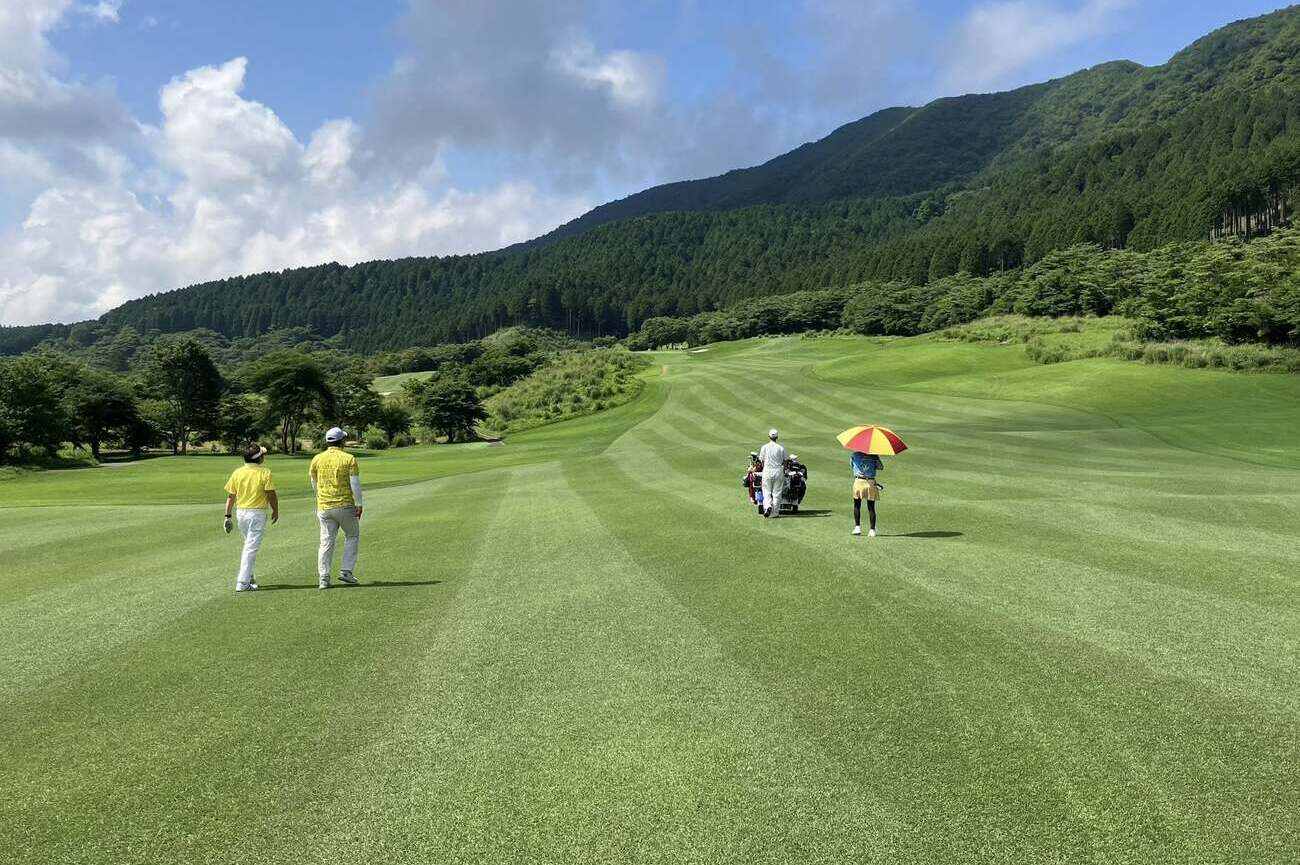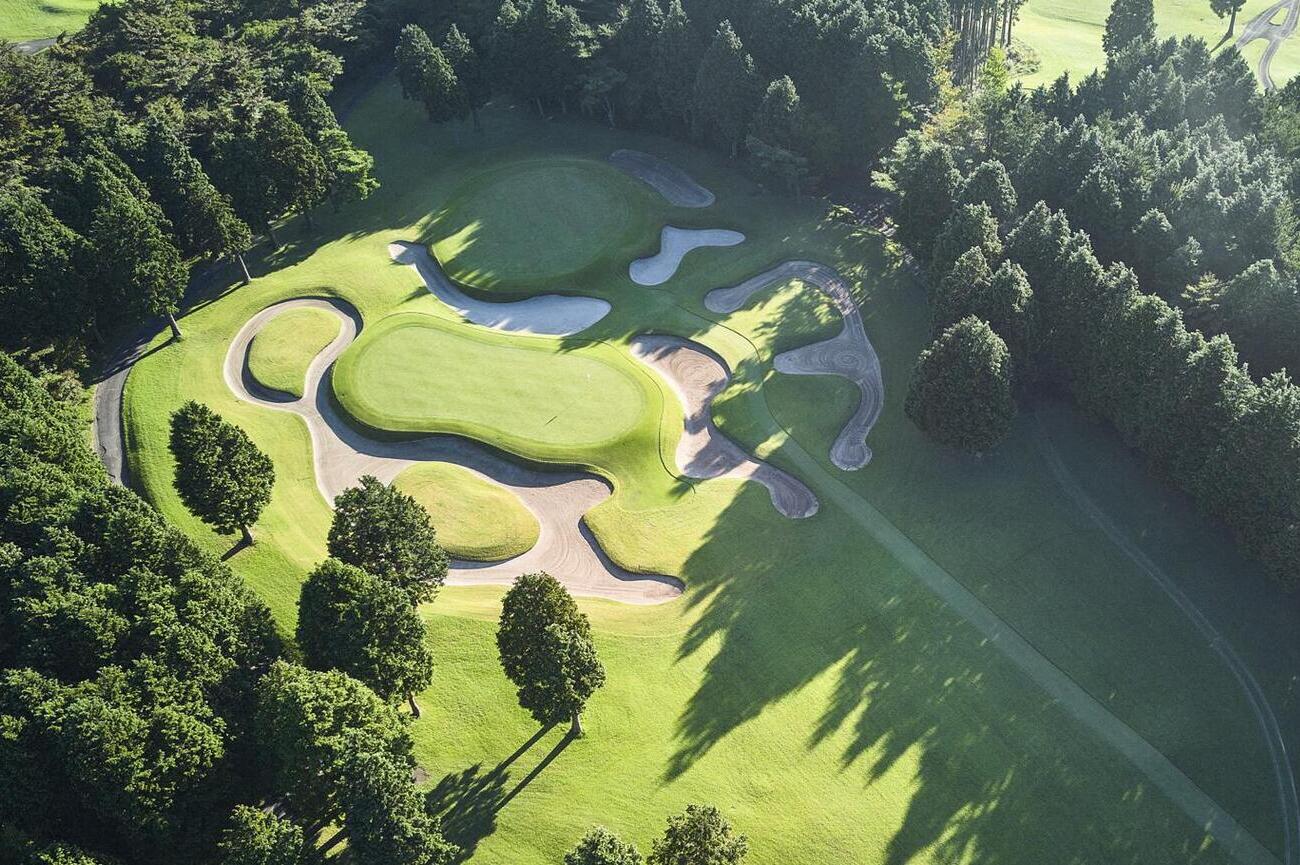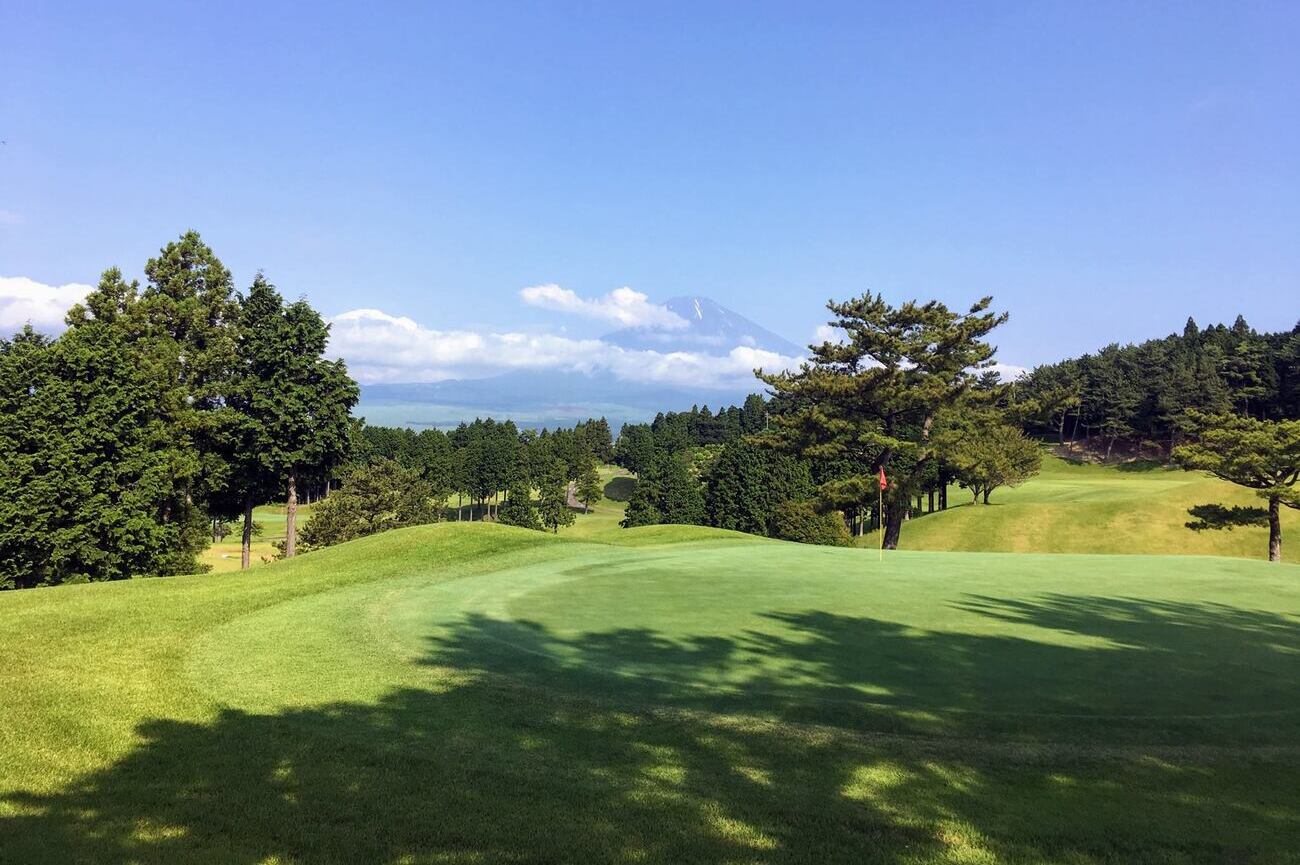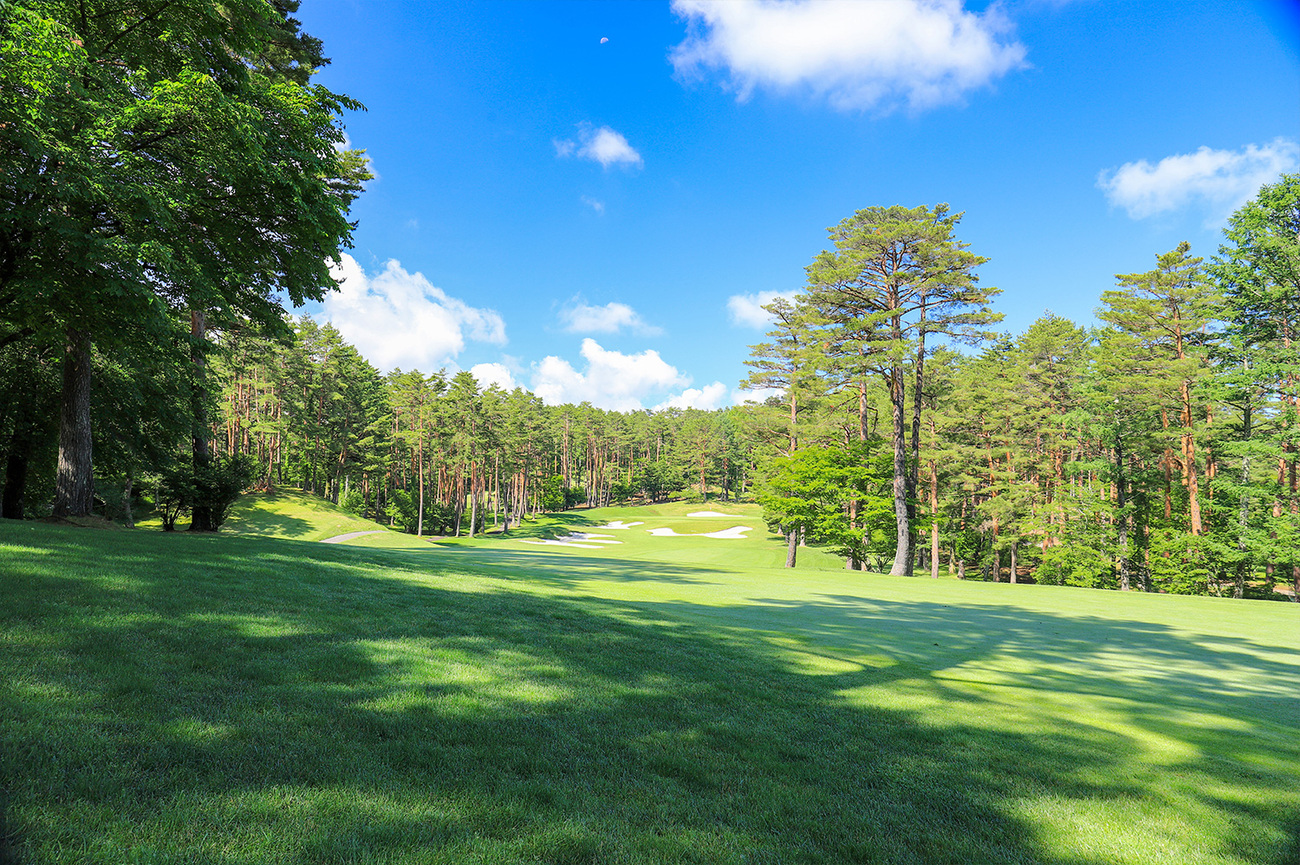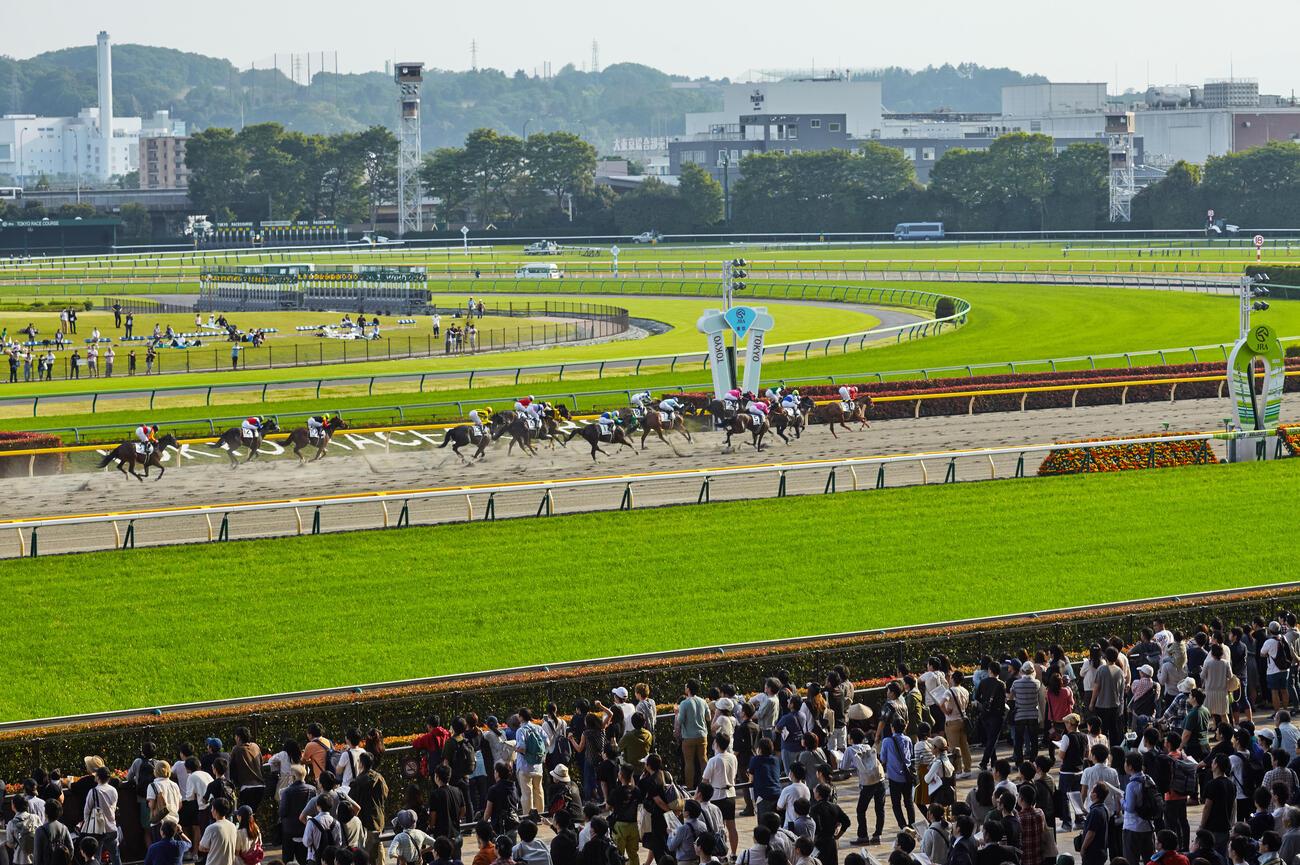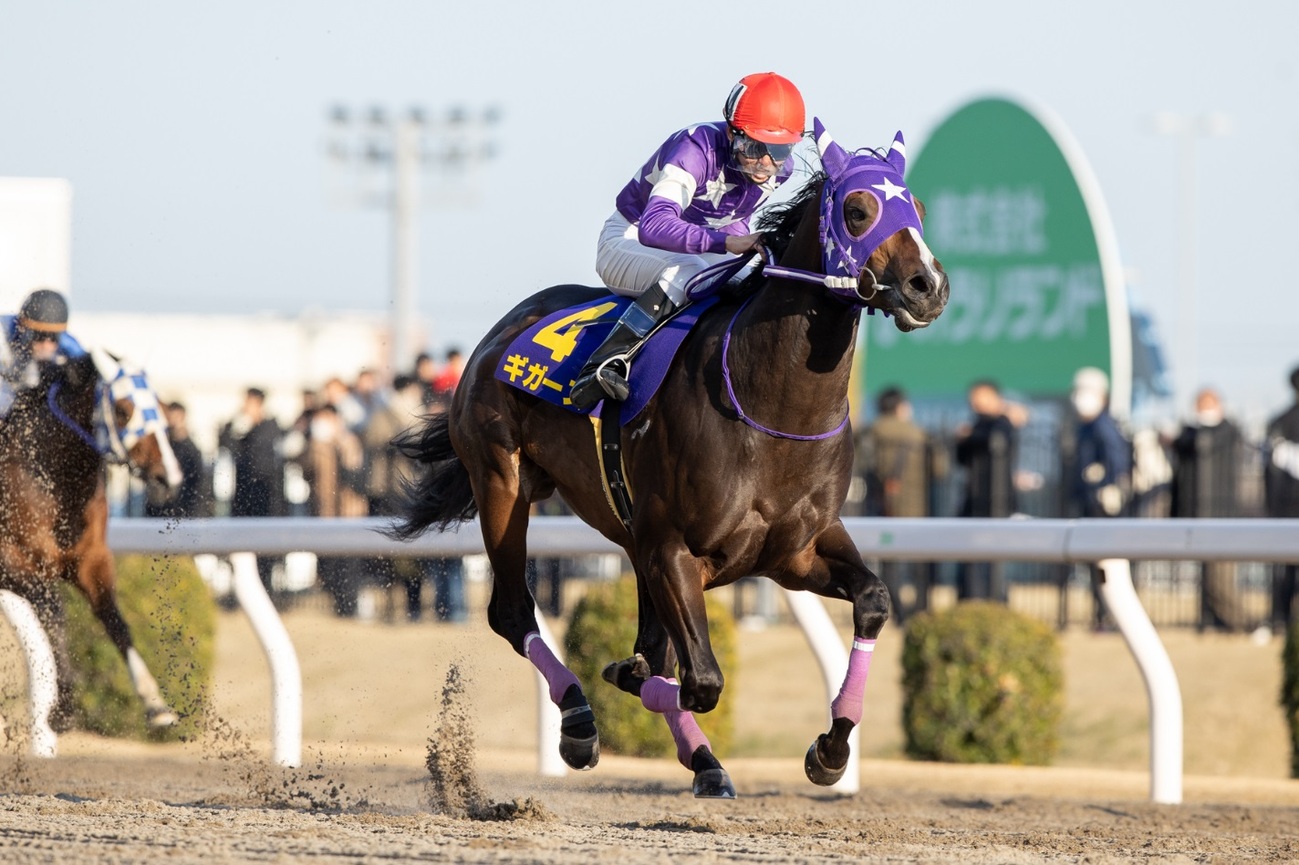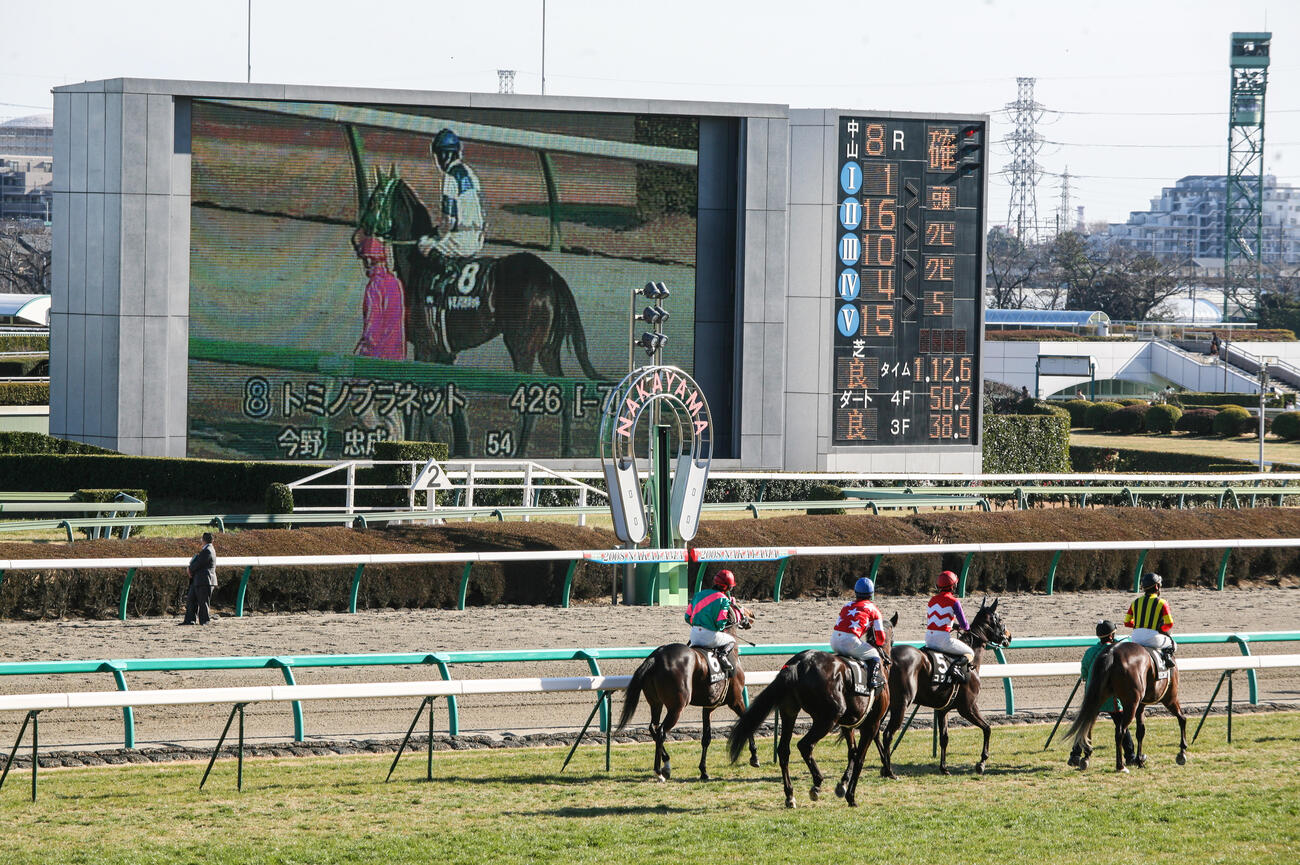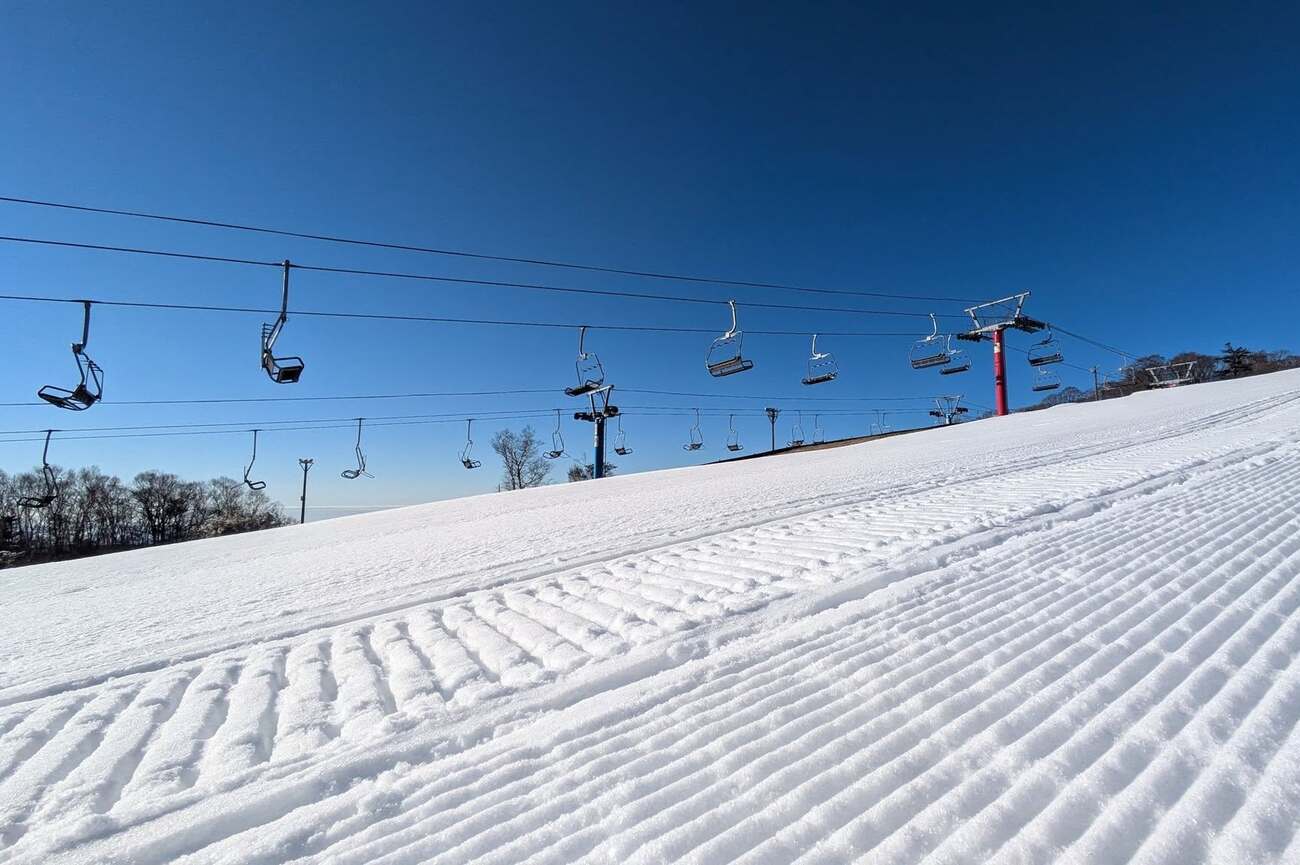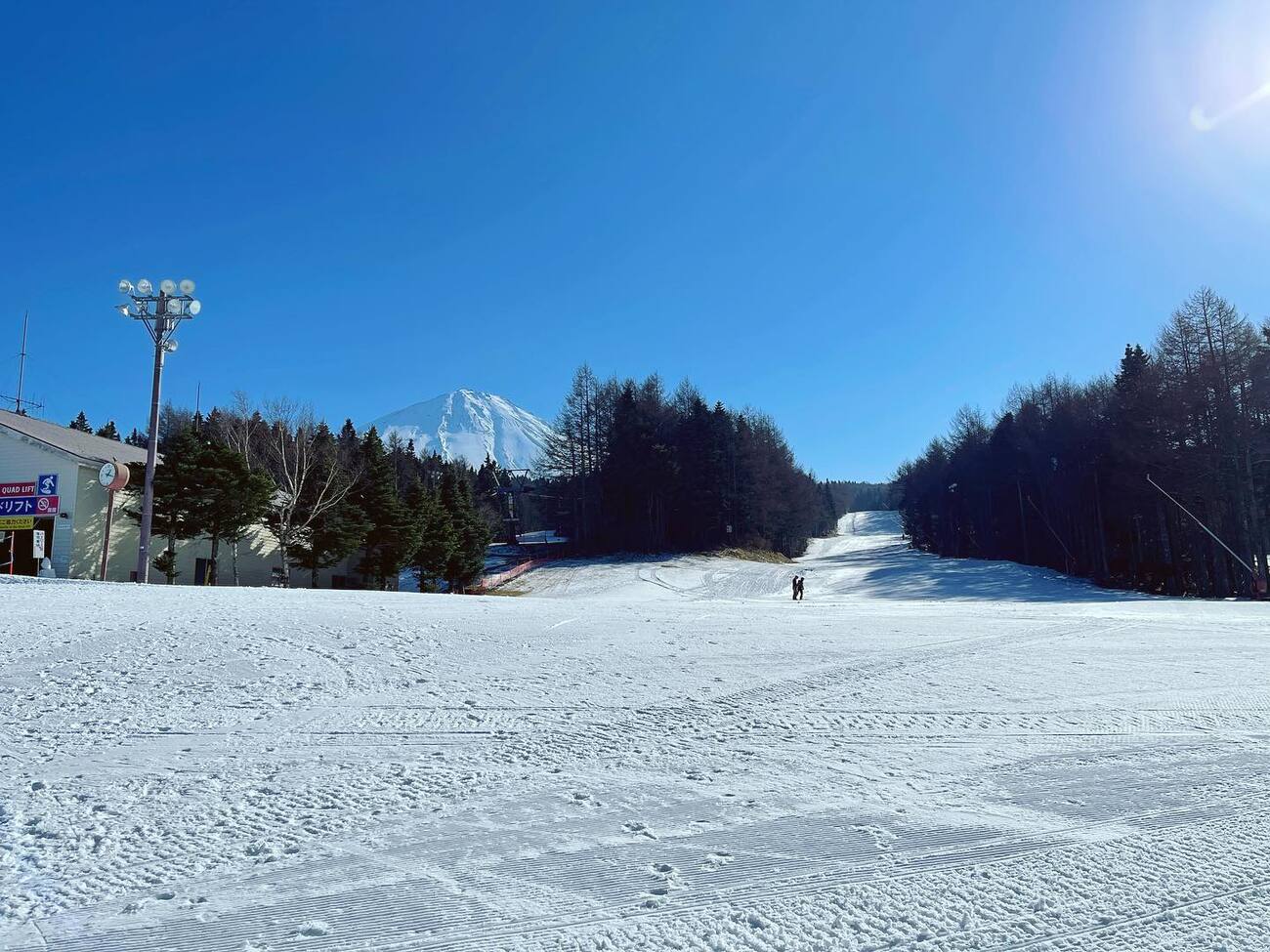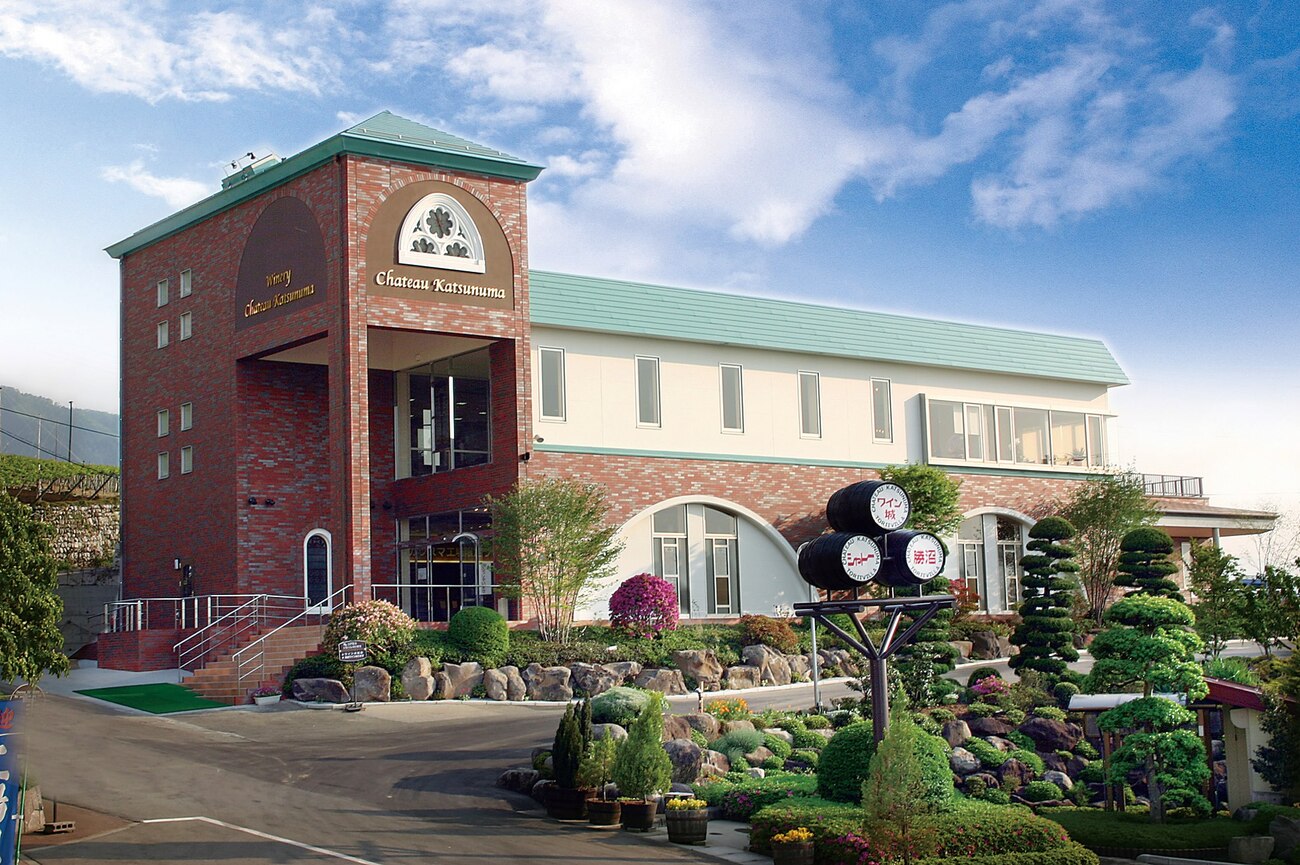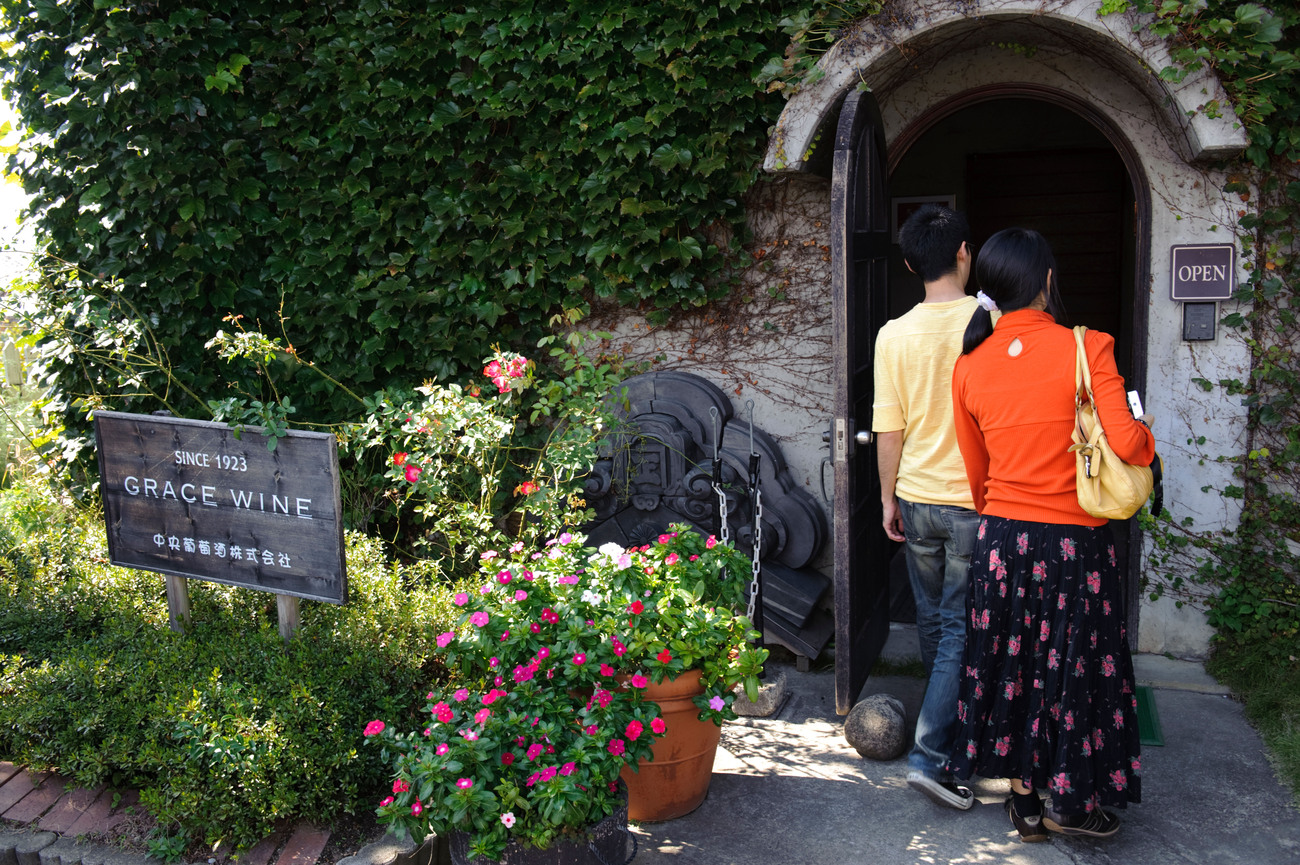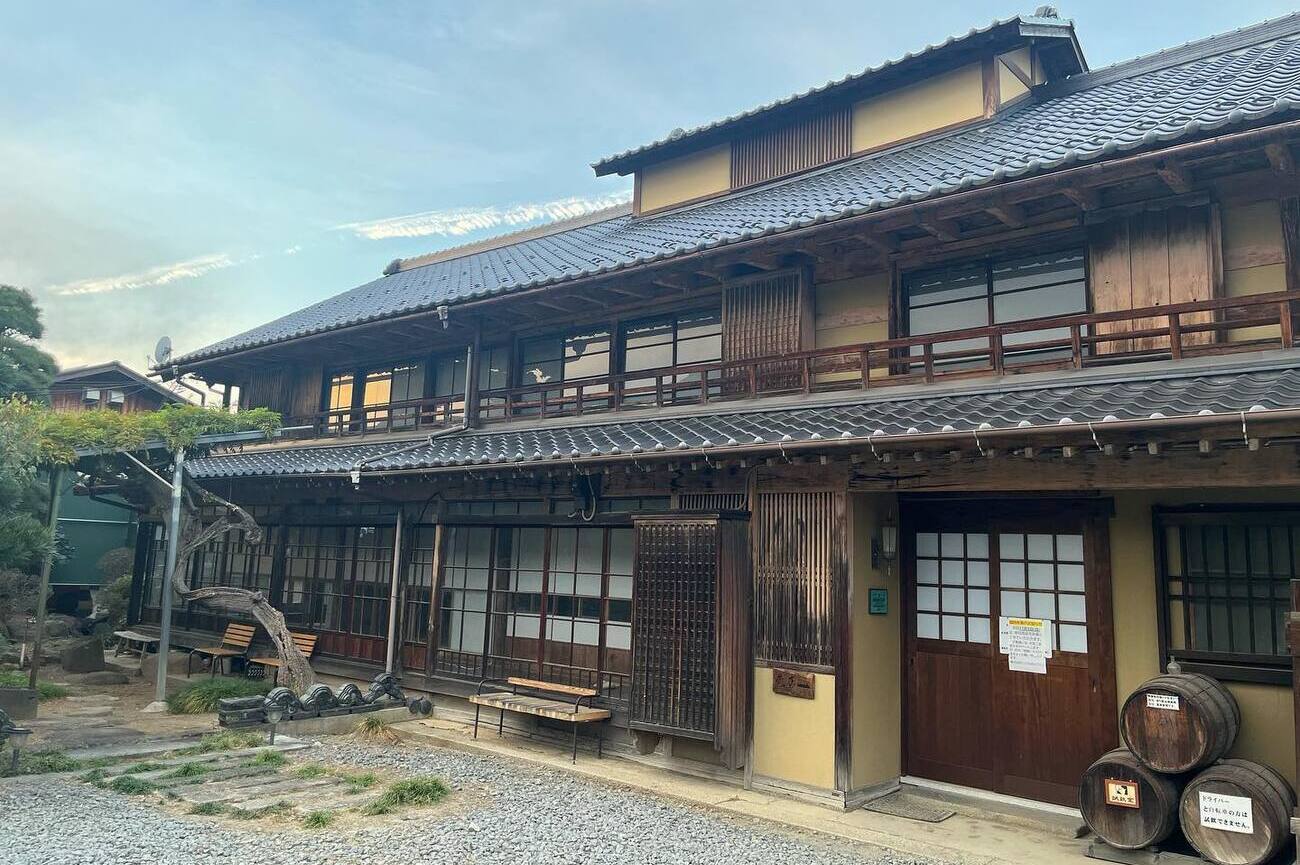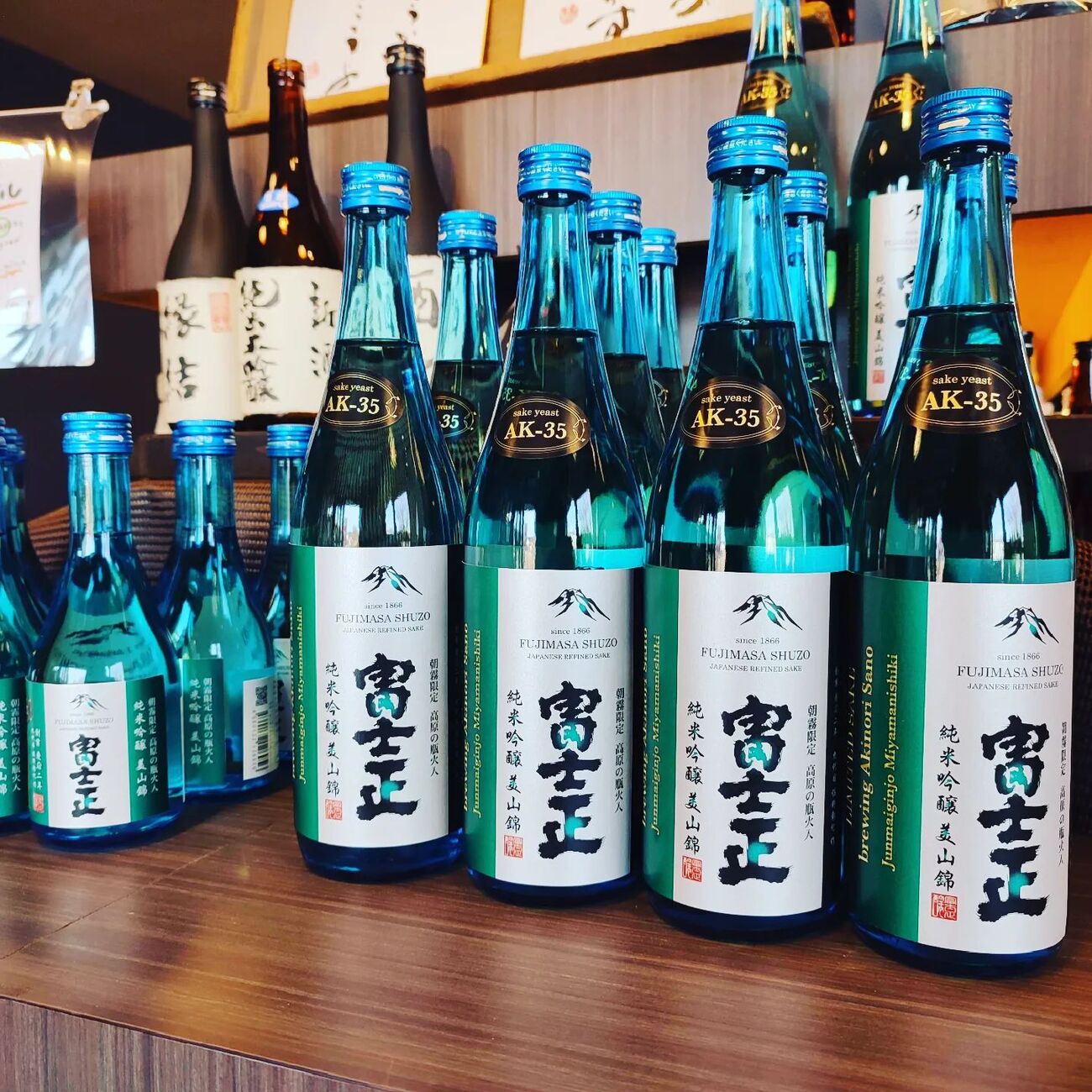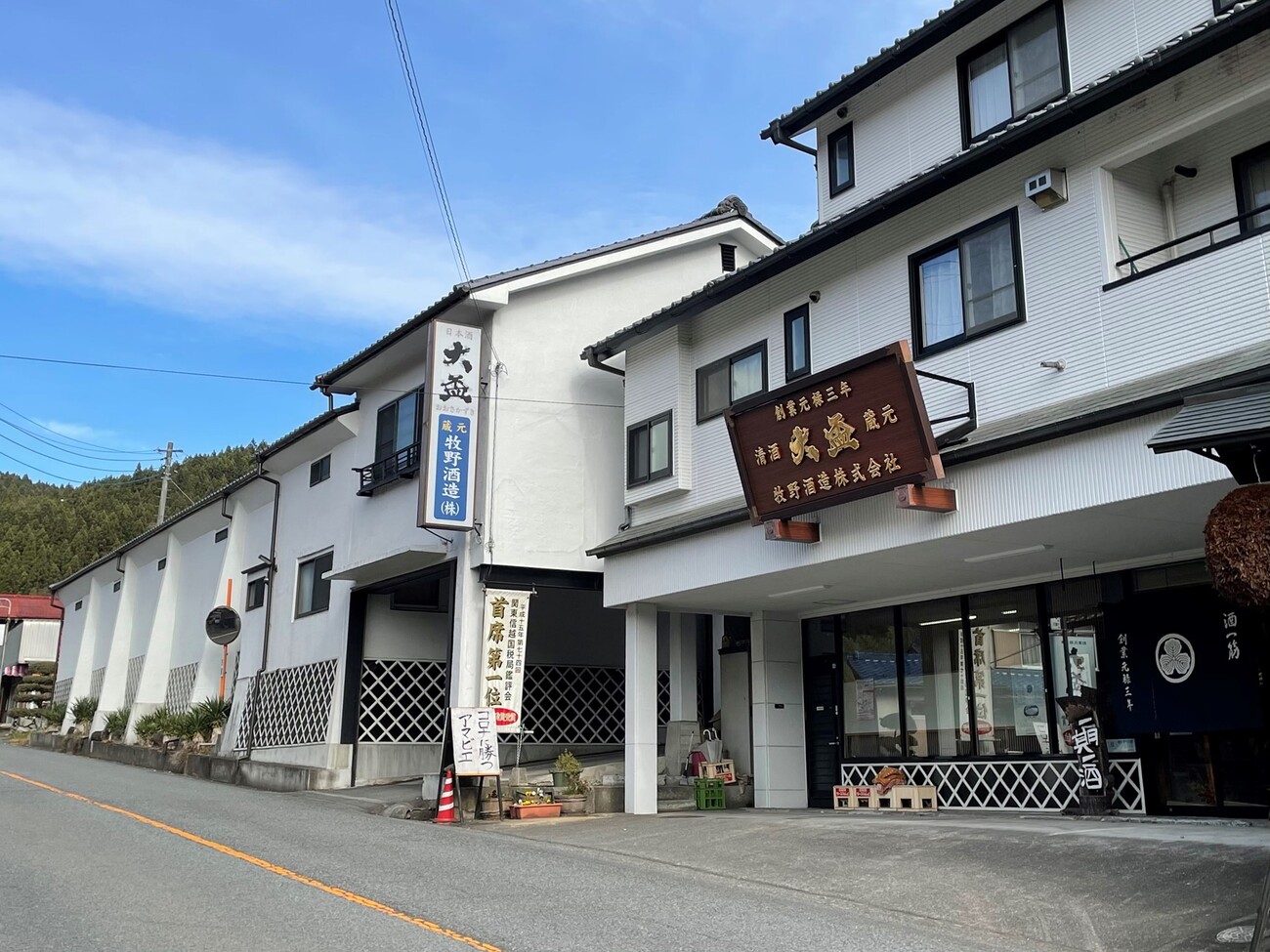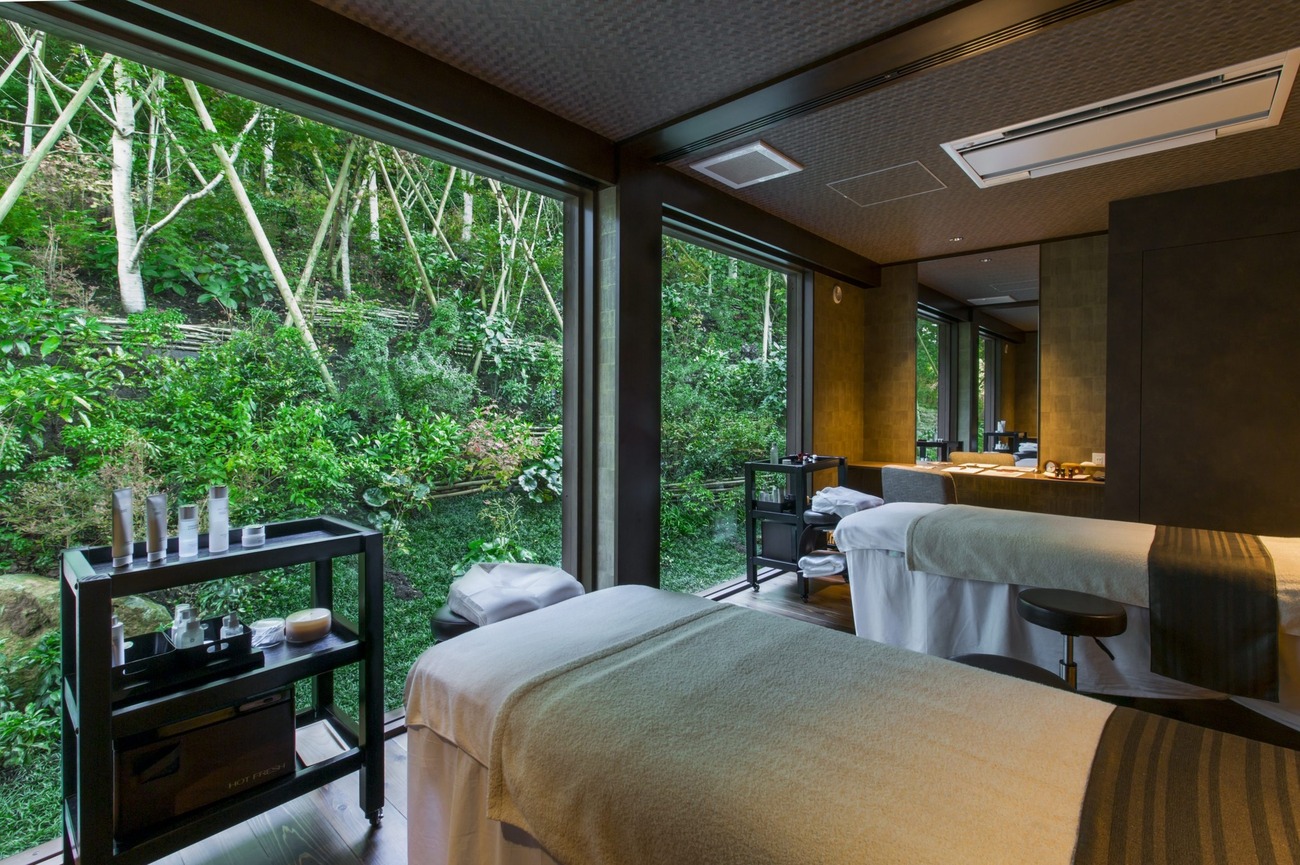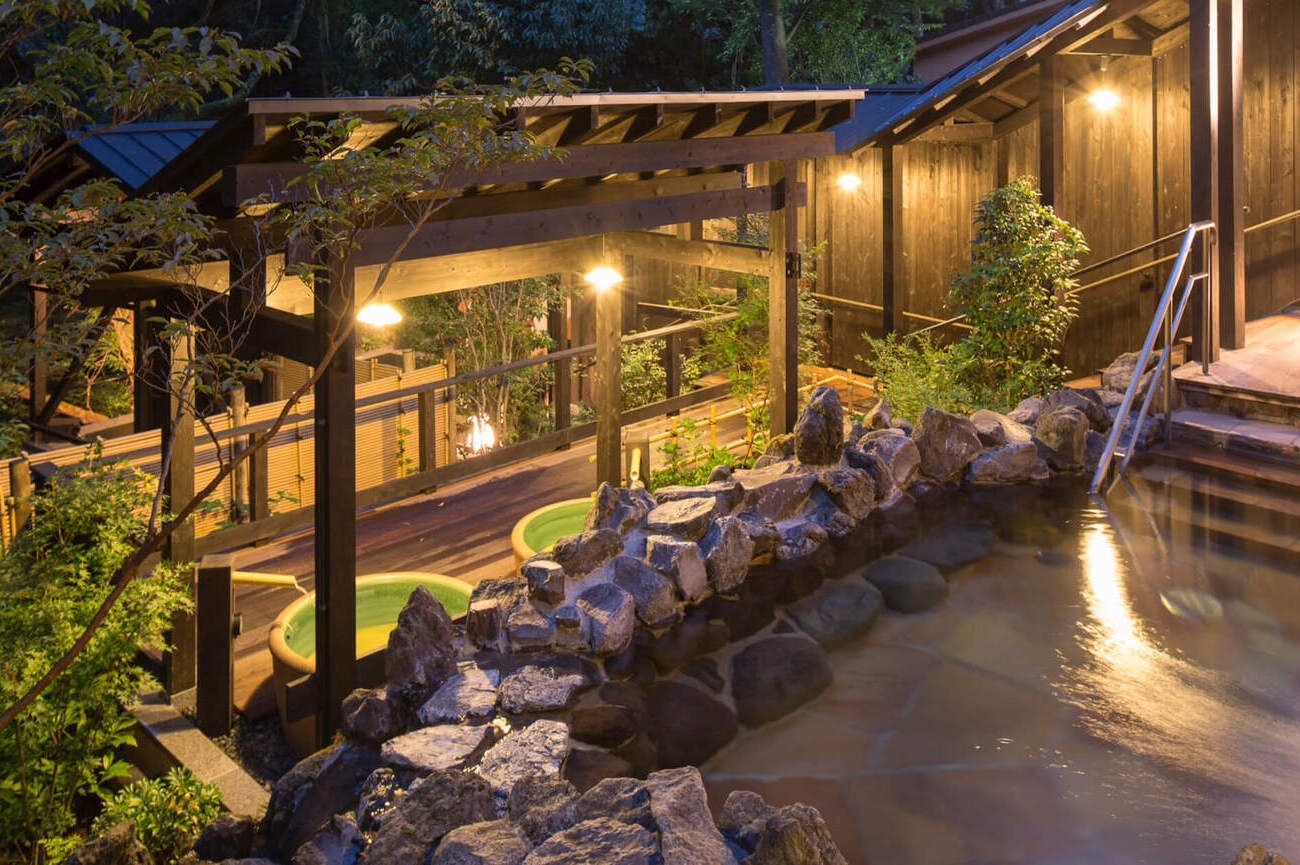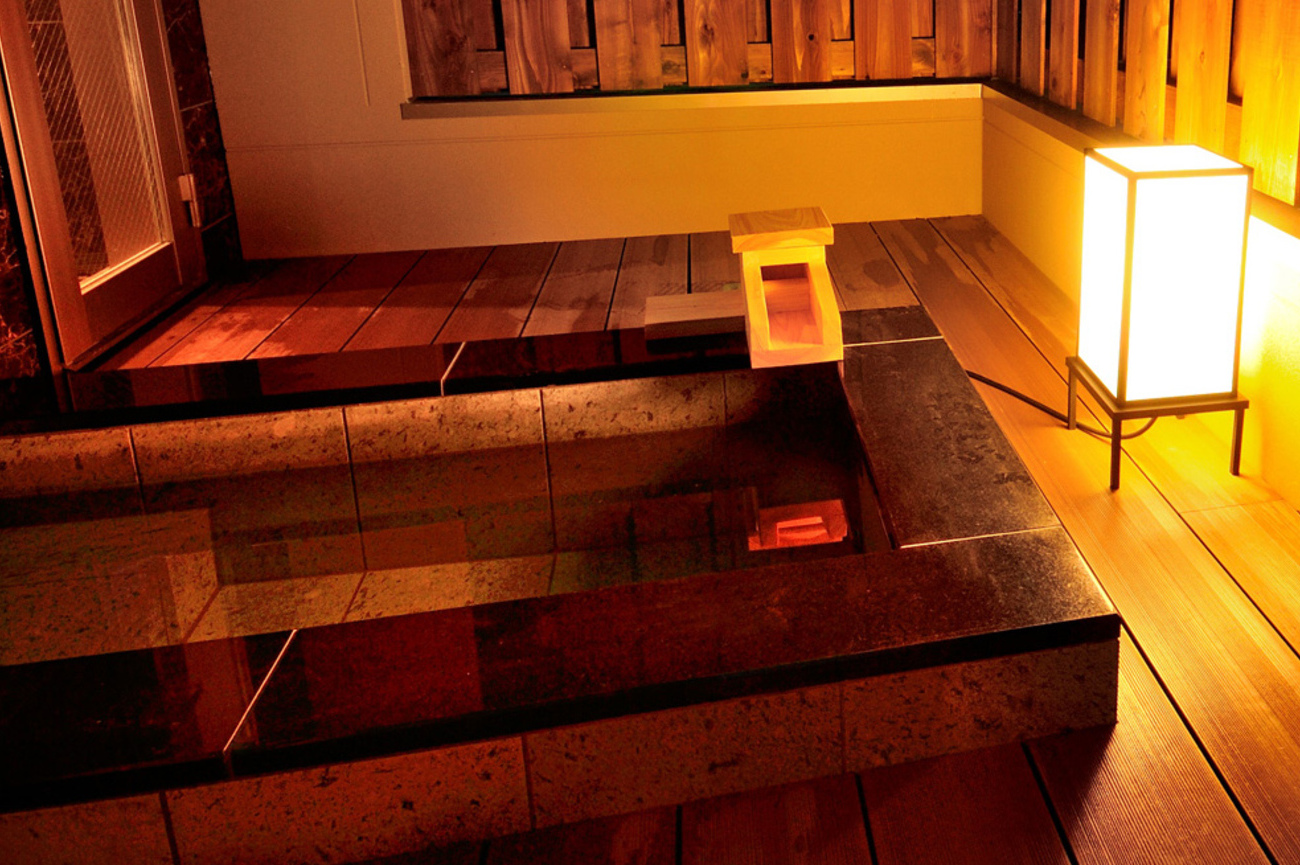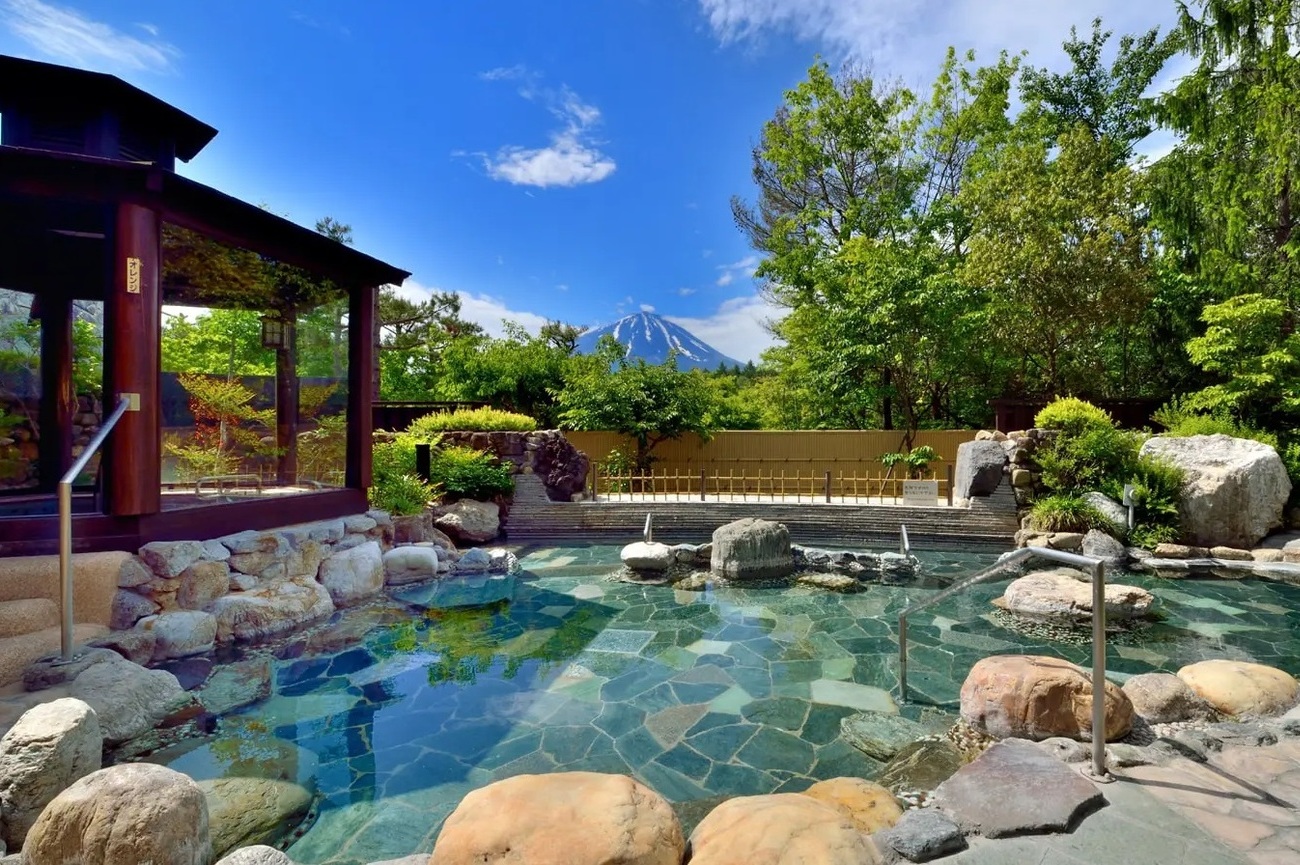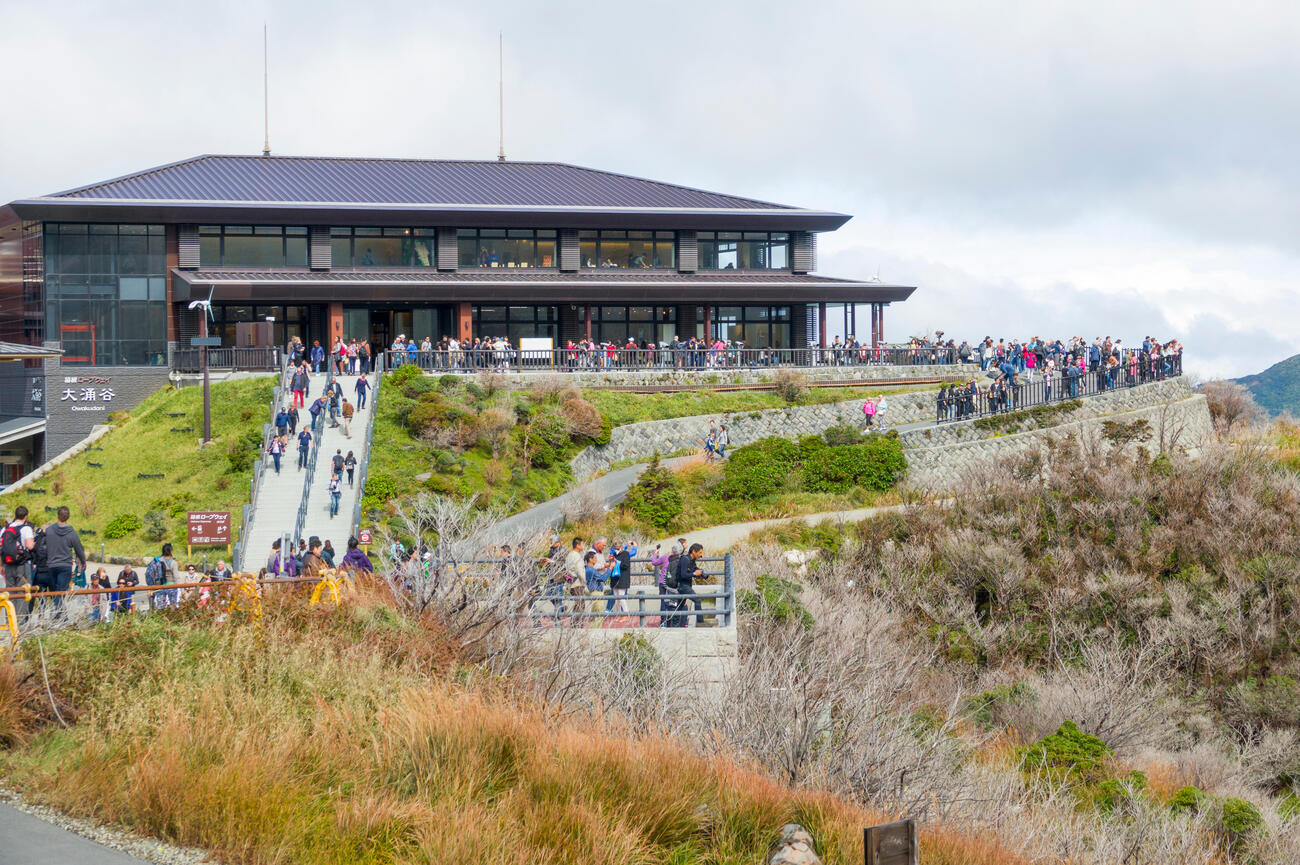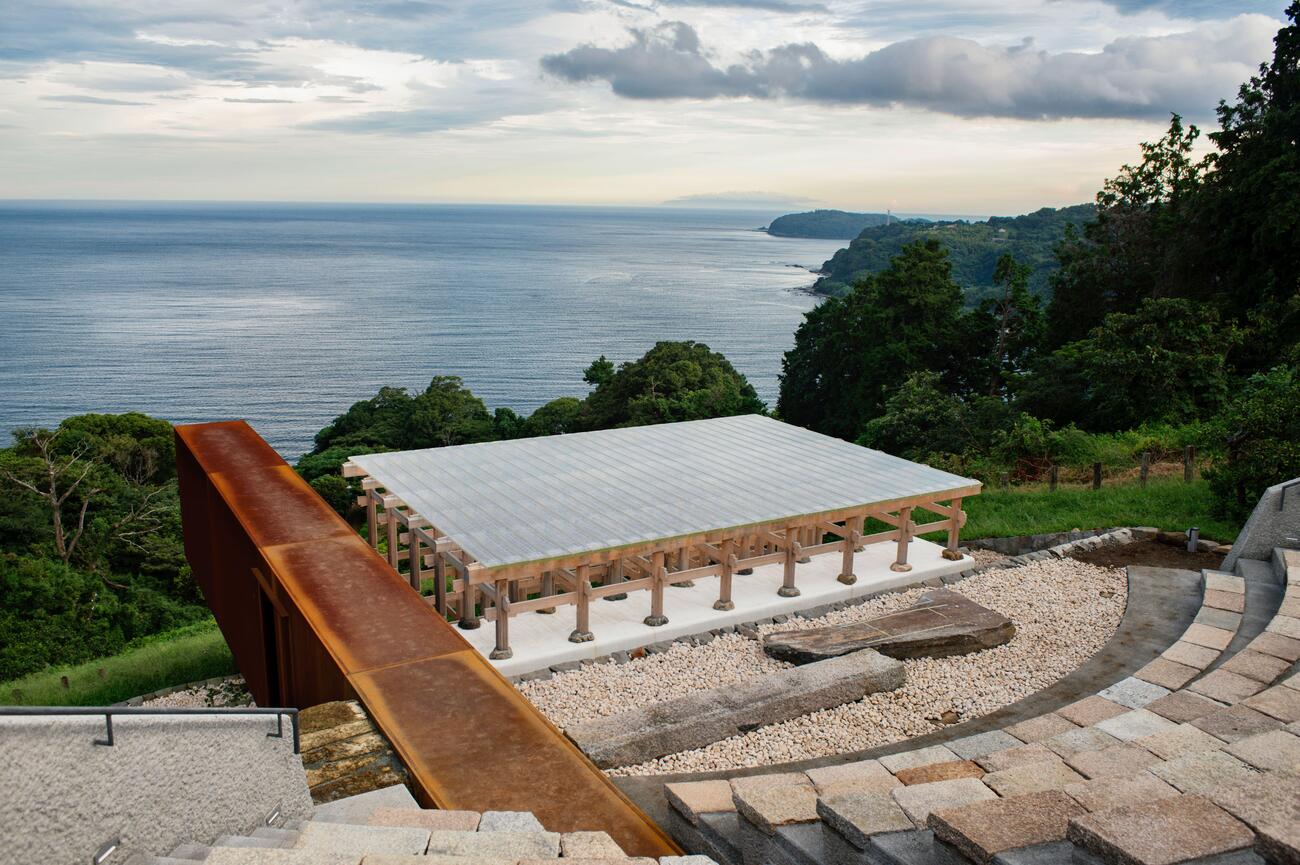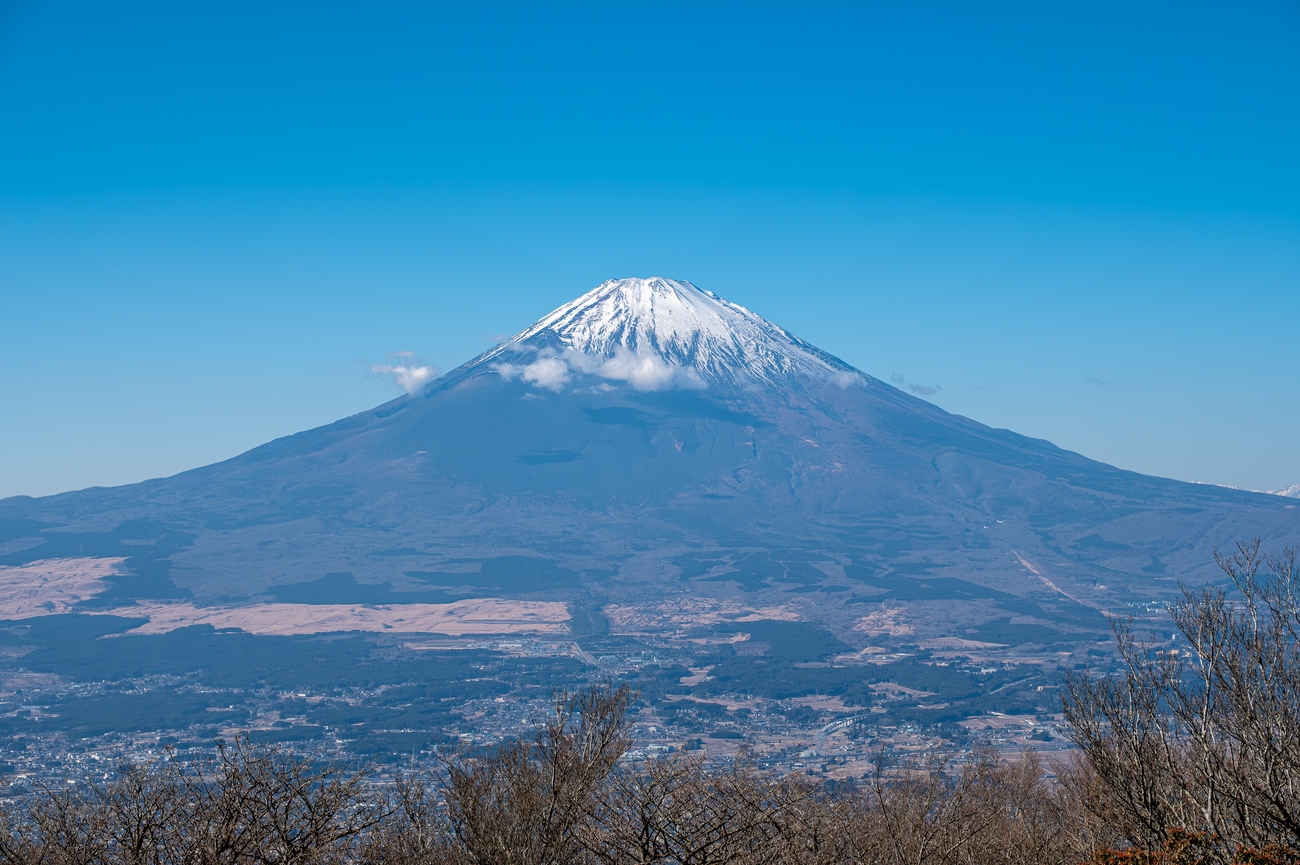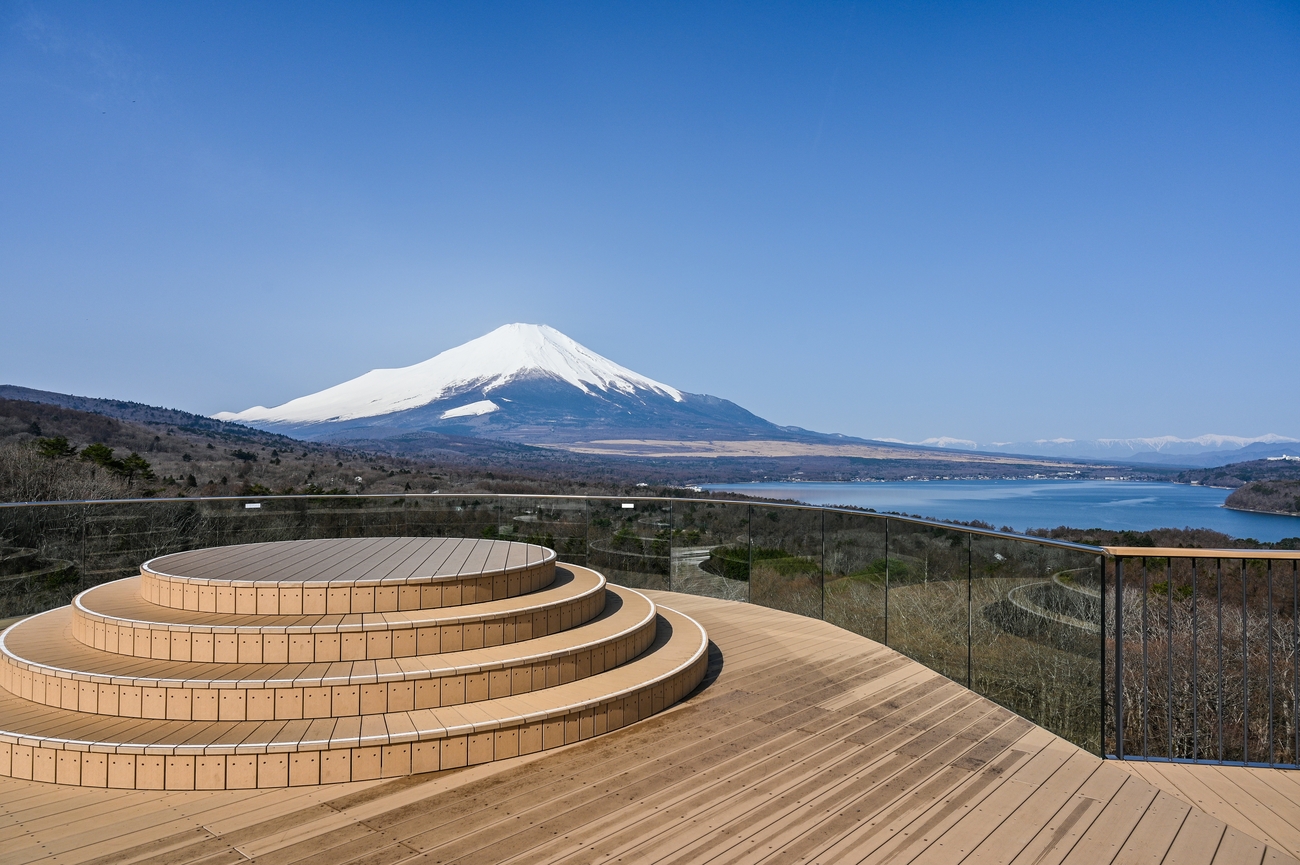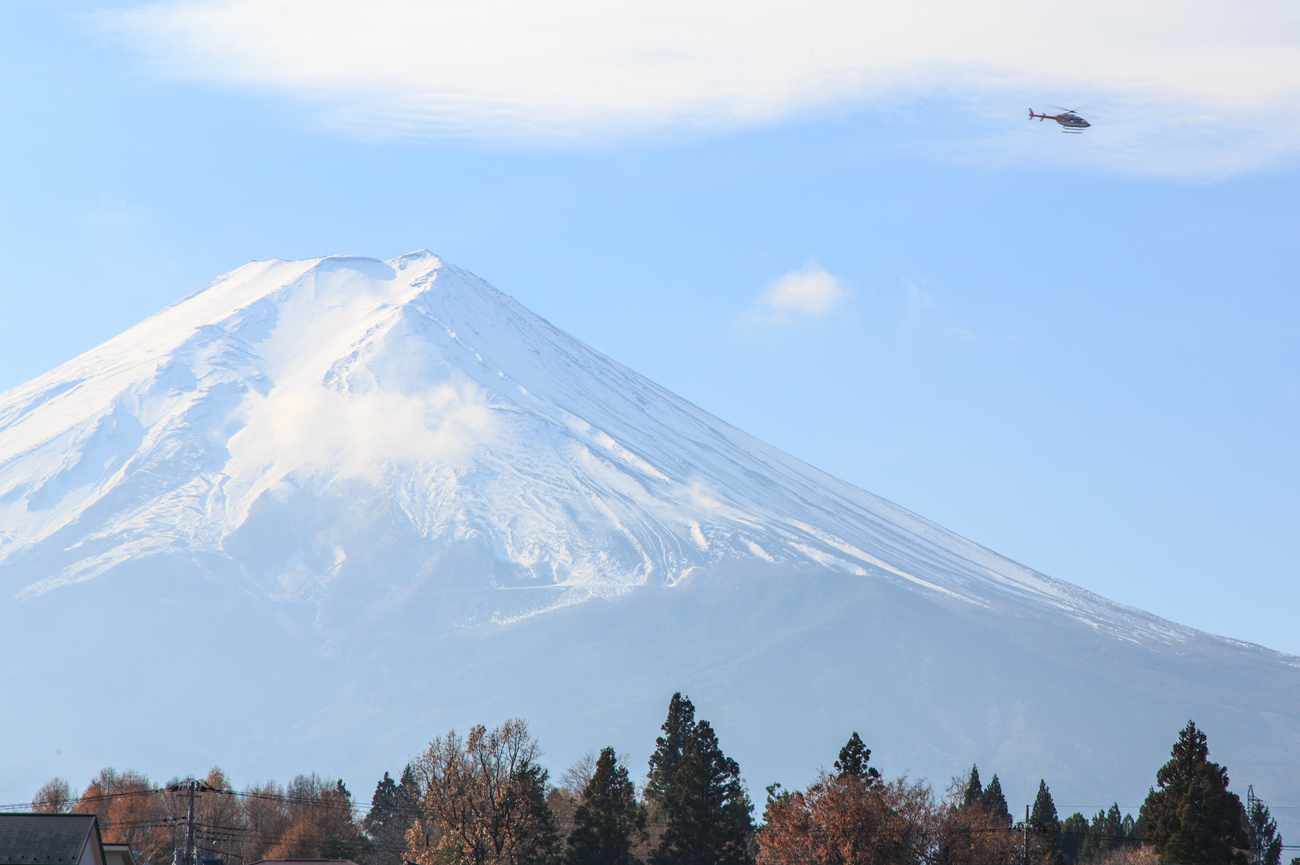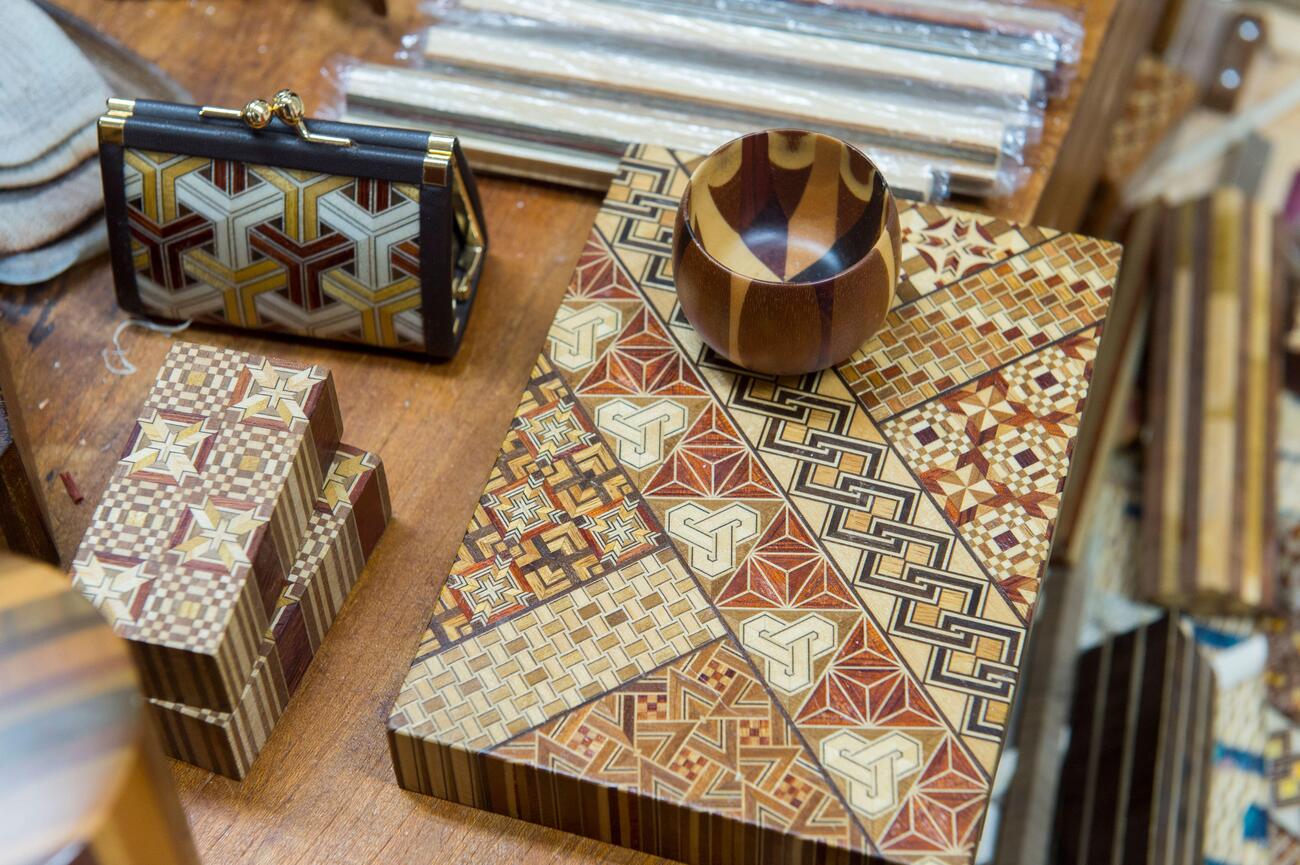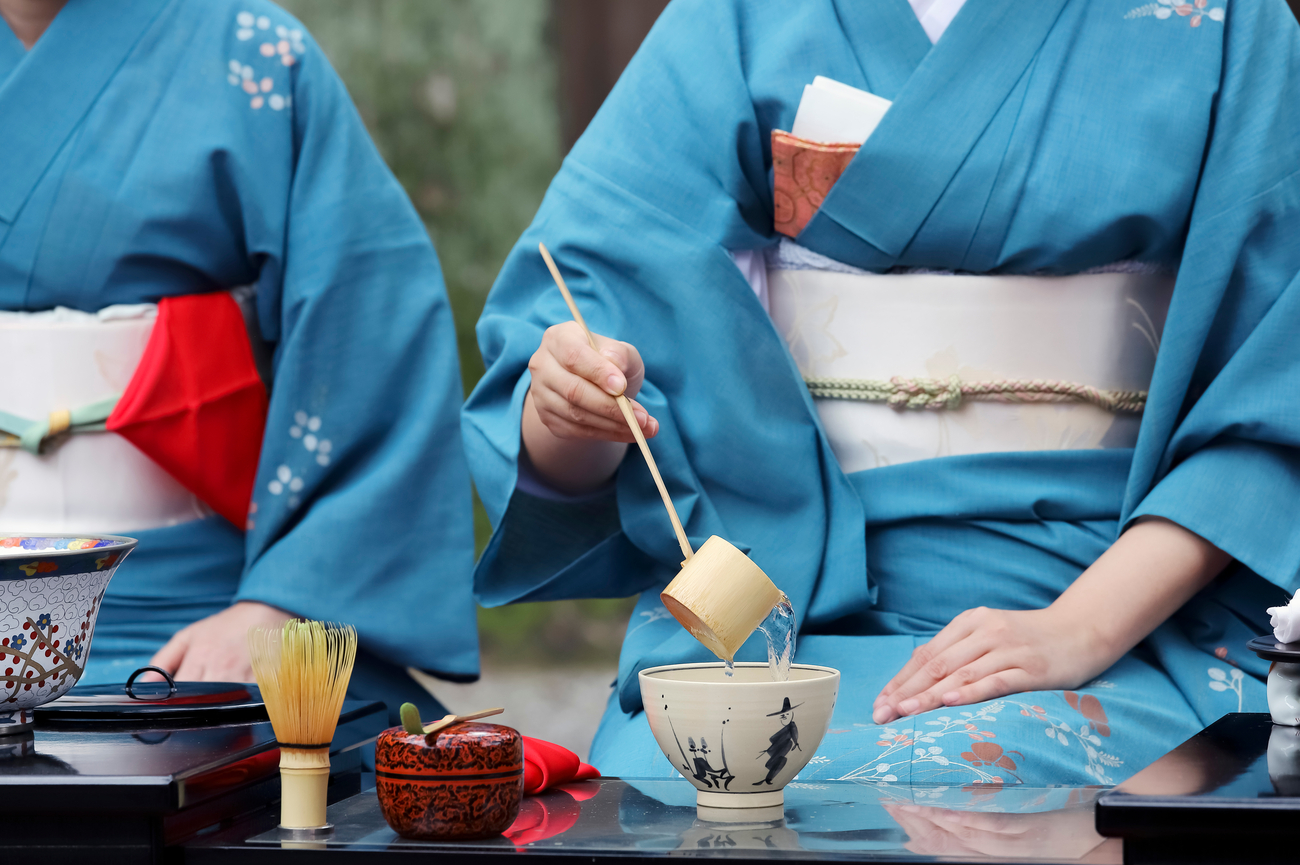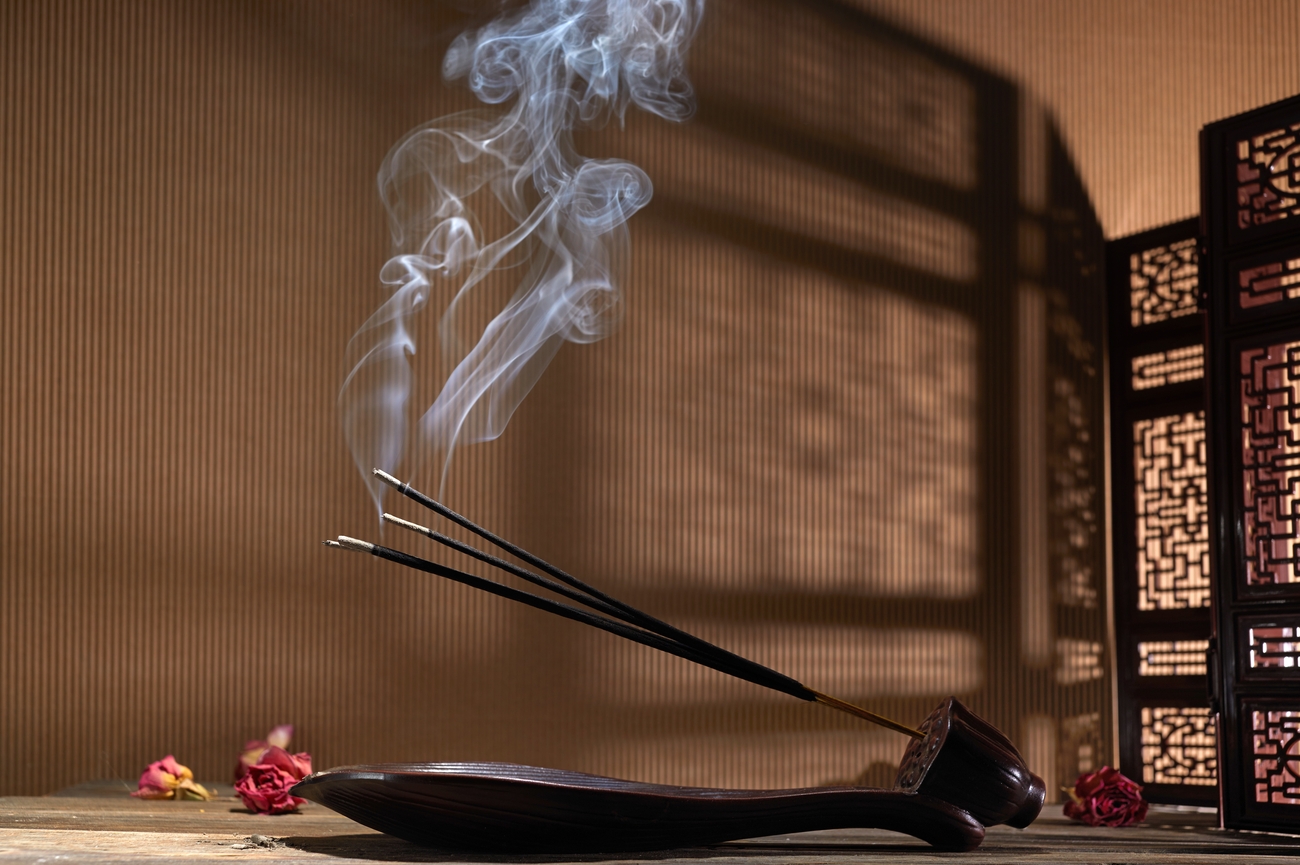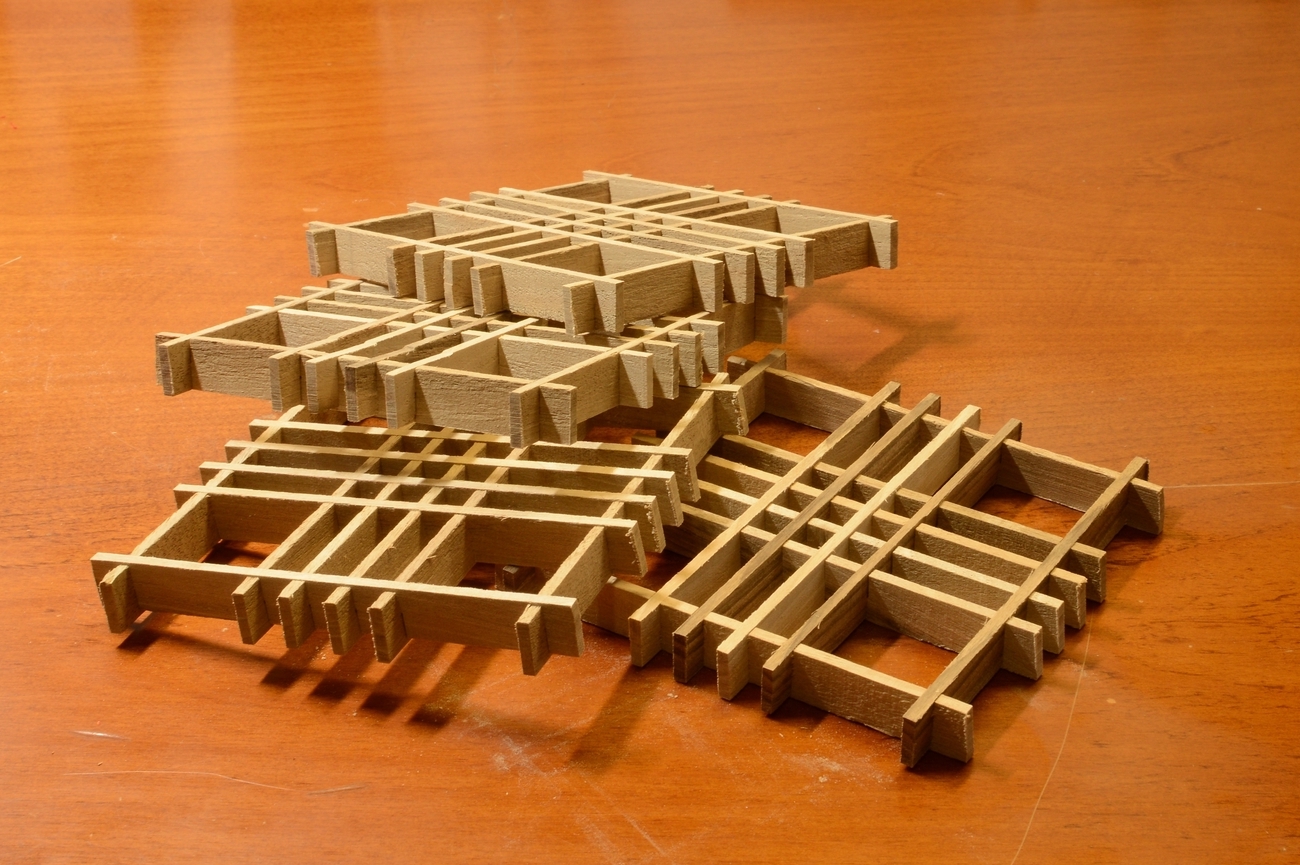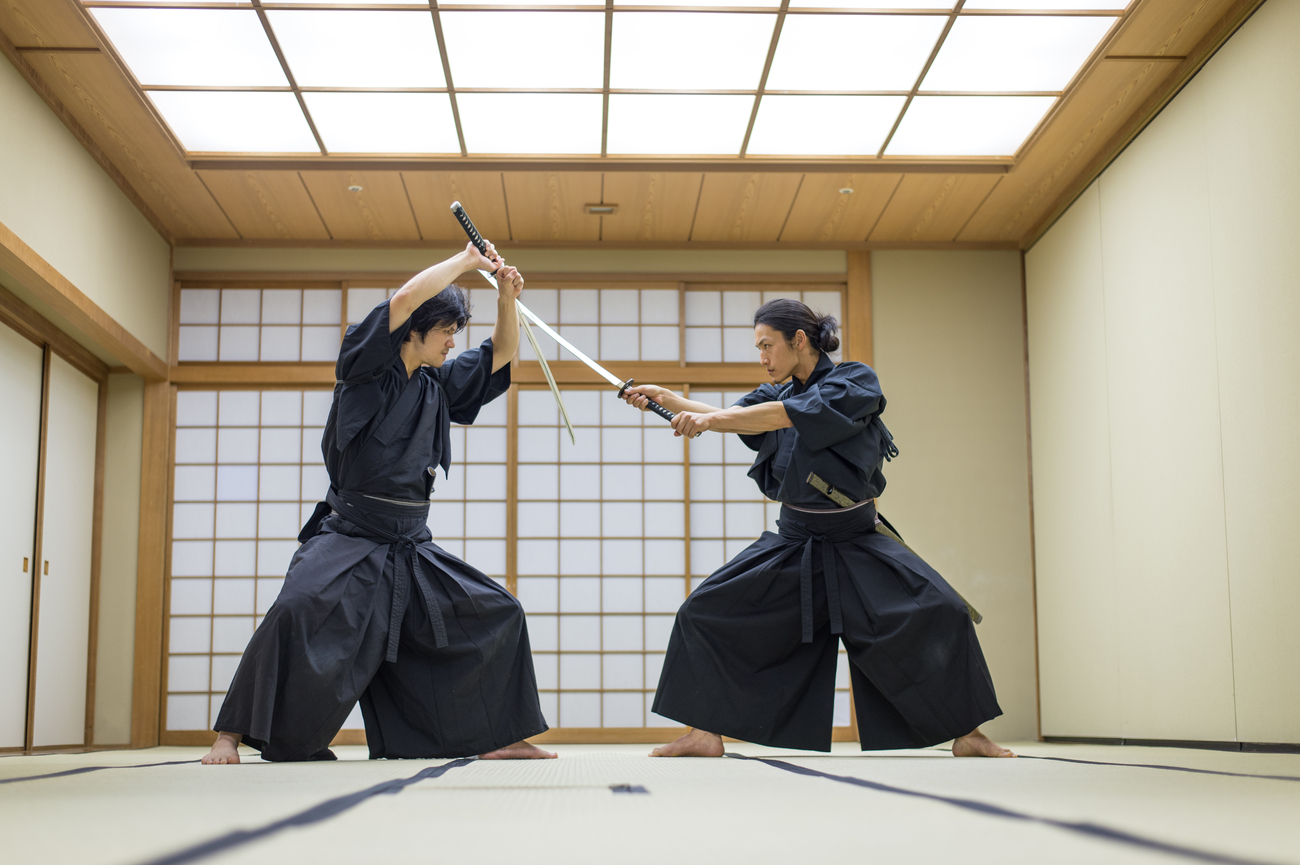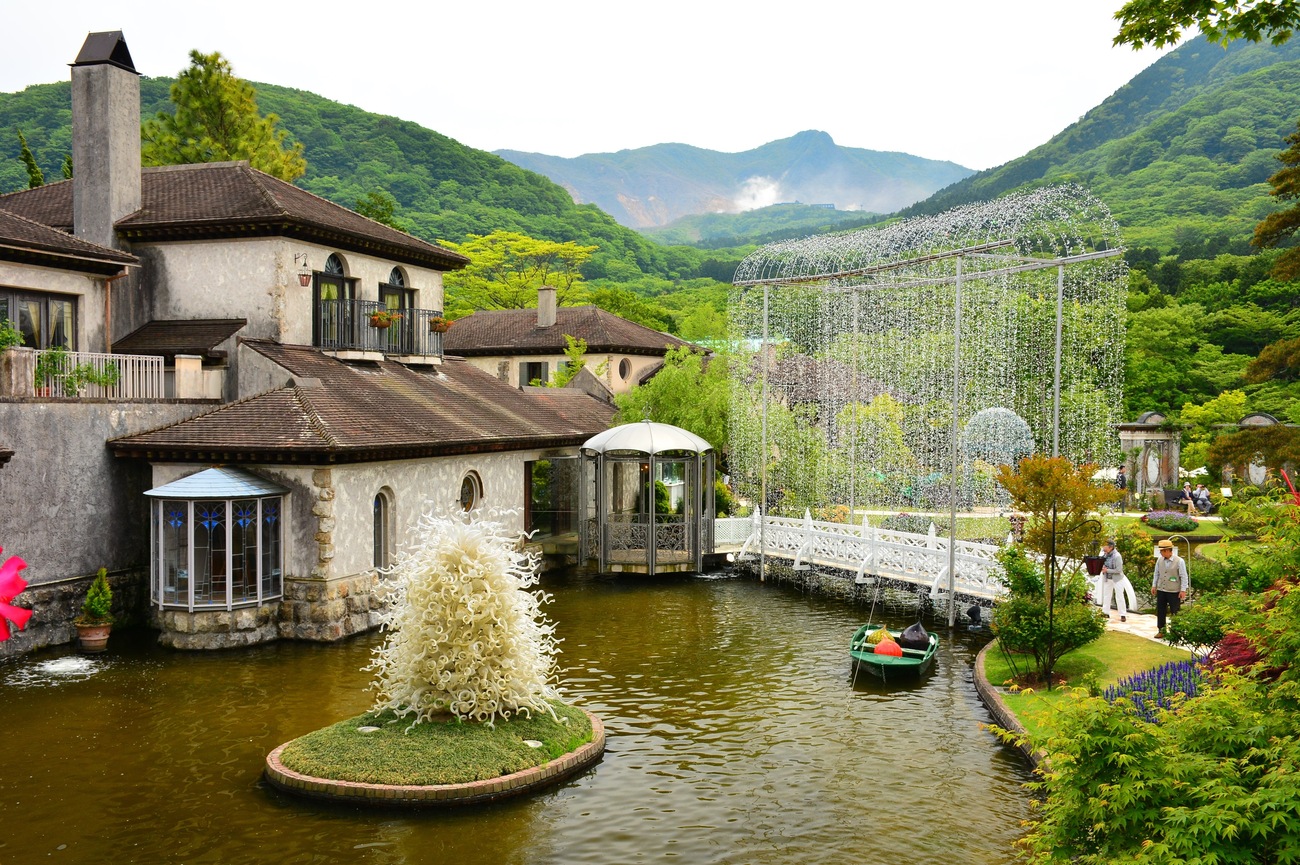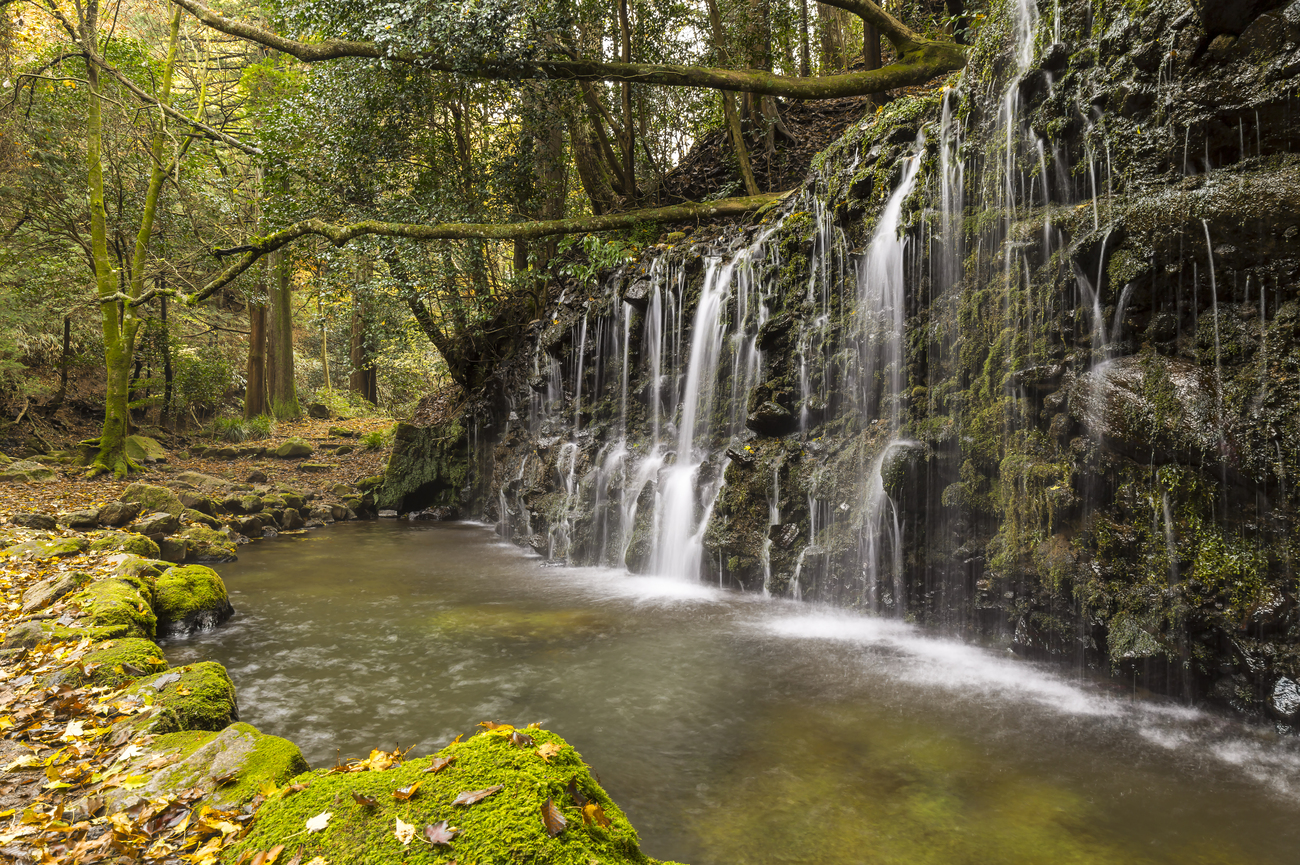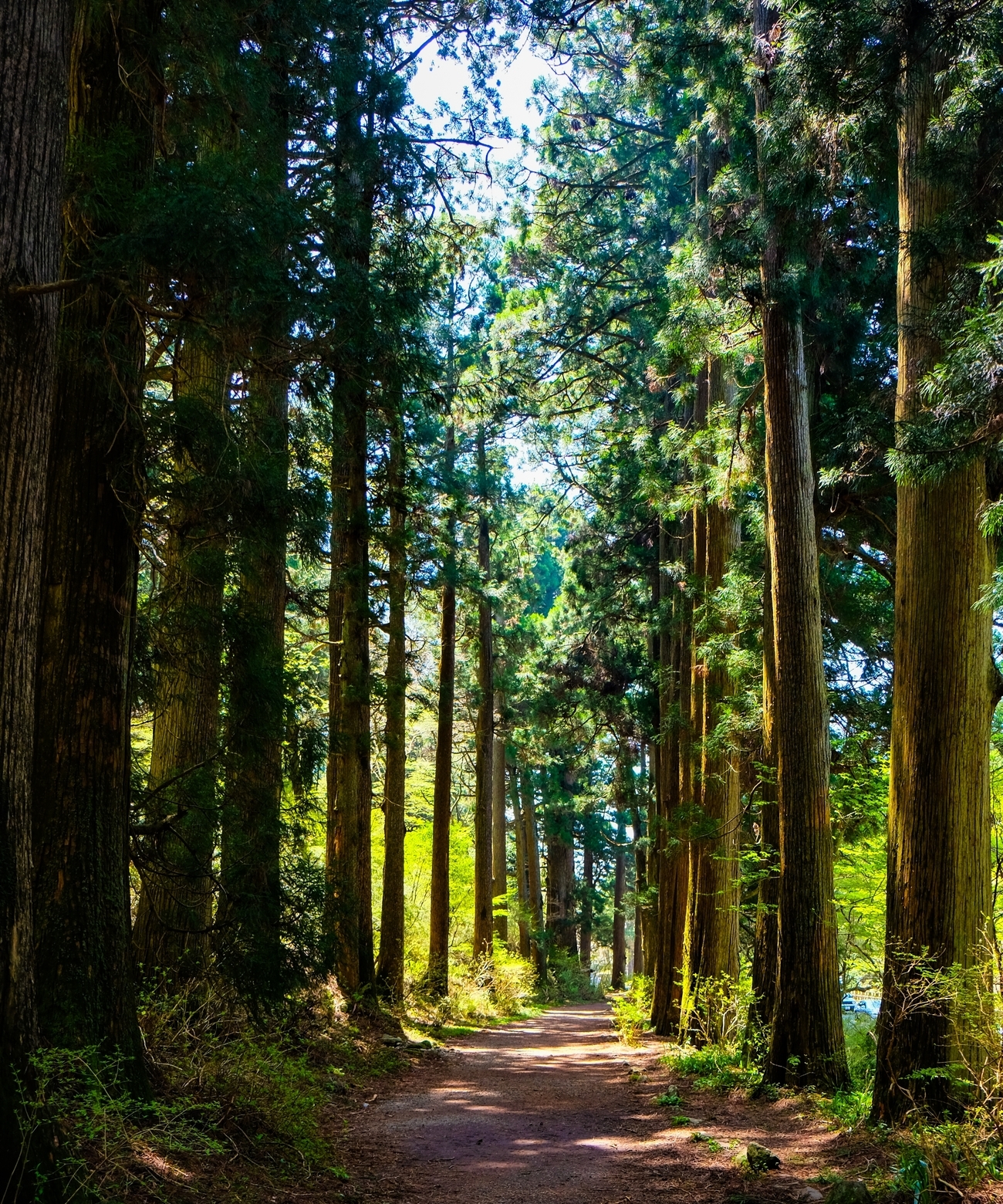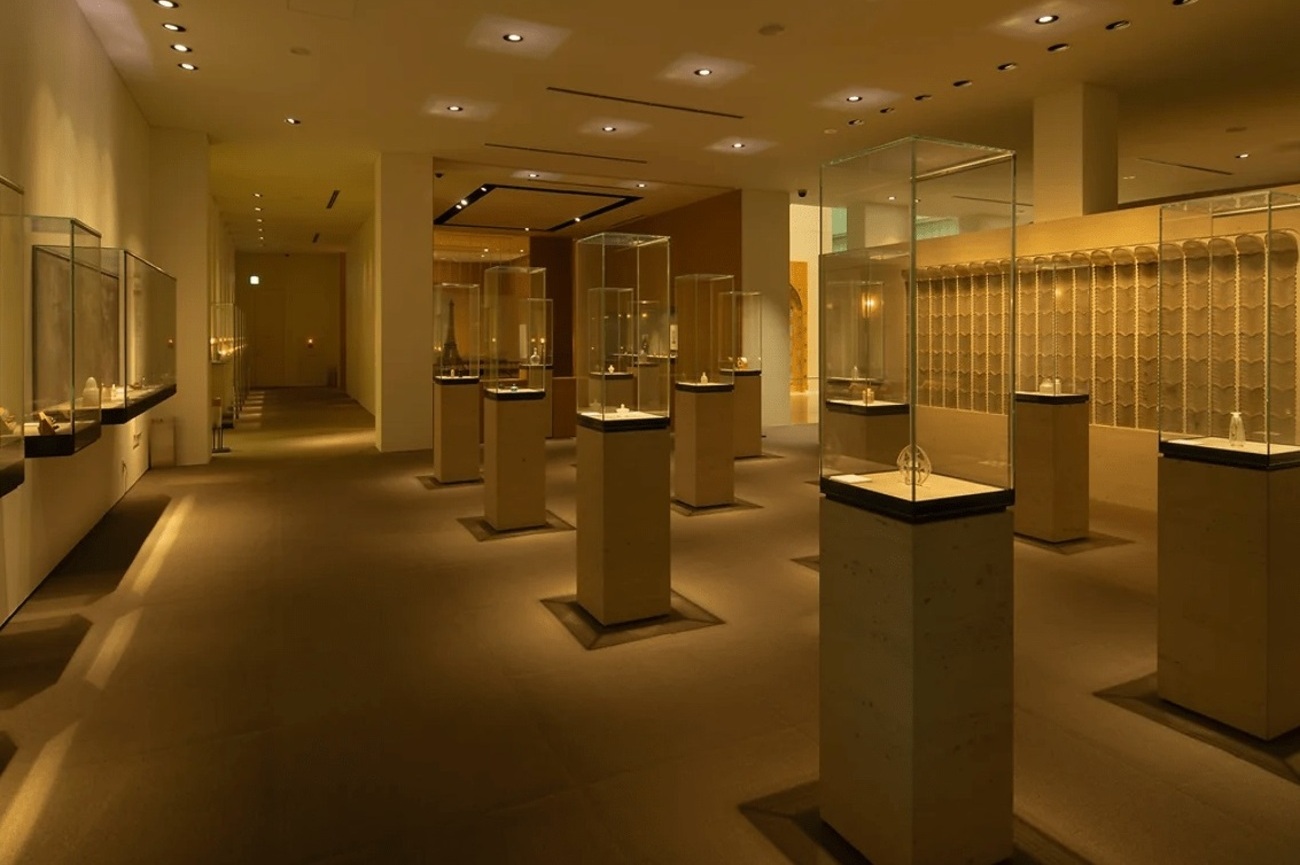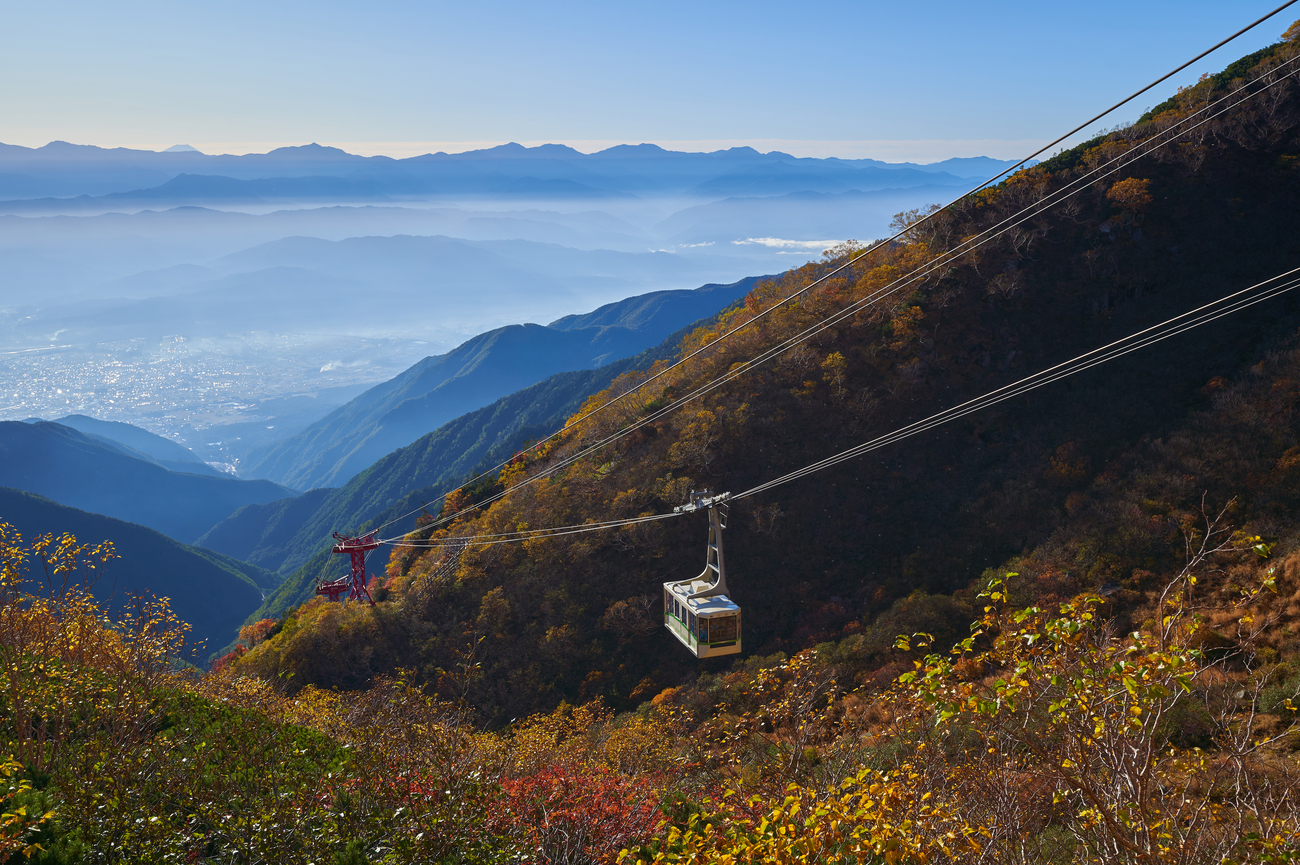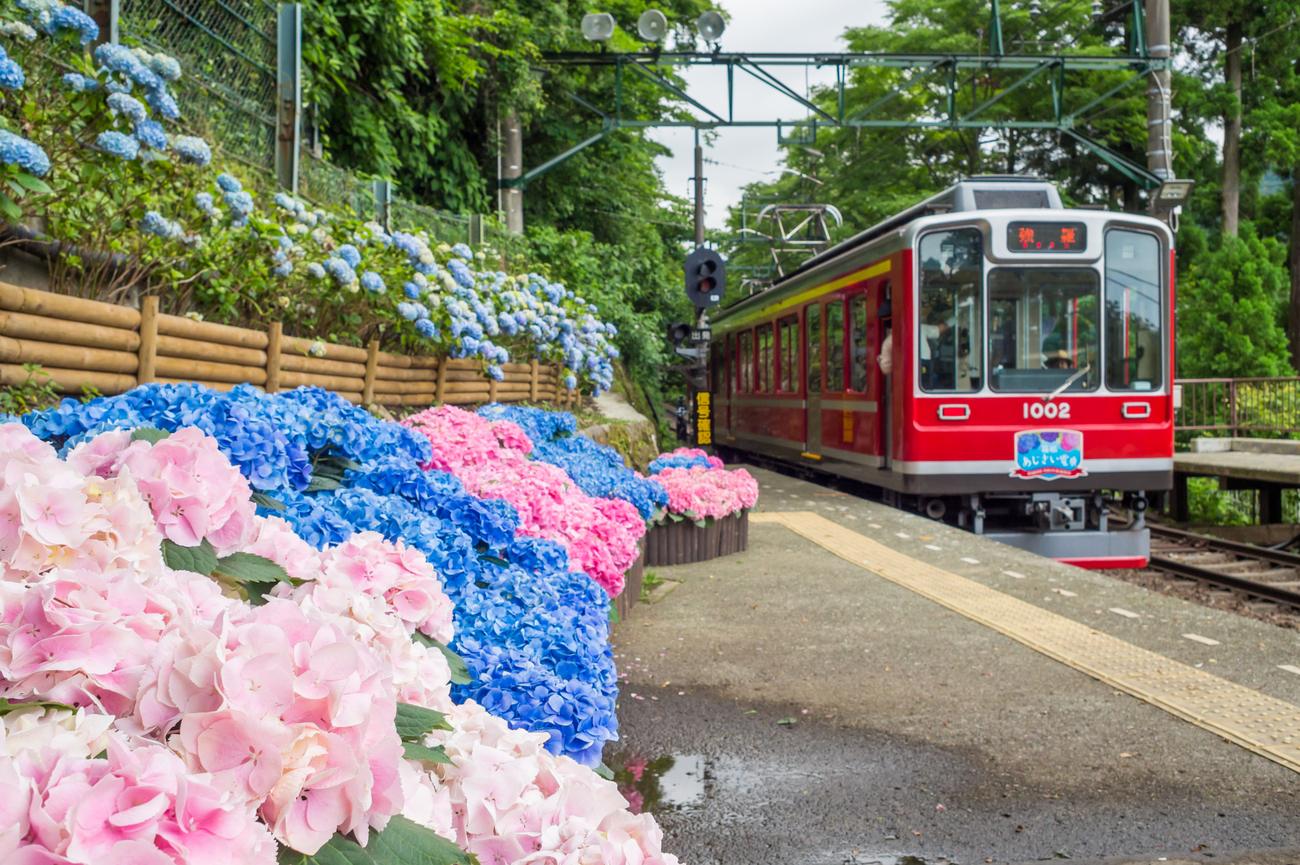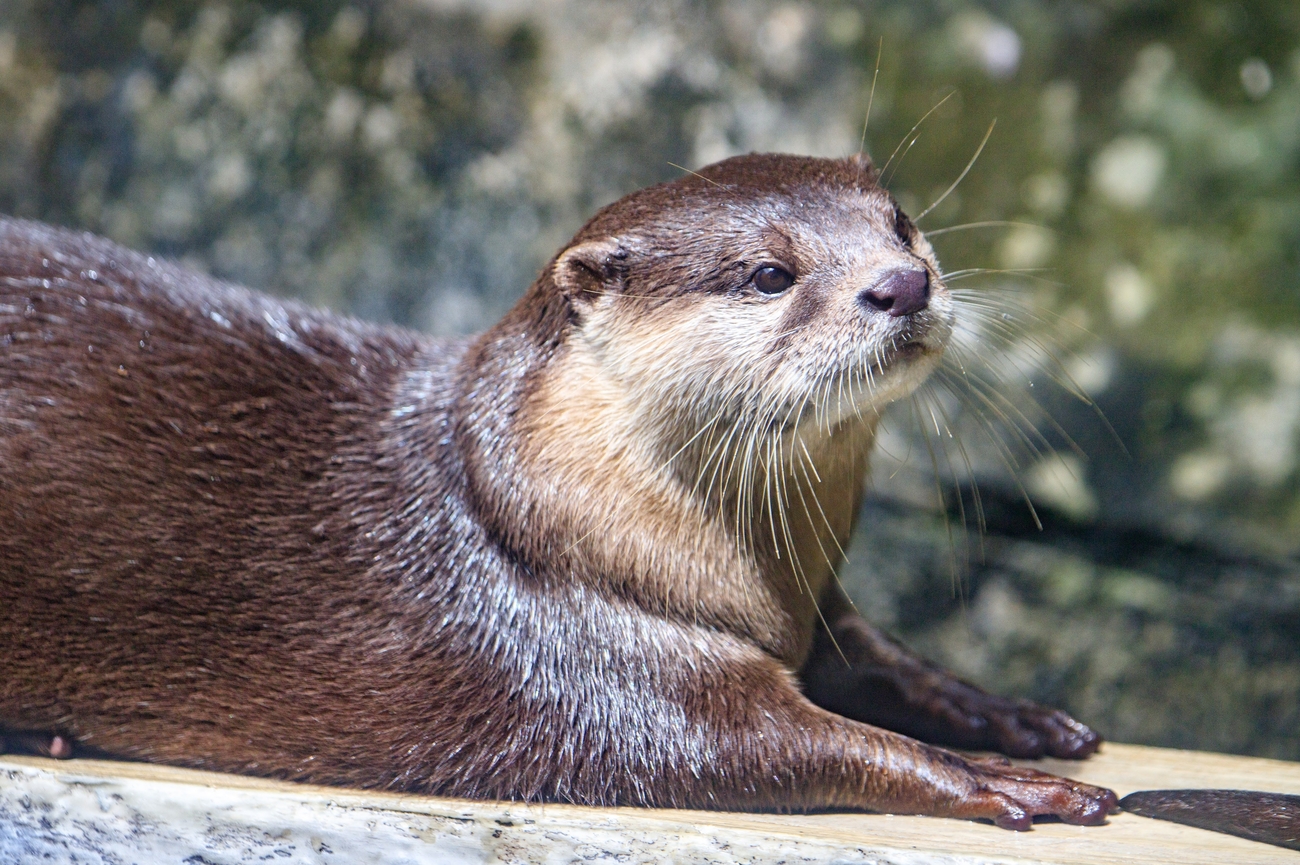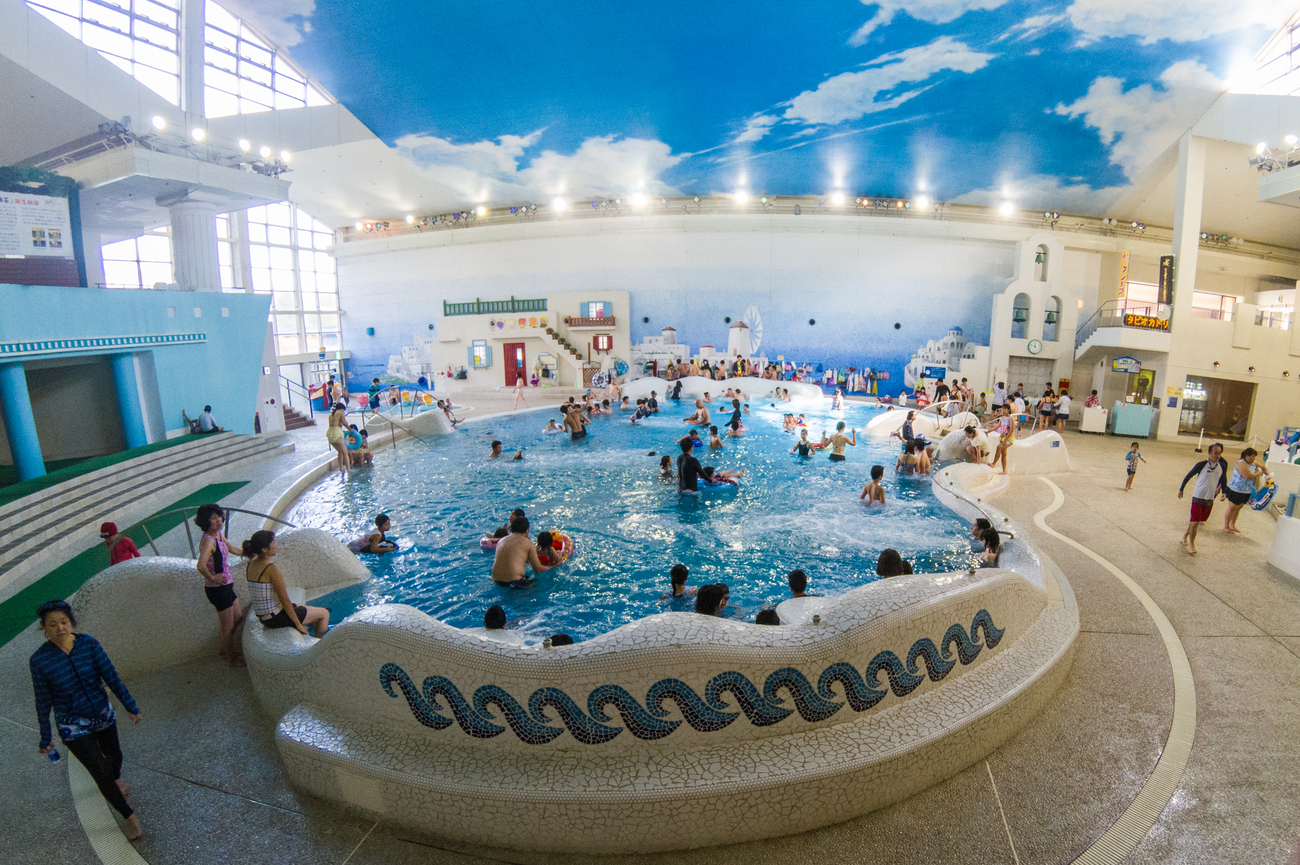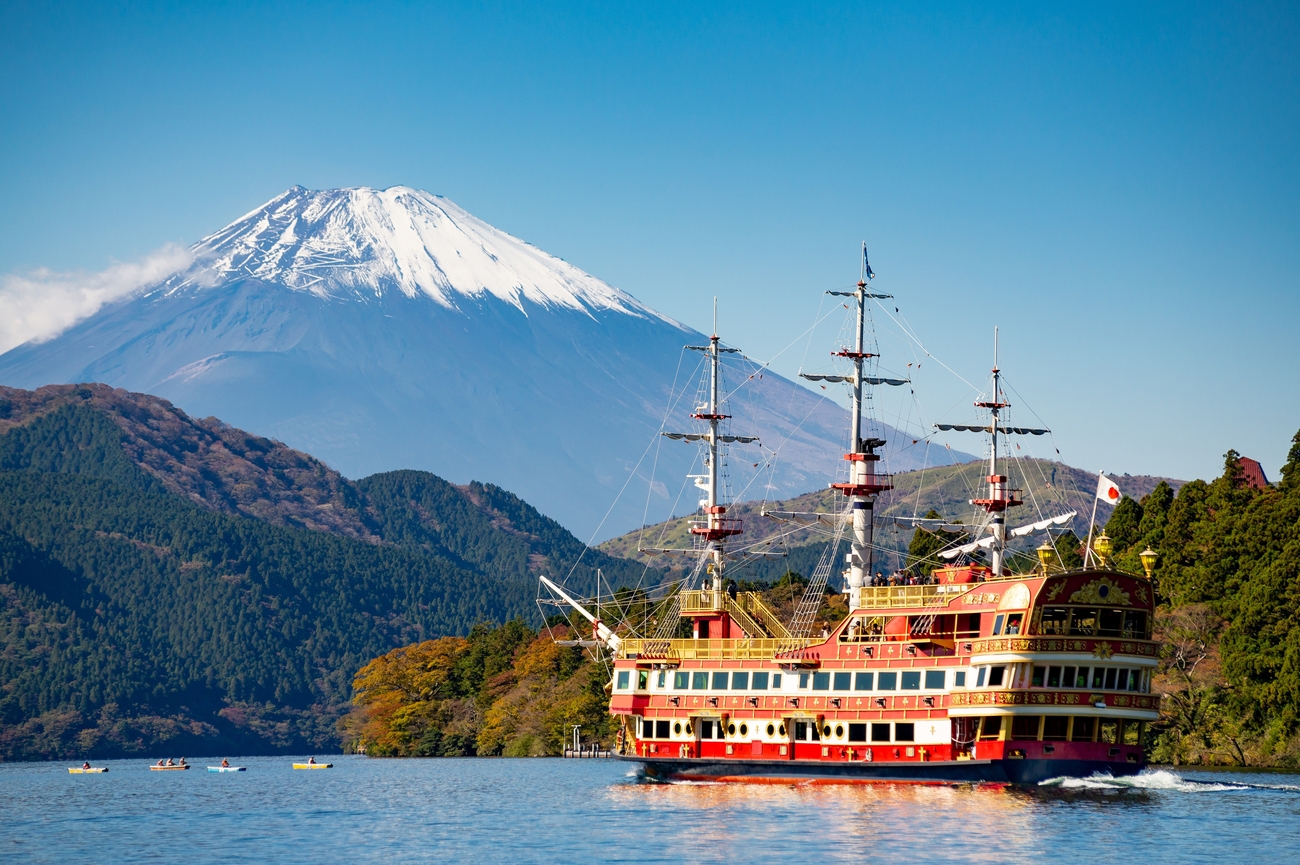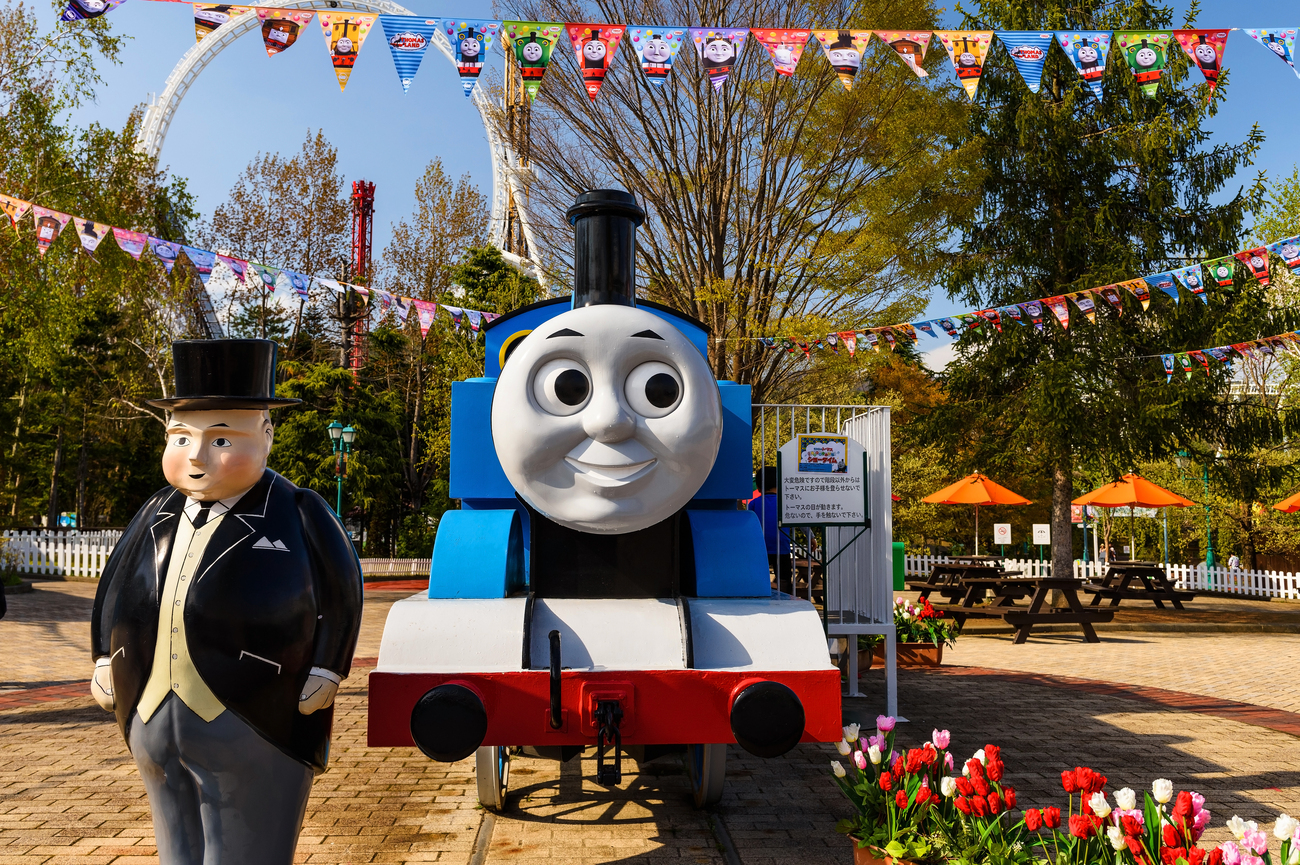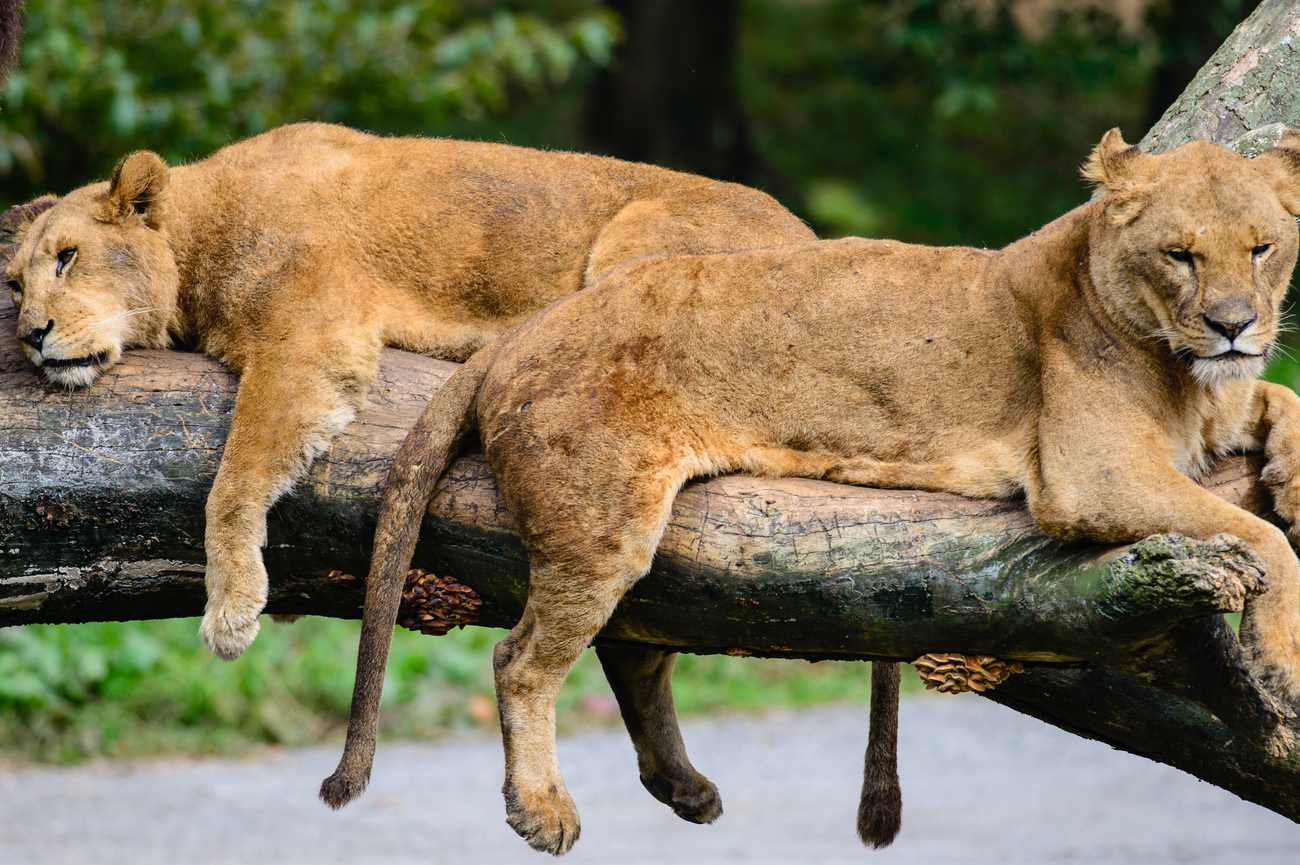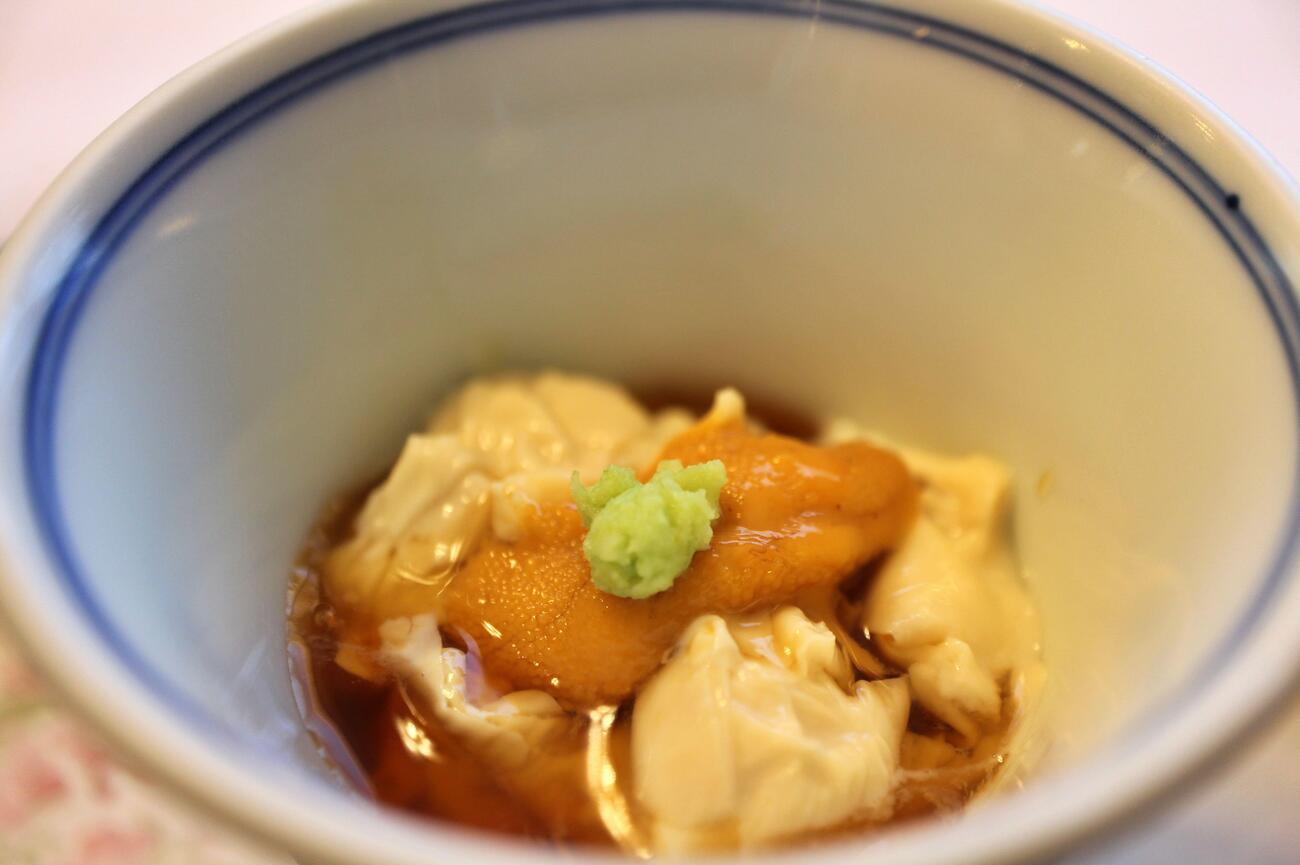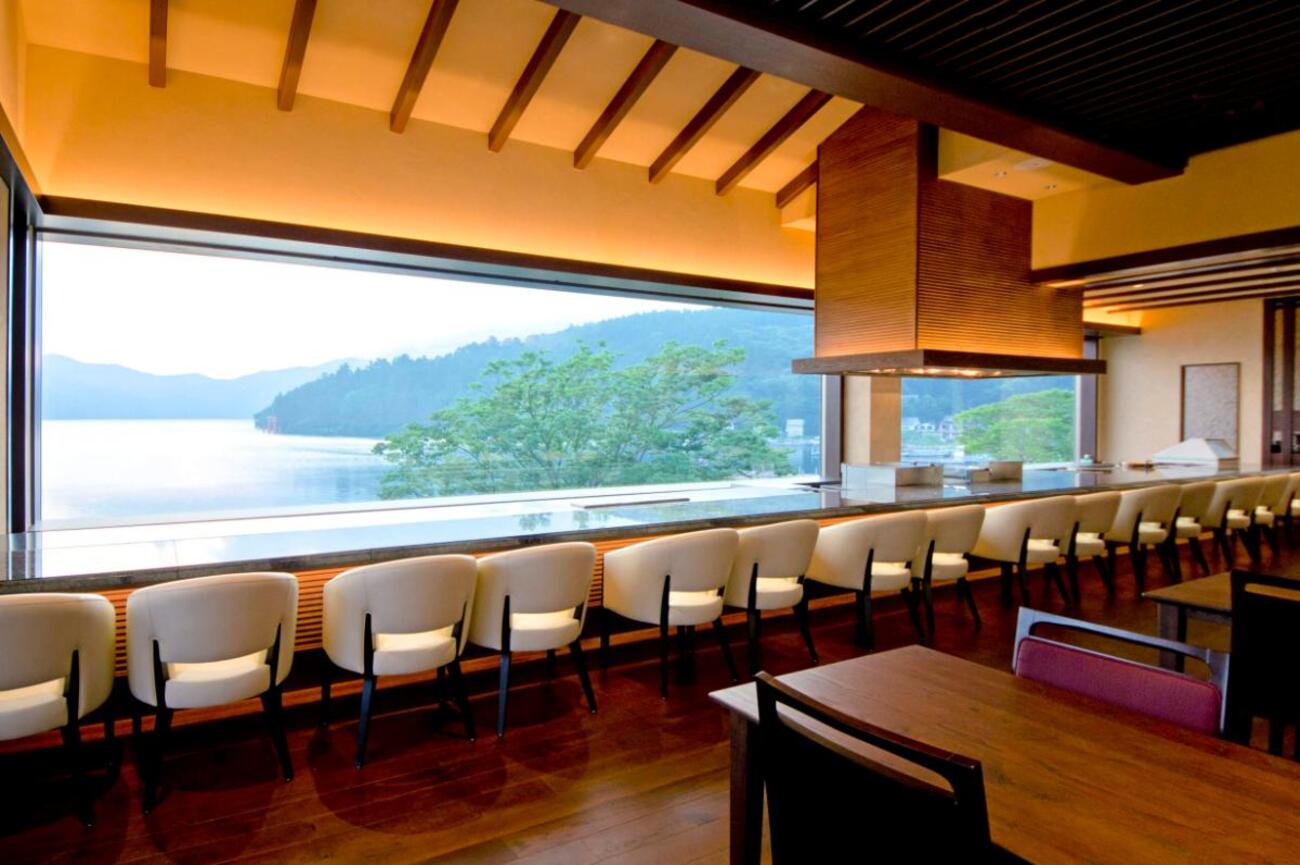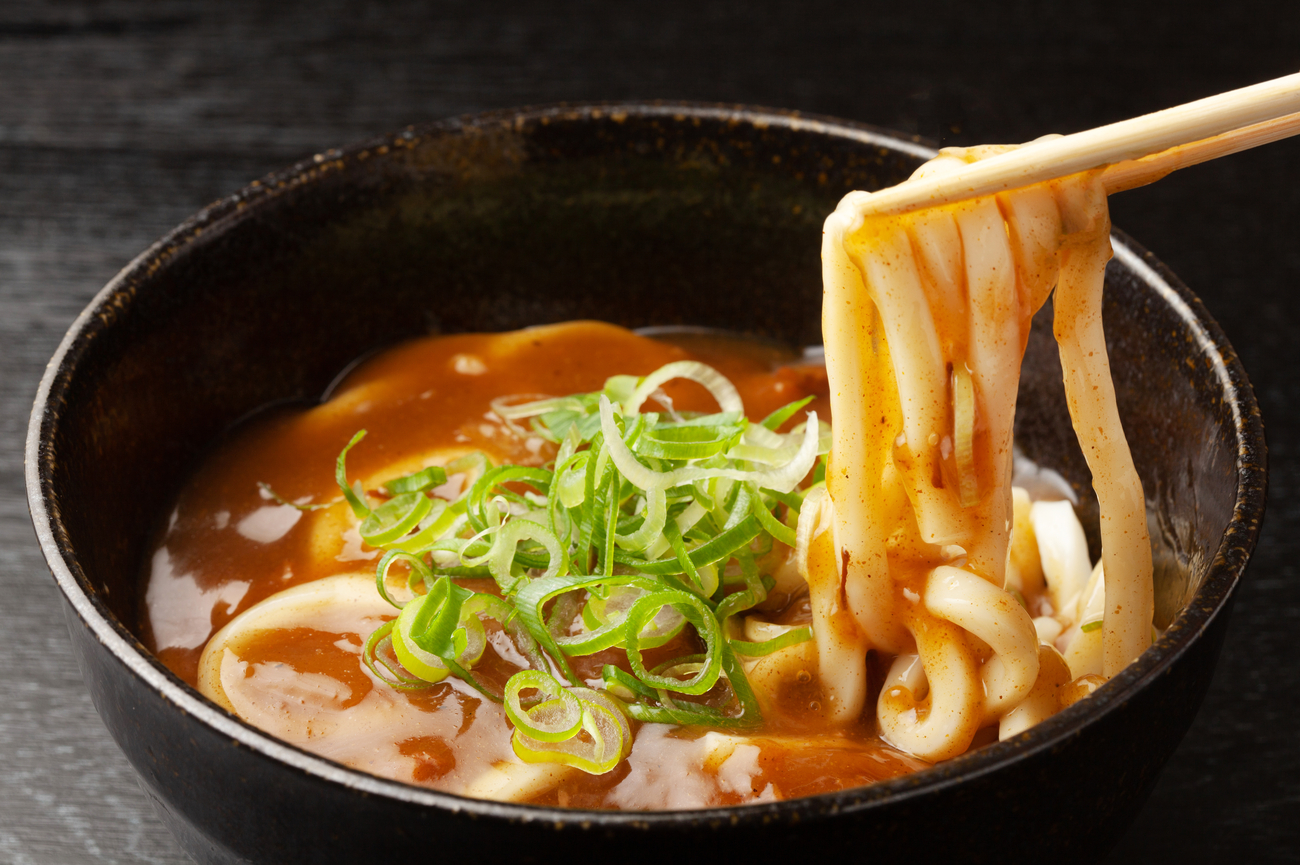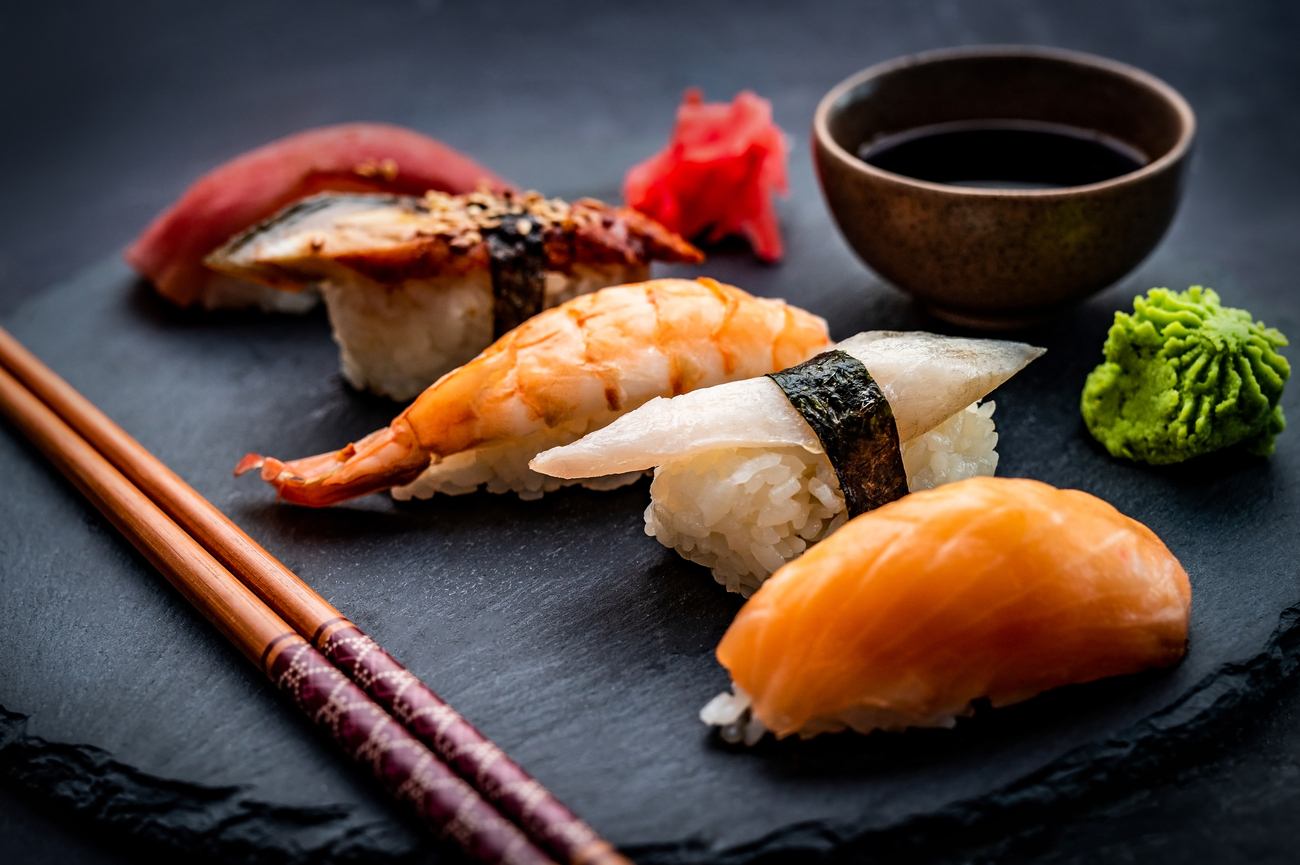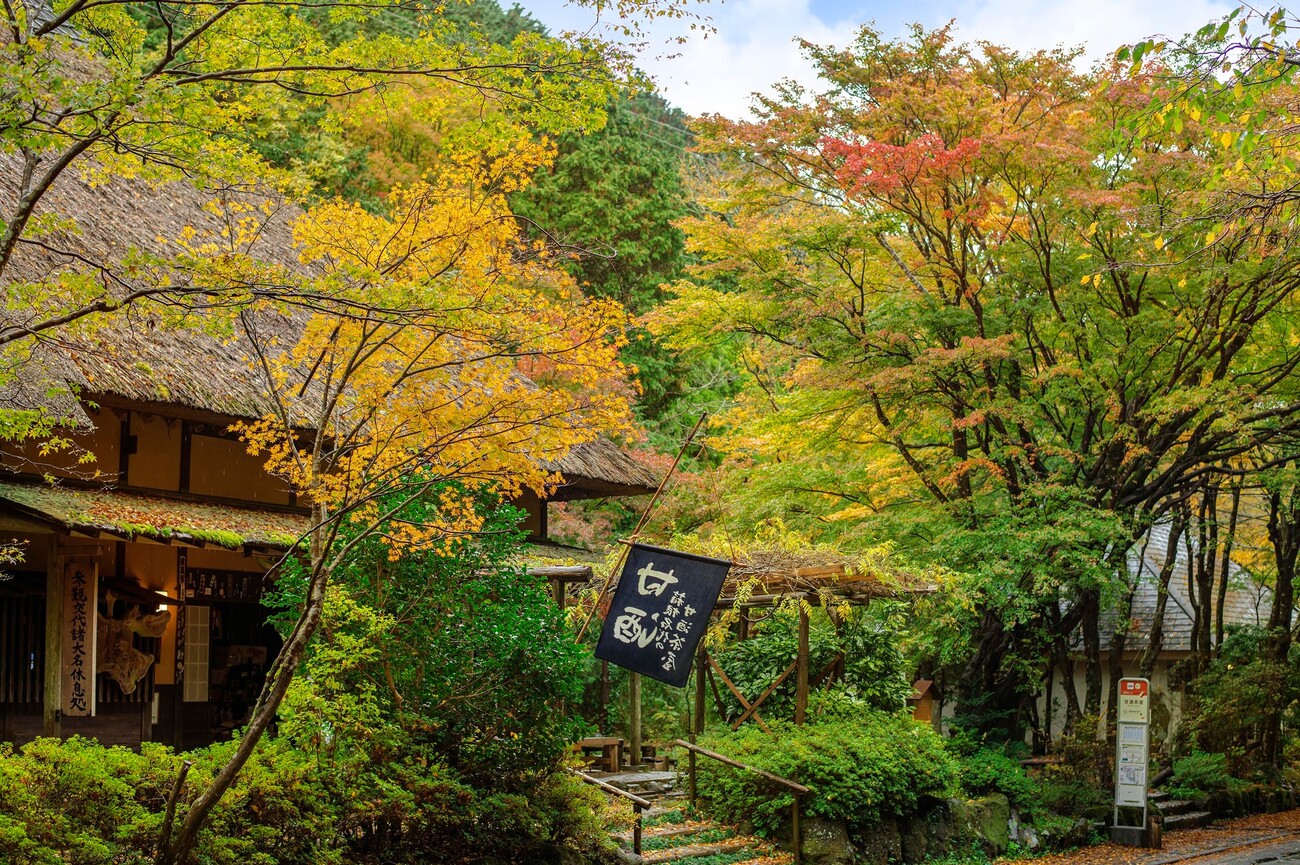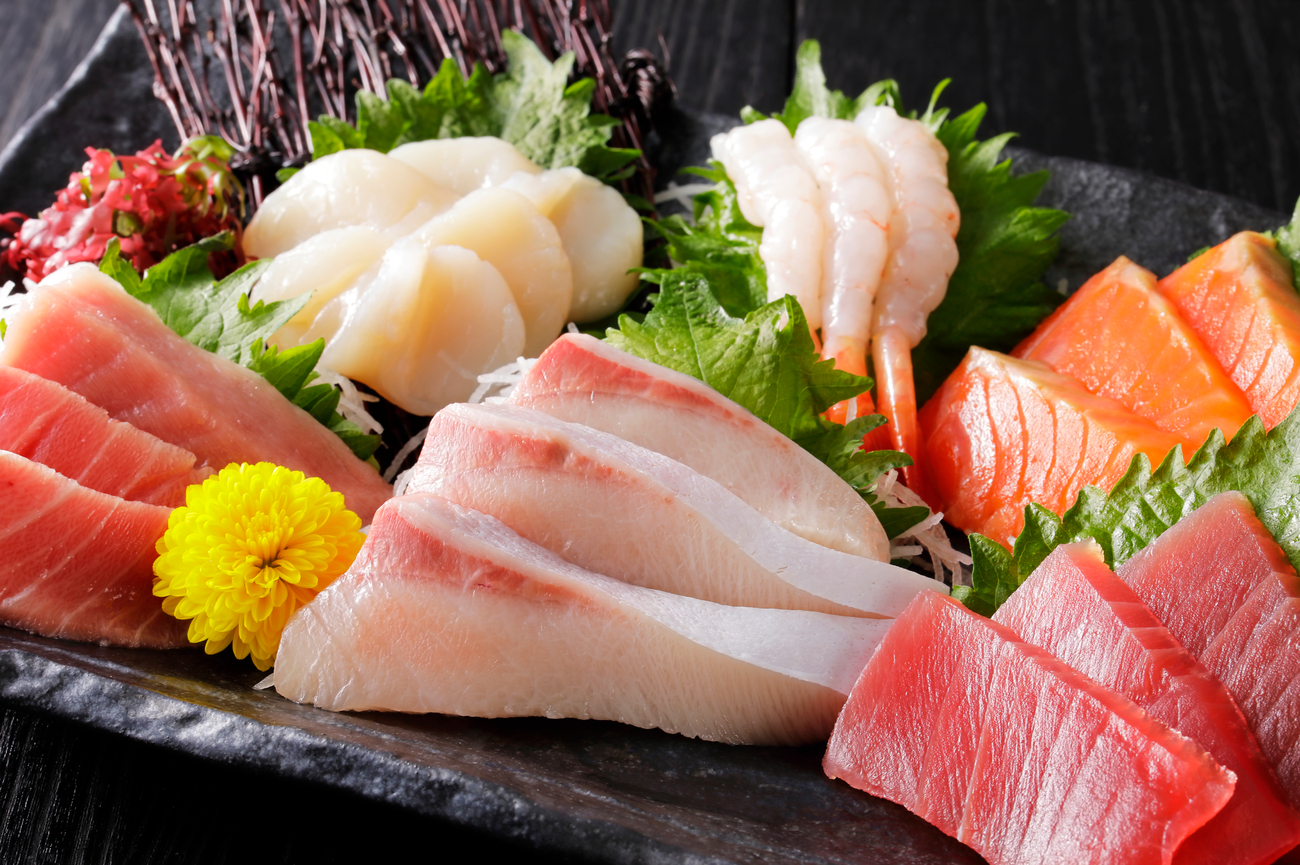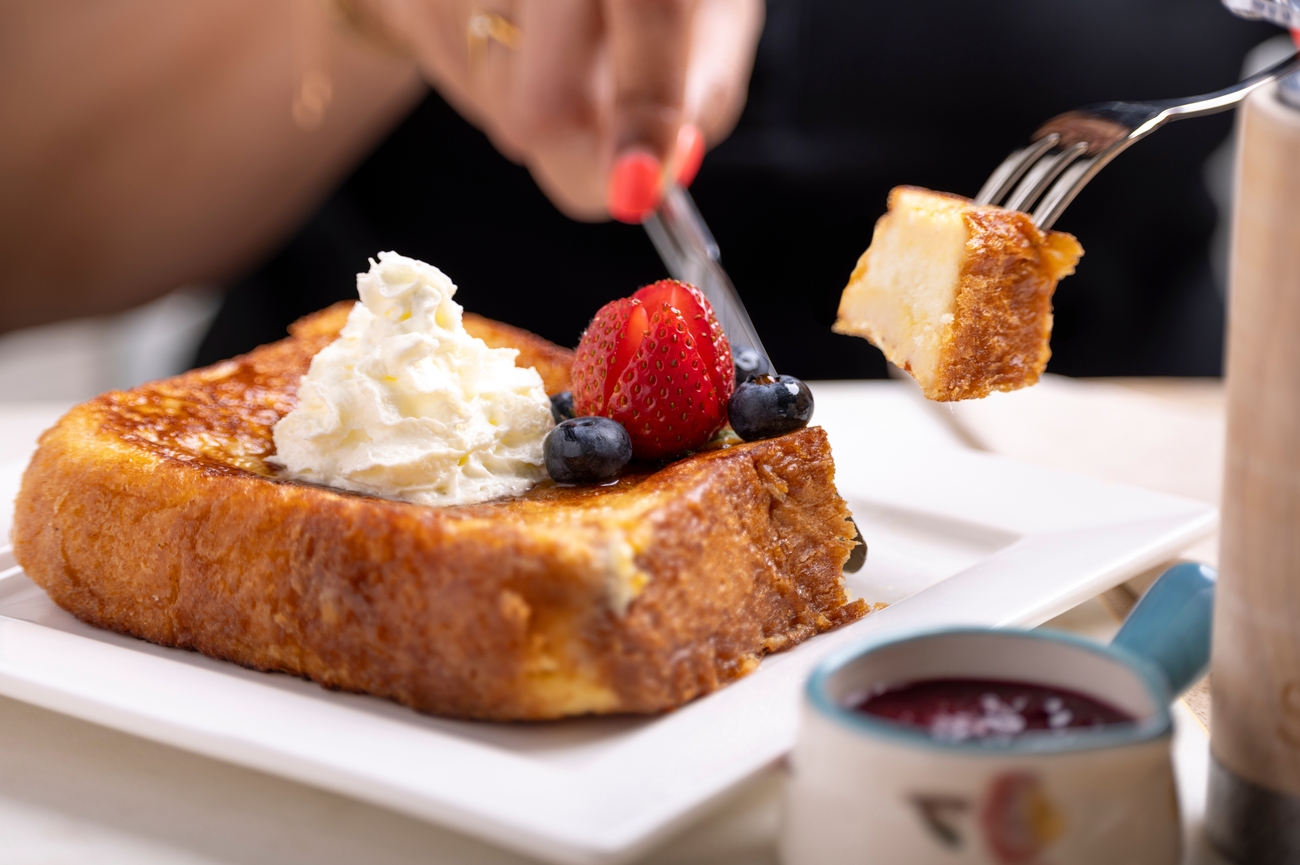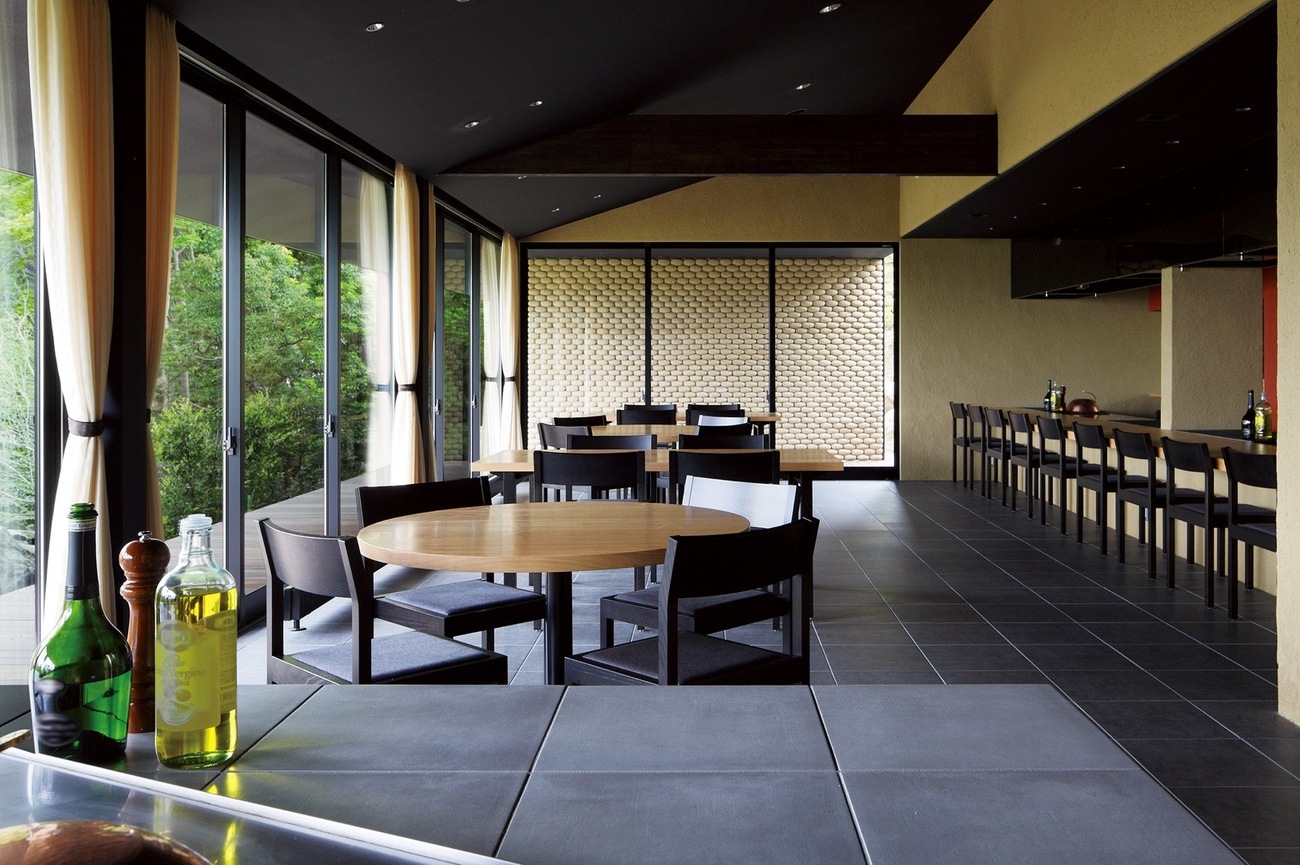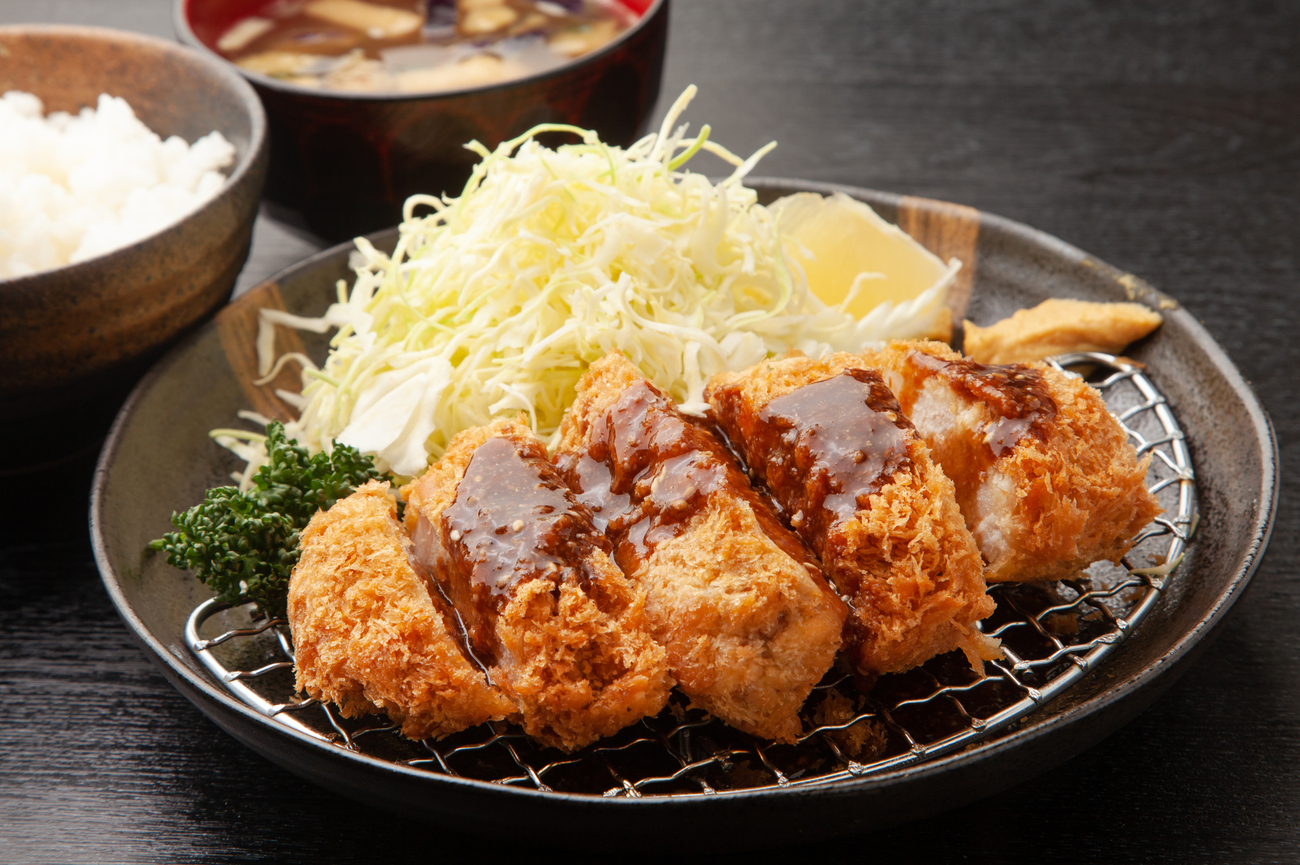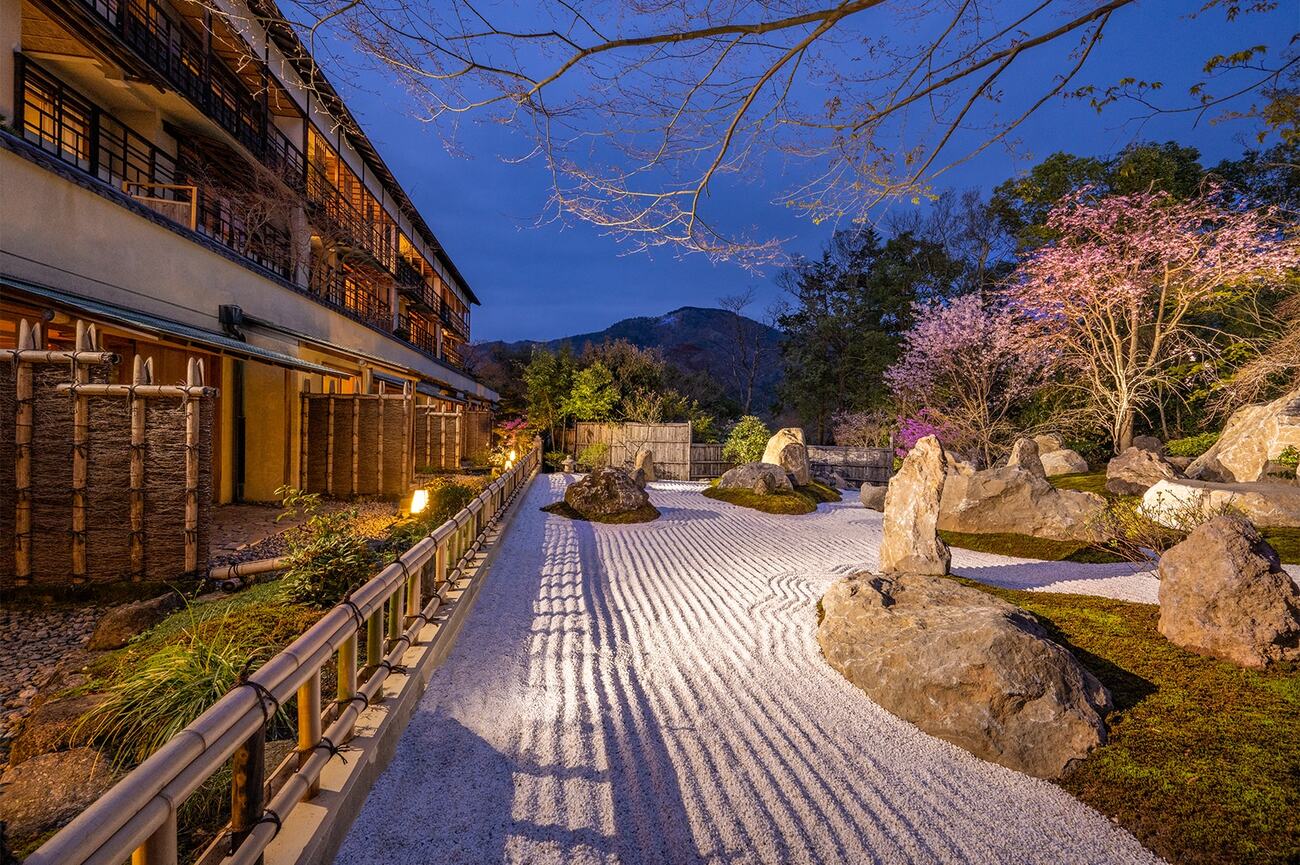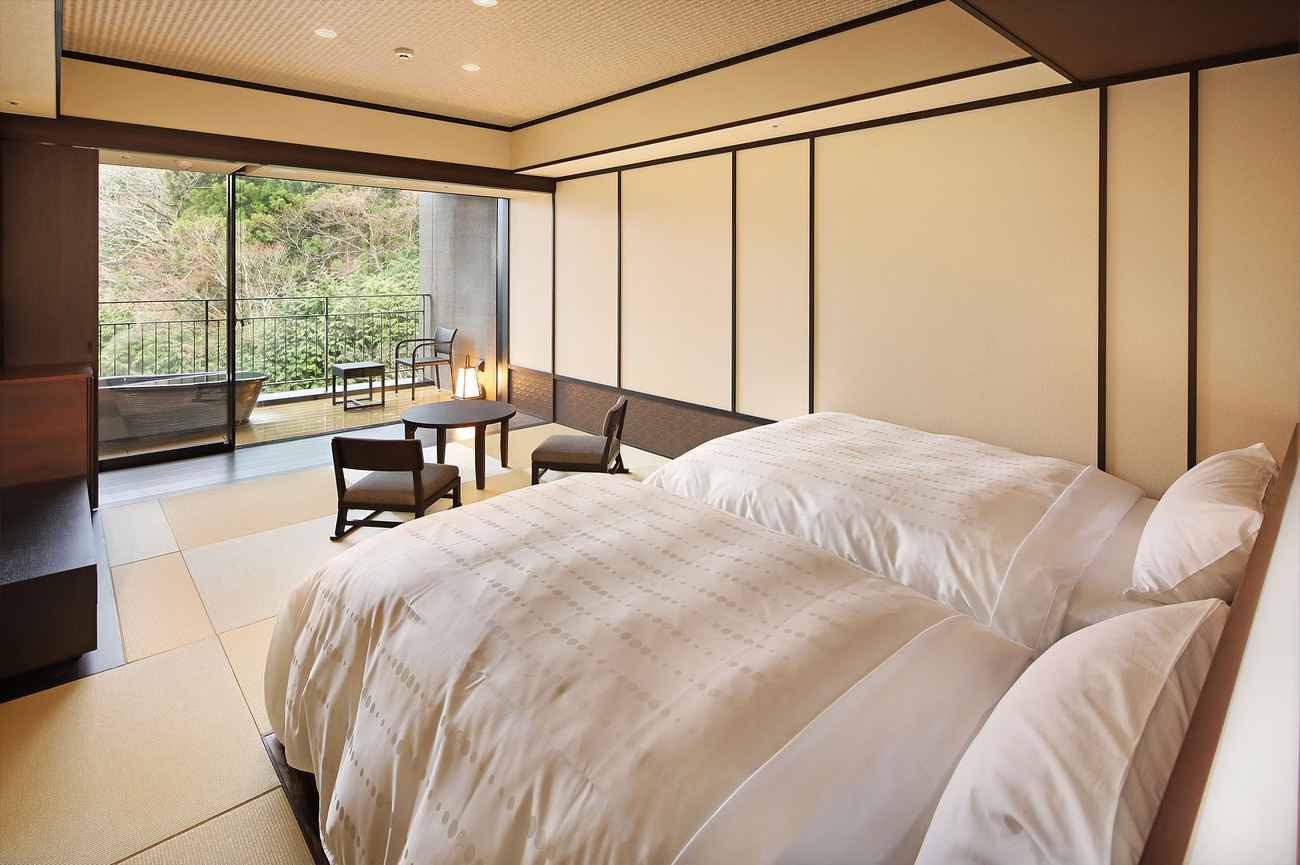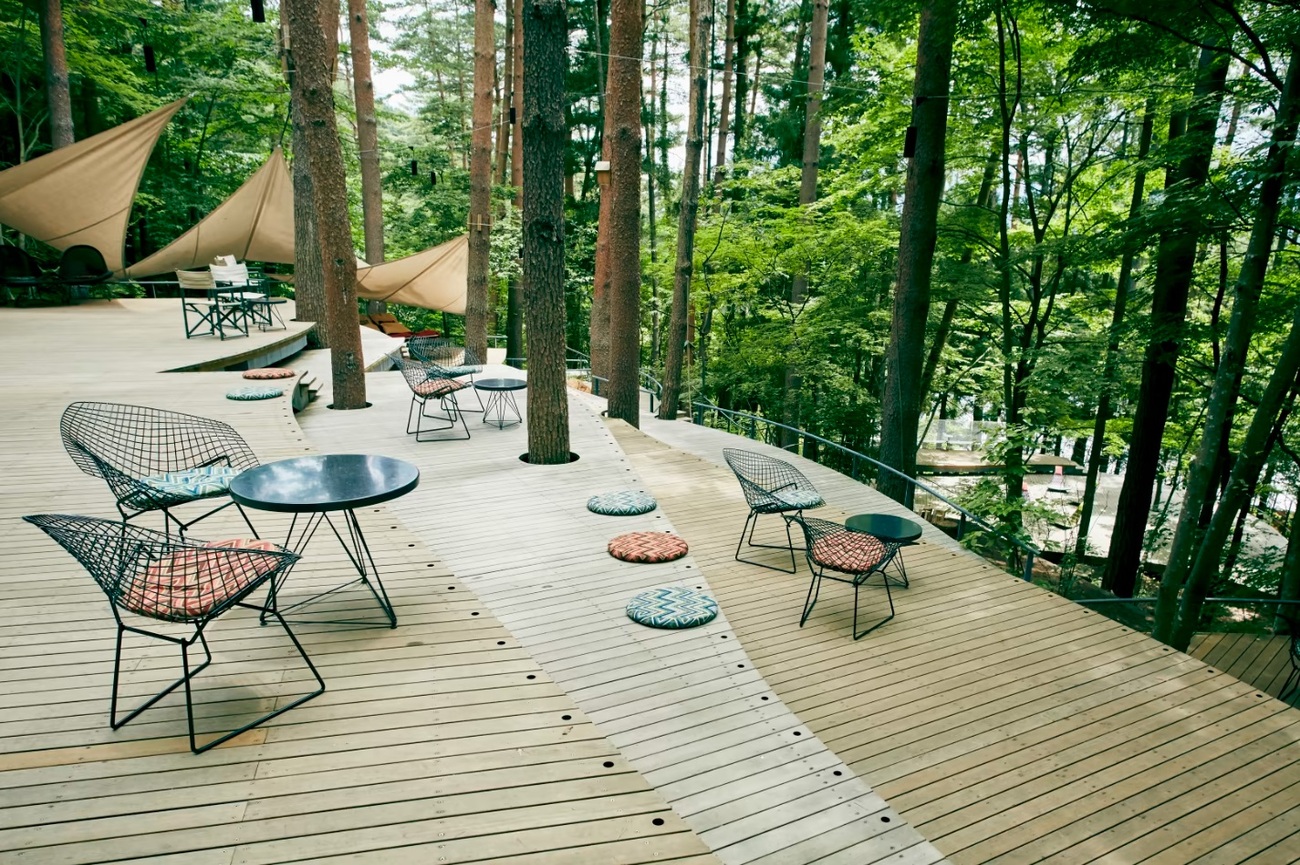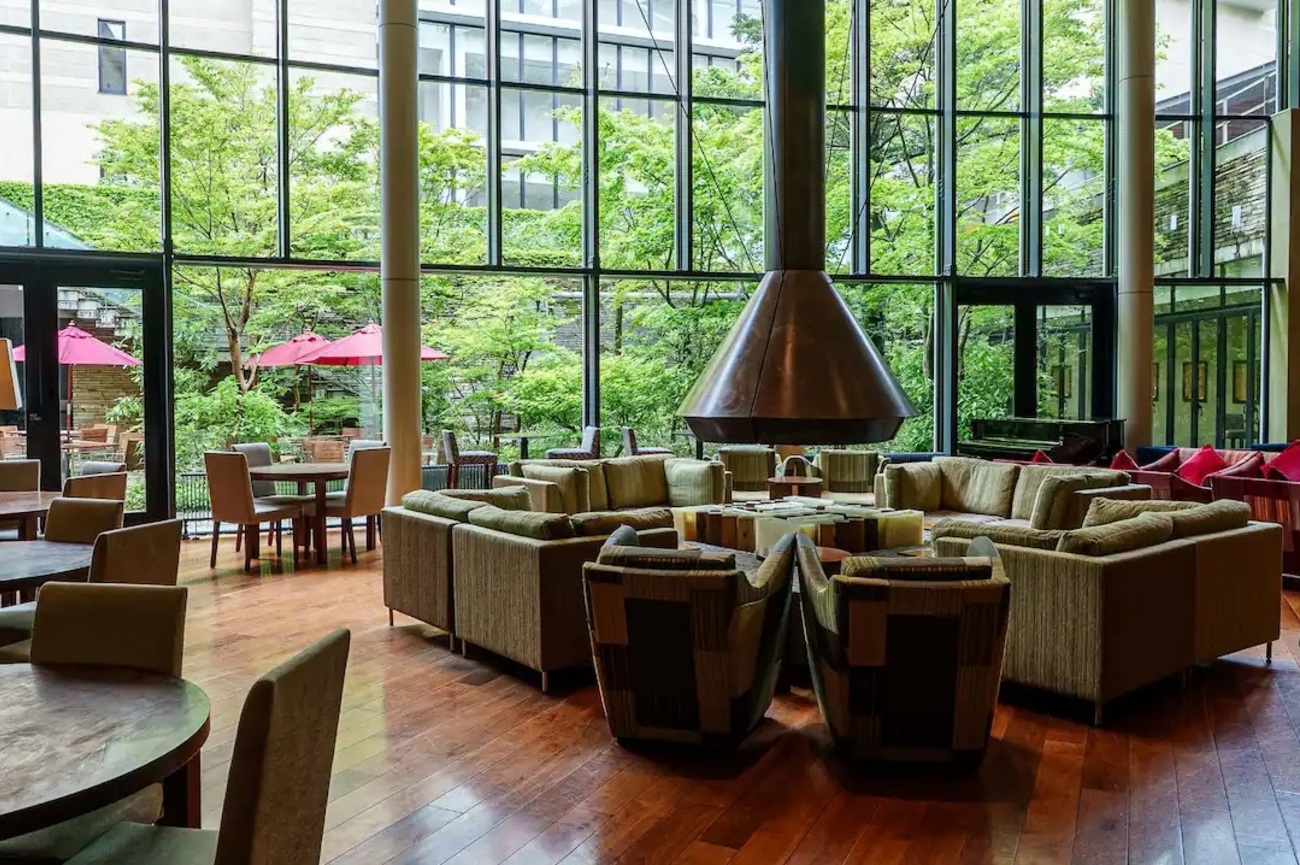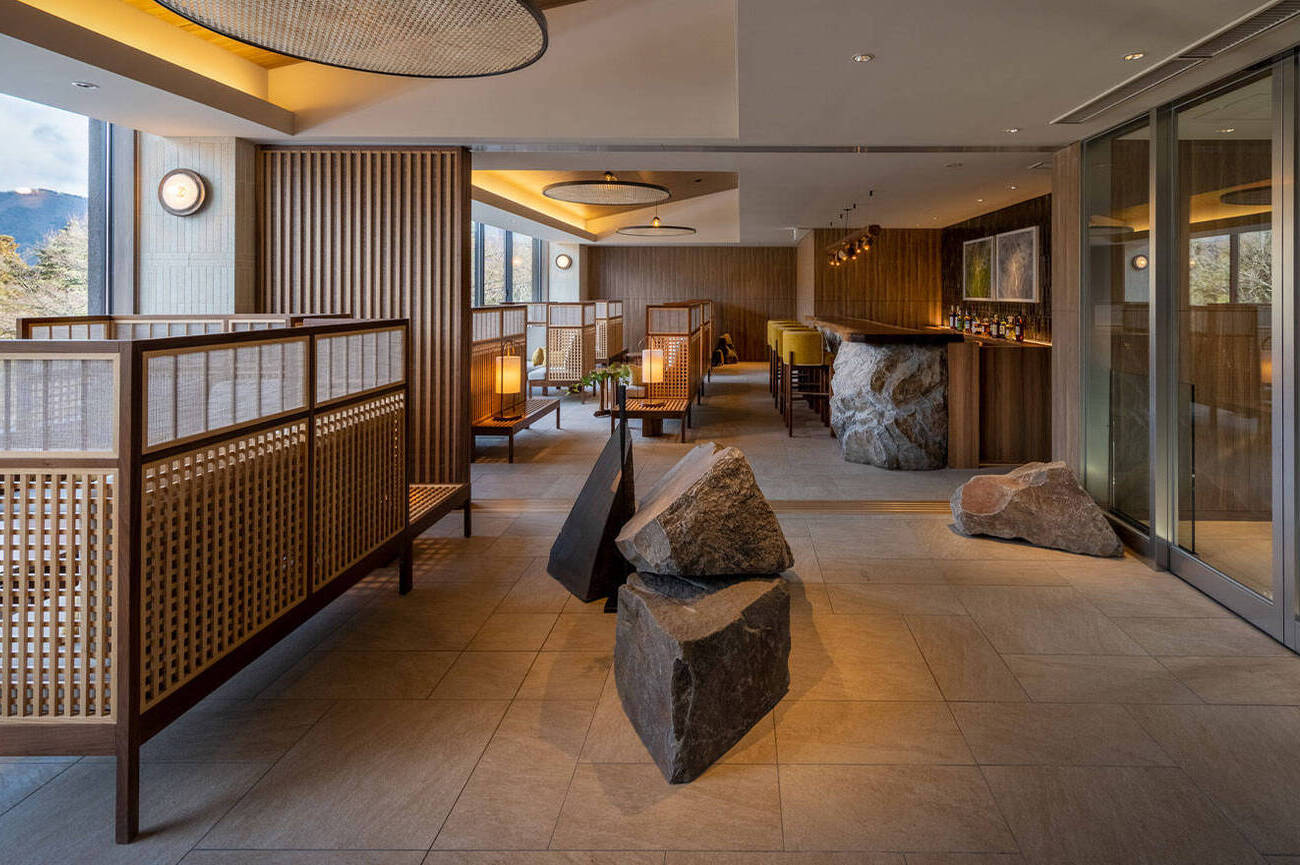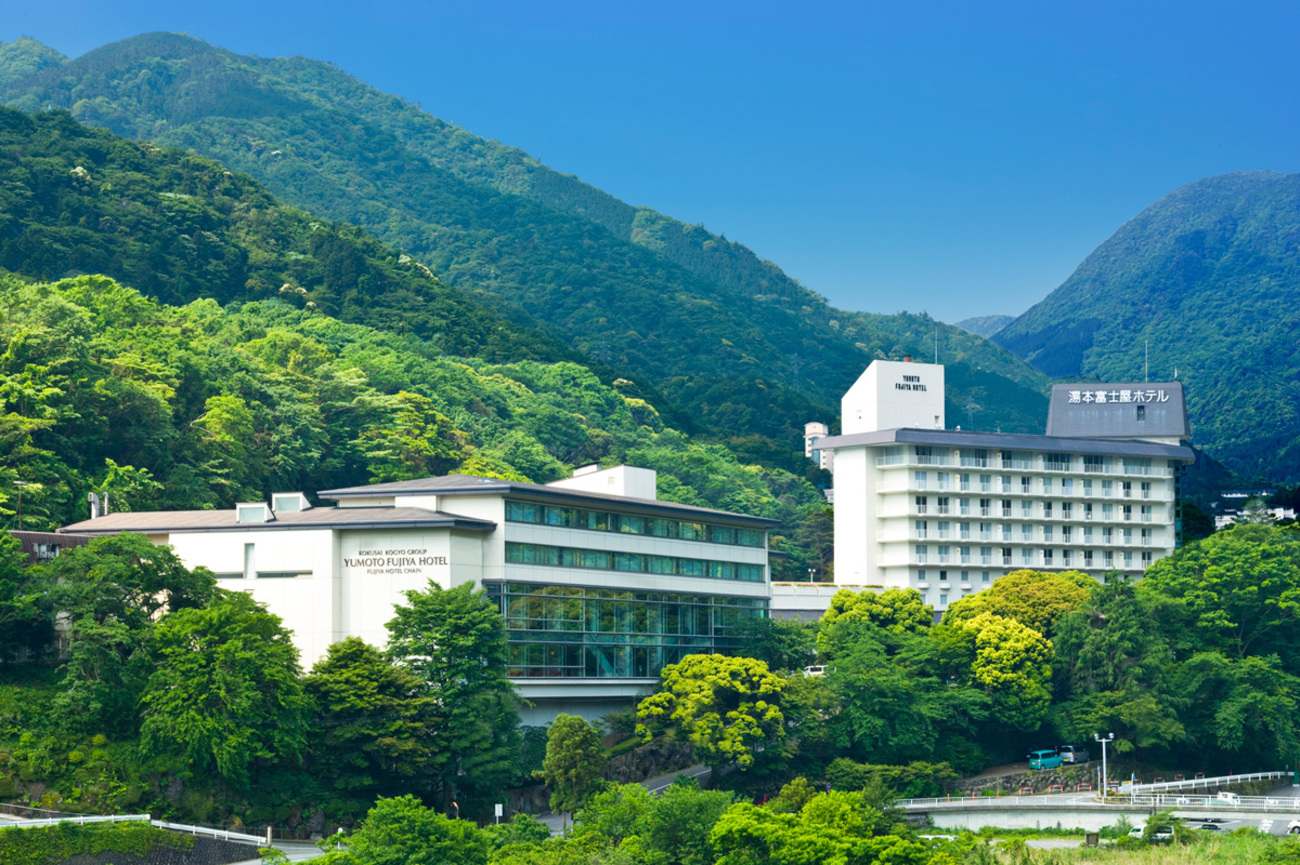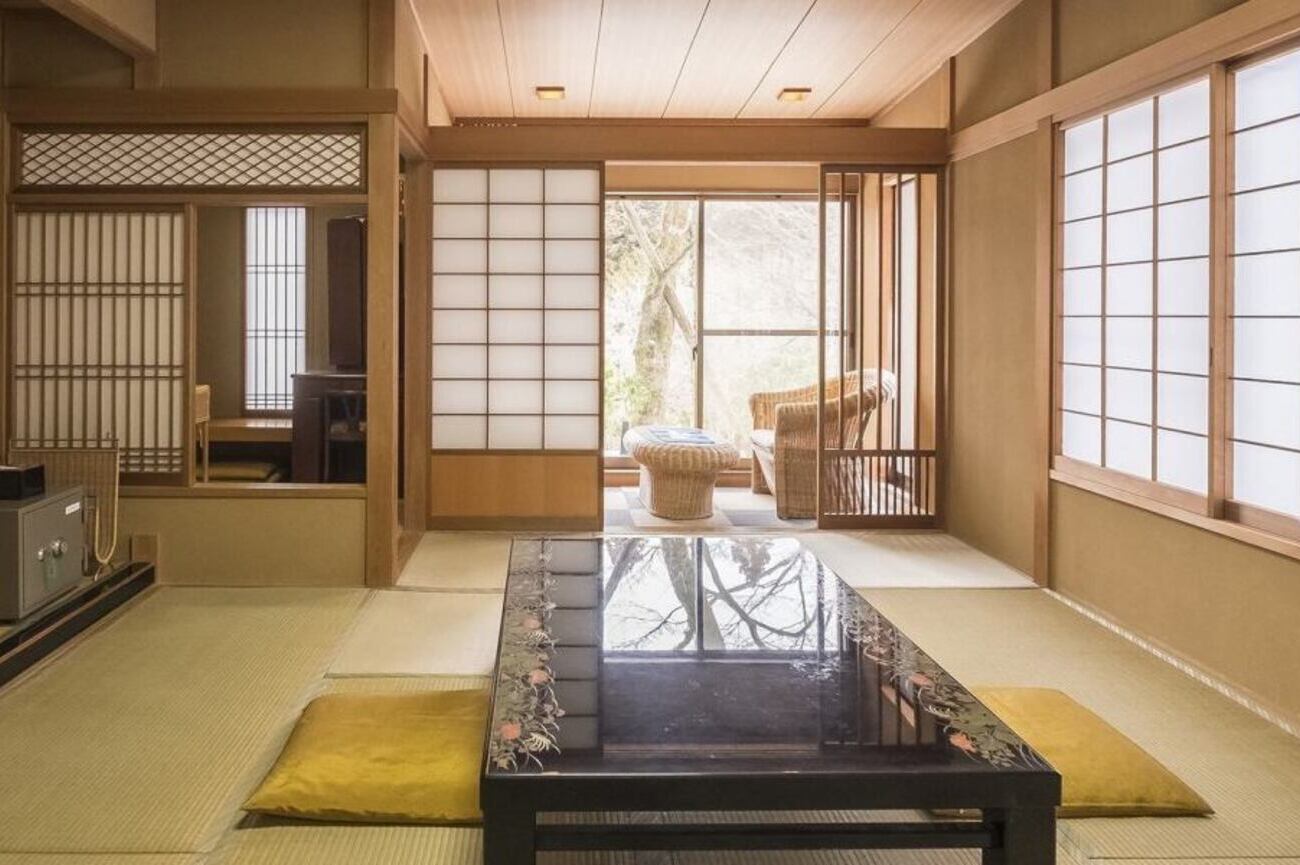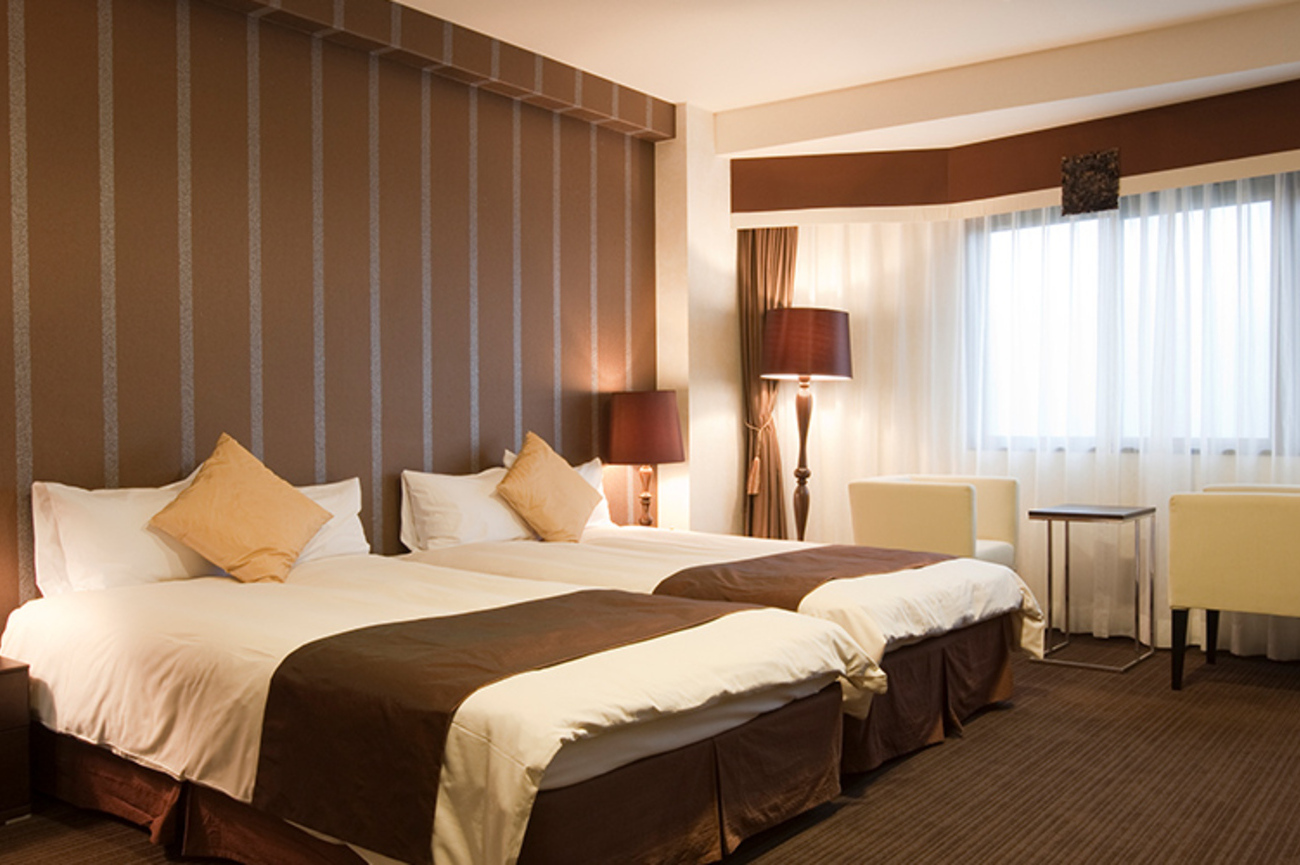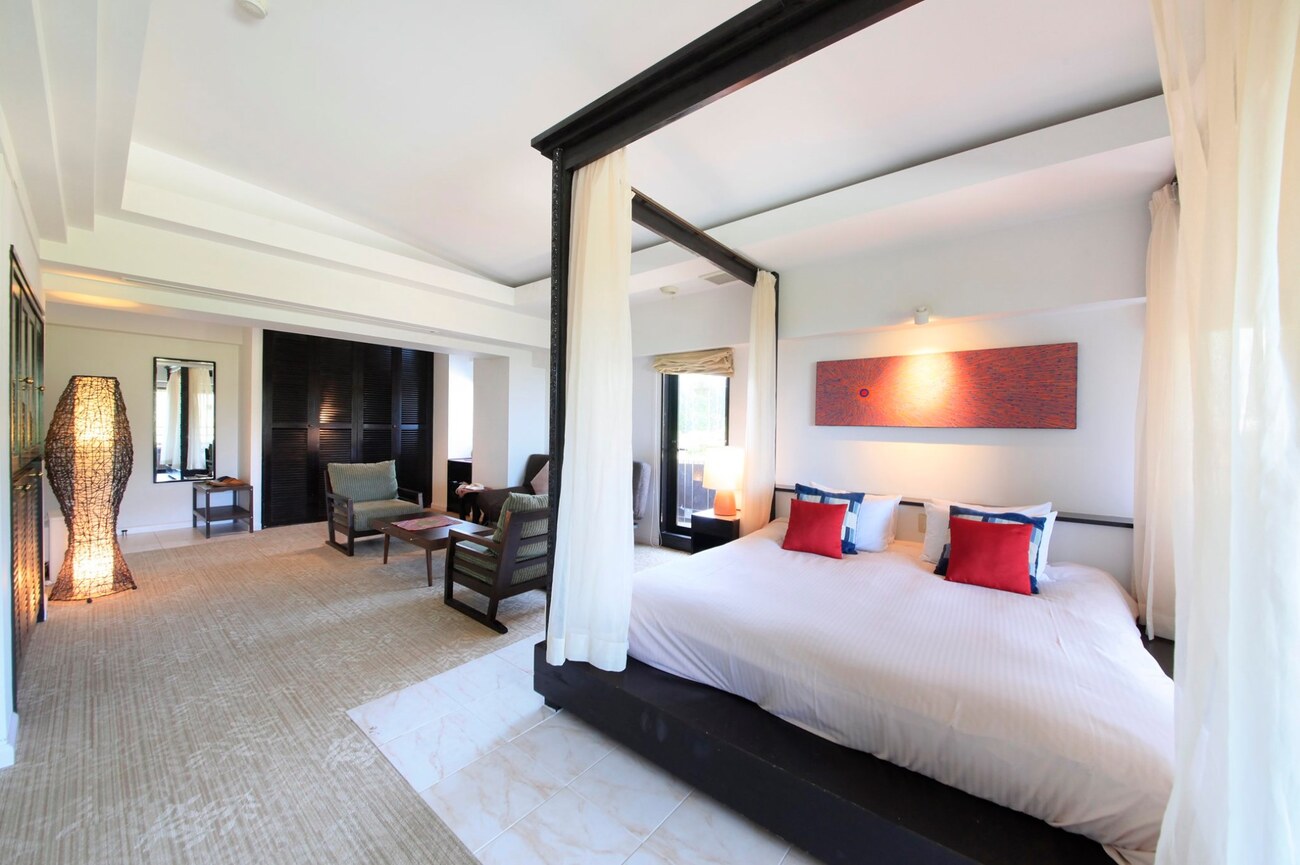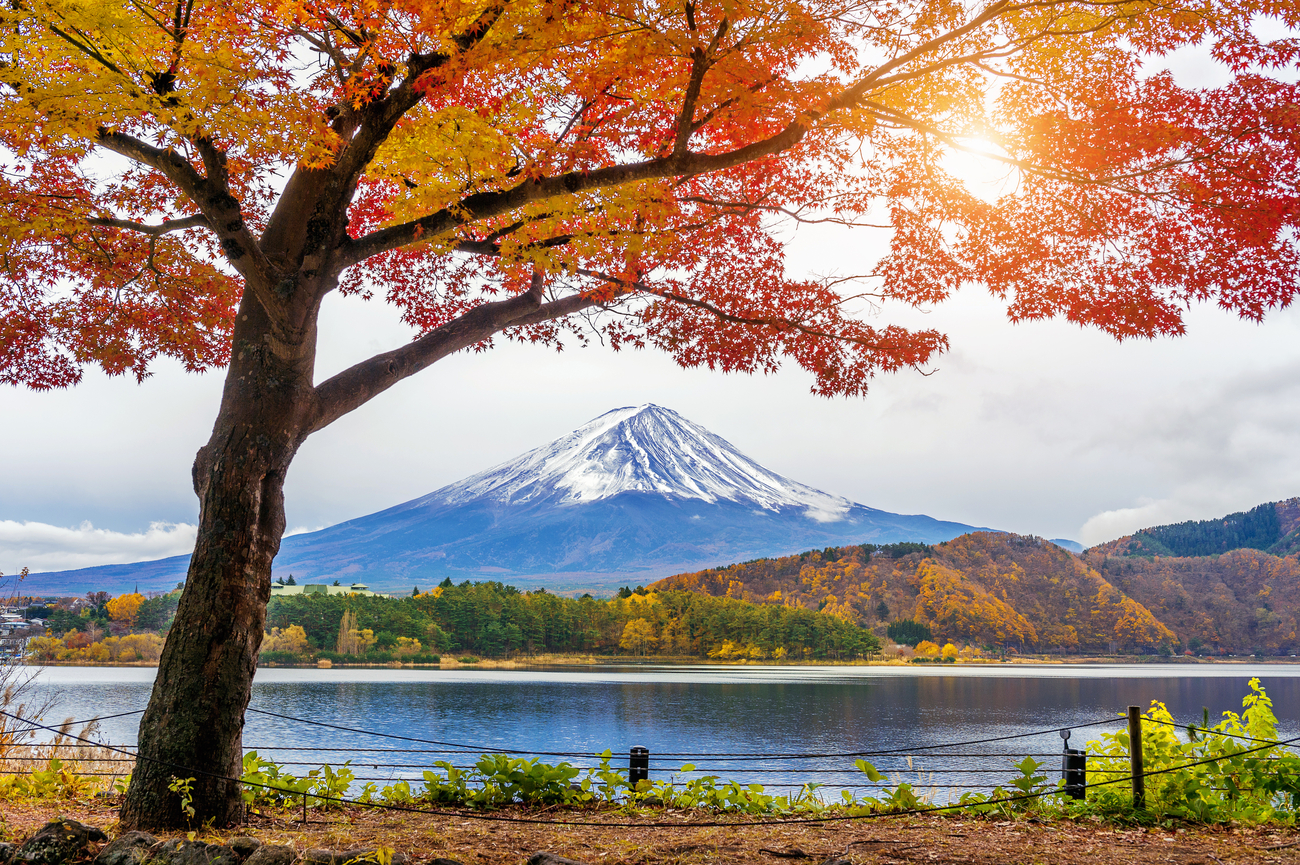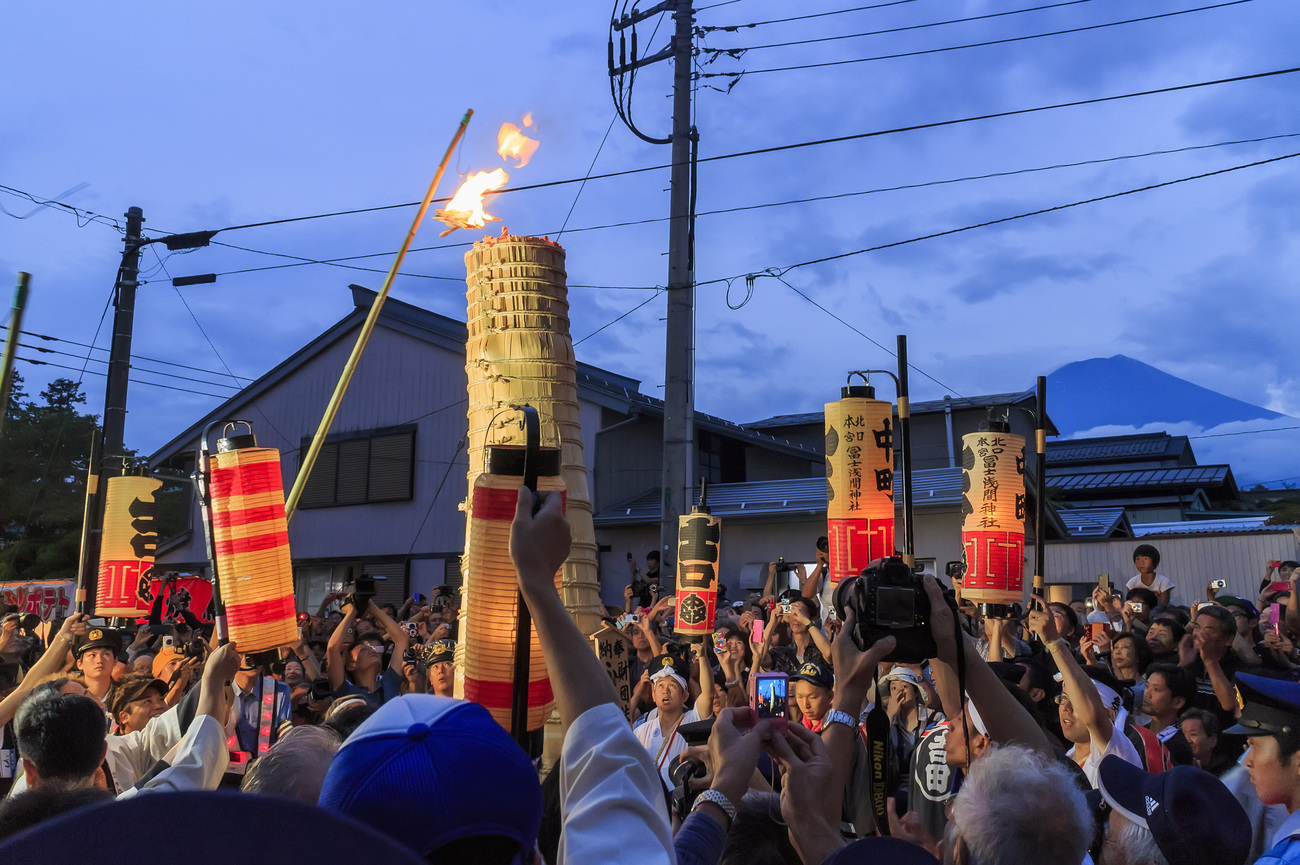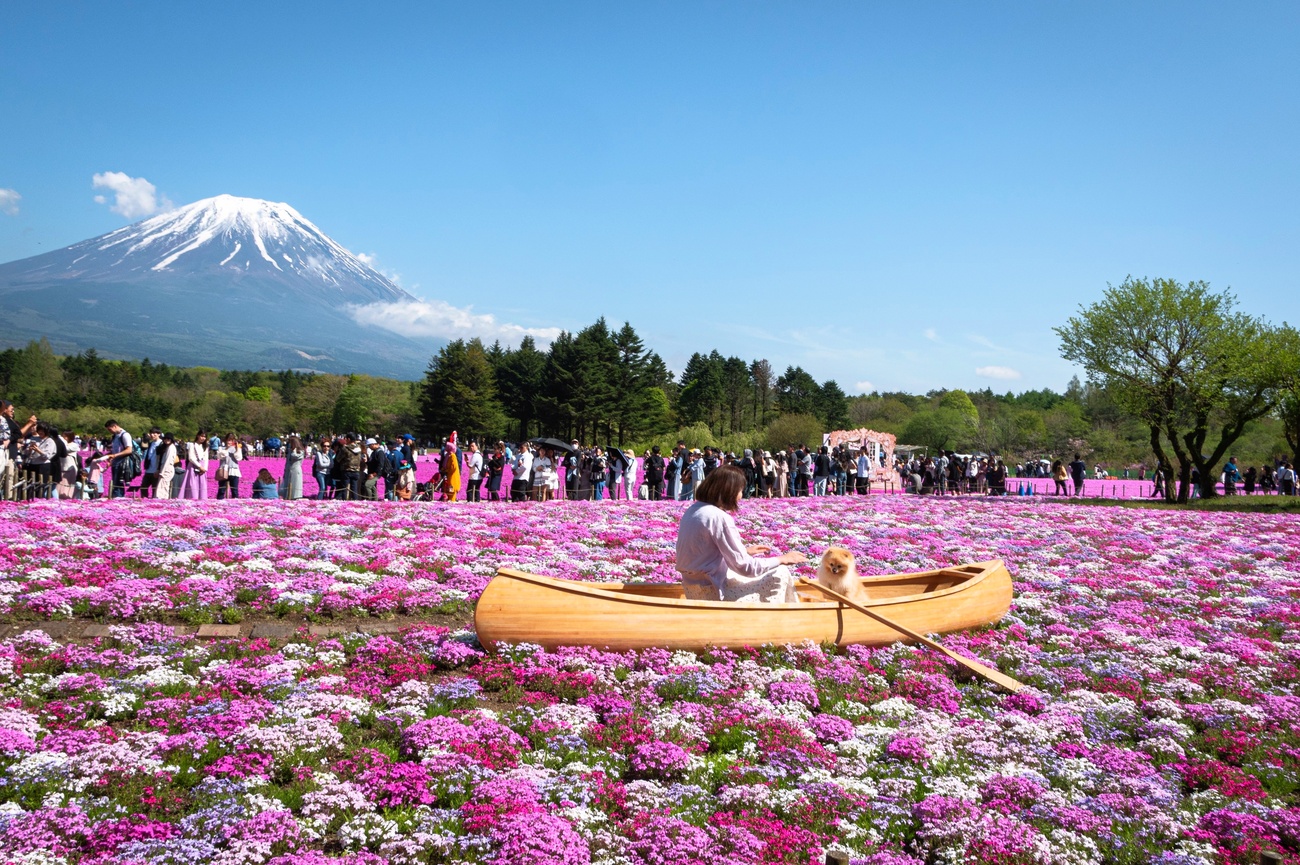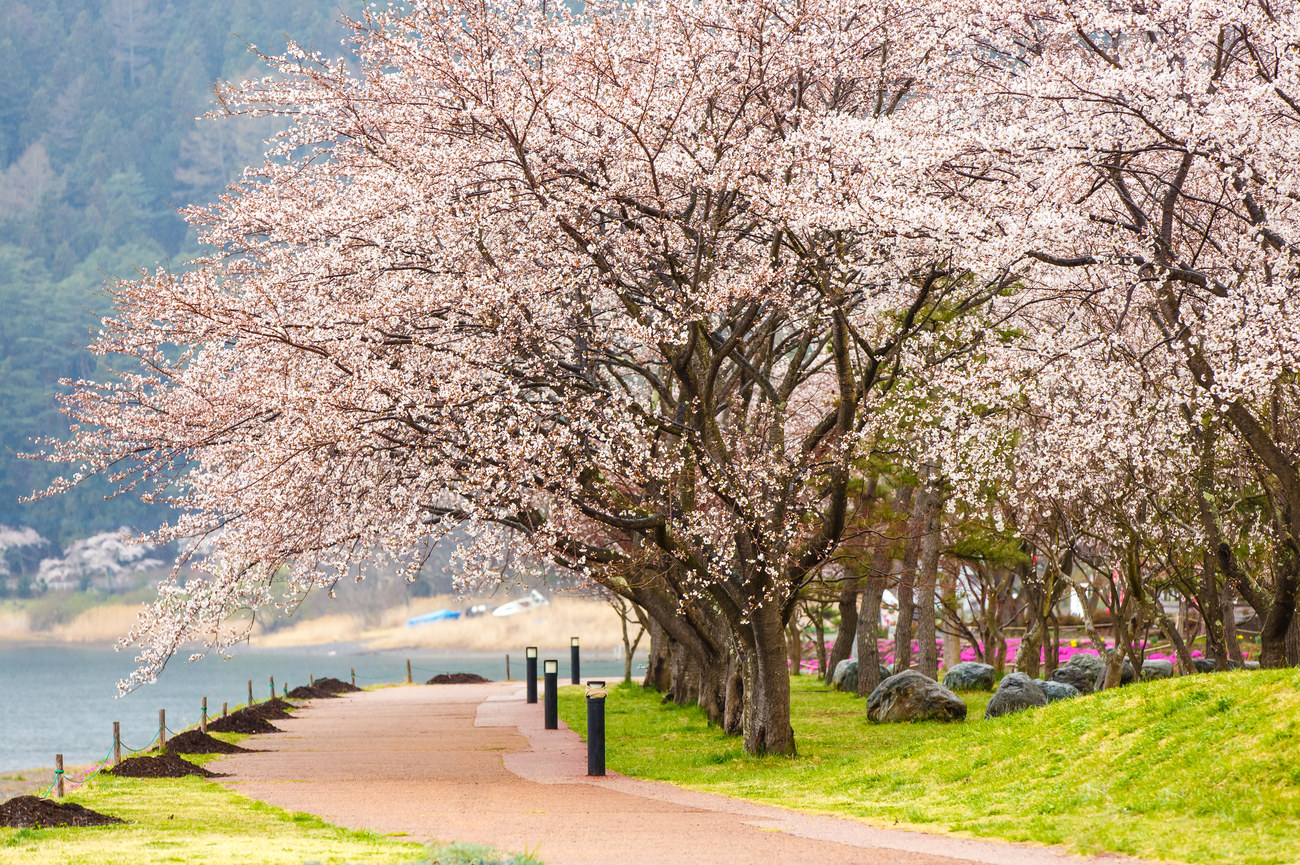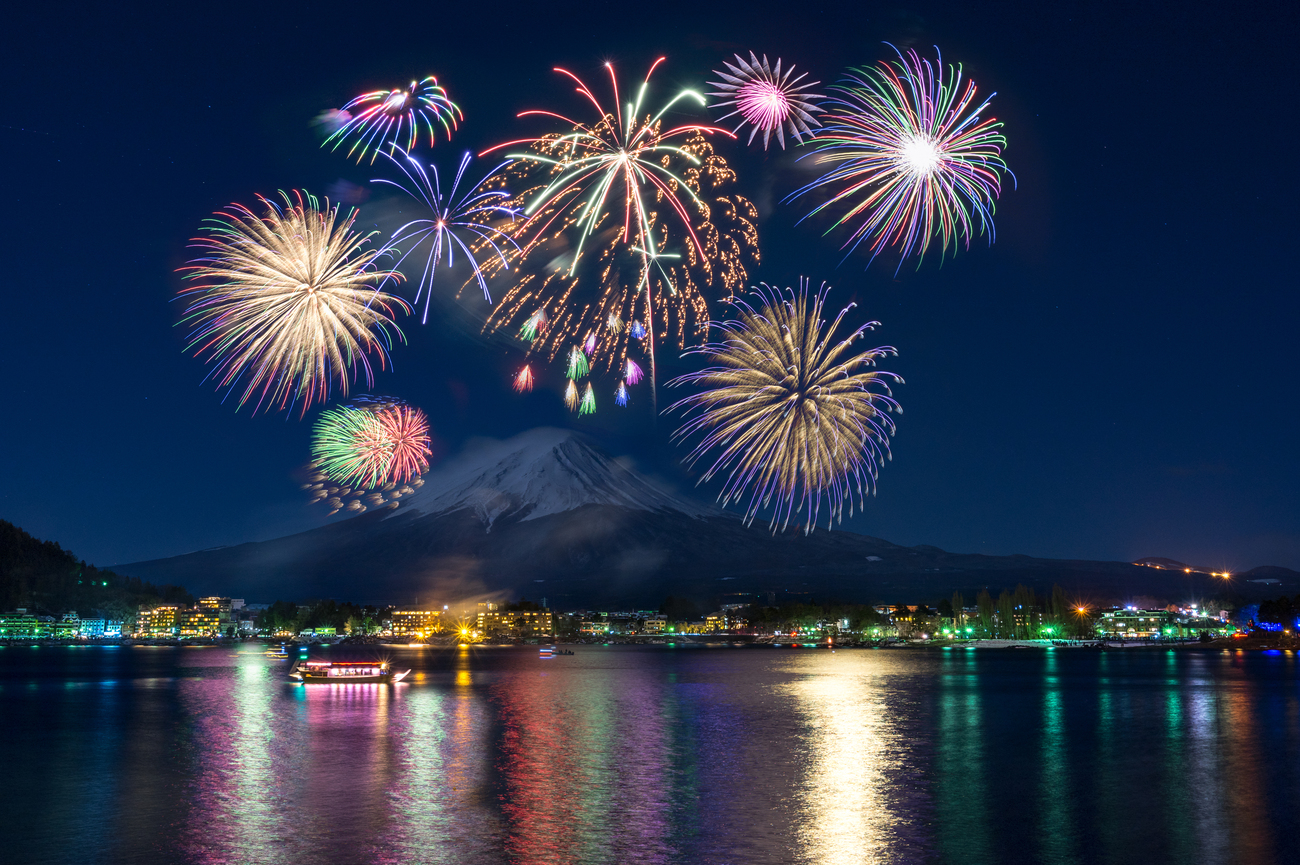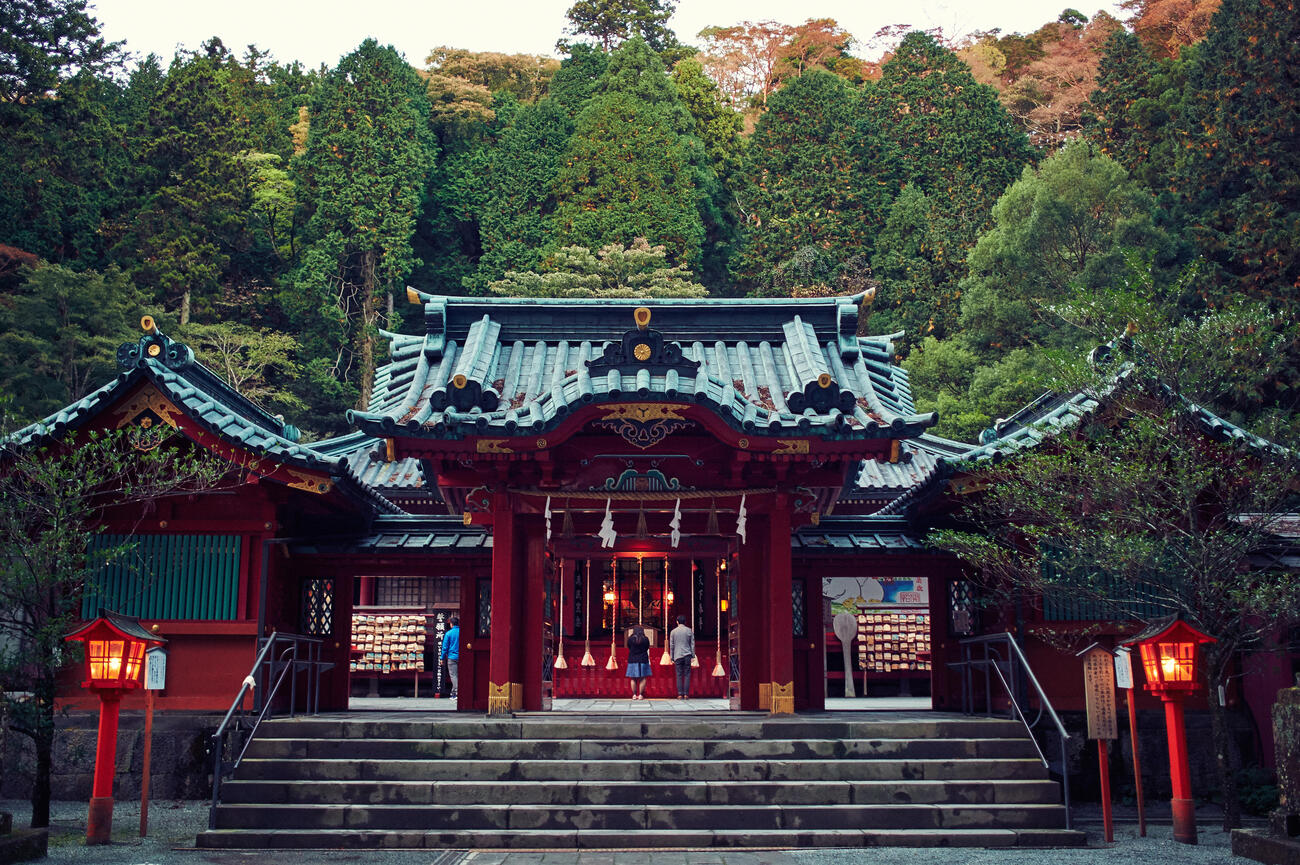Things to Do in Hakone and Mt. Fuji: 4-Day Itinerary
Some journeys leave a mark. Not the kind stamped on a passport, but the kind that lingers long after you’ve returned home. Hakone and Mt. Fuji does just that. Here, mornings begin with mist curling over still lakes. Where the landscape constantly shifts.
In just under two hours from Tokyo, Hakone is where most locals go to take a break. Where the outline of Mt. Fuji follows you like a memory you’re still making. It’s not about checking off landmarks, it’s about being present and living in the moment.
Over the next four days, we’ll take you into crater valleys and lakeside galleries, up panoramic ropeways and down cedar-lined pilgrimage roads. You’ll eat at places where the chefs prepare seasonal menus. You’ll stay at ryokans where the service speaks Japanese hospitality.
Let’s begin.
Day 1

Morning: Lake Ashi
Your journey begins at the symbol of Hakone at Lake Ashi. For the best view of the lake with Mt. Fuji in the background, proceed to Moko-Hakone, just a few steps south from the sightseeing boat pier. Here, you may also enjoy a sightseeing cruise on a pirate-like-ship, which we can book for you. There are also accommodations nearby available if you want to experience waking up with the view of Lake Ashi and Mt. Fuji in the morning.
Hakone Shrine
Next, take a 9-minute drive to Hakone Shrine. You’ll know you’re close when you can see the vermillion torii gate seemingly floating from the lake. Here, it’s customary to bow before entering the main hall and cleanse your hands at the chozuya basin.
Onshi Hakone Park
Just up the hill is Onshi Hakone Park, the former imperial palace complex. The park is filled with different types of cherry trees, making it a popular cherry blossom destination. In the park grounds, there’s a Western-style Lakeside Observation Building in the central square where you can enjoy the view of Lake Ashi, Komagatake and Mt. Fuji.
Day 1, Morning - Hakone Tour Map
Afternoon: Hakone Checkpoint
During the Edo Period, this was a serious security post on the Tōkaidō Road. Samurai would inspect travel permits and monitor traffic between Kyoto and Edo. Today, the watchtowers and officers’ quarters have been restored, complete with period artefacts.
Narukawa Art Museum
Take a 4-minute drive to Narukawa Art Museum. This art museum opened in 1988, features Nihonga-style paintings. Nihonga is a style of painting that adheres to the traditional Japanese artistic conventions. The museum also features a panorama lounge where you can view Lake Ashinoko, Mt. Fuji, and the “floating” torii fate of Hakone Shrine.
Tamamura Toyoo Life Art Museum
Just a short 3-minute walk is the Tamamura Toyoo Life Art Museum, the museum celebrates the work of Tamamura Toyoo, a contemporary artist whose painting inspirations come from nature and ordinary people’s lives. His works can also be seen at La Terrazza, an Italian restaurant serving clay-oven baked pizza; it's also featured on our “Where to Eat” section.
Day 1, Afternoon - Hakone Tour Map
Day 2

Morning: Hakone Ropeway
Let’s begin your morning with a nice scenic view. Board the Hakone Ropeway at Sounzan Station going to Owakudani Station, and enjoy breathtaking views of Owakudani, Hakone’s most famous tourist spot. Here, you’ll see forested slopes, steaming valleys, and volcanic craters as well as desolate mountainside covered by plumes of smoke, locals call it Hell Valley. The ropeway ride from Sounzan Station to Owakudani Station takes about 15 minutes, but the whole journey from Sounzan Station to Togendai Station near Lake Ashi takes about 45 minutes.
Owakudani
After a 15-minute ropeway ride, stop at Owakudani station, also known as the “Great Boiling Valley.” Formed during the last eruption of Mount Hakone nearly 3,000 years ago, this volcanic valley is still active. The air smells of sulphur, and the land is streaked with mineral hues: yellows, whites, ochres.
Walk the short trail toward the geothermal vents and bubbling pools, where the steam hisses and curls skyward. Along the path, you'll find vendors selling “kuro-tamago” or black eggs boiled in natural hot springs. Folklore says eating one adds seven years to your life, try one as you wander through the walking trail.
Day 2, Morning - Hakone Tour Map
Afternoon: Hakone Open-Air Museum
Next, take a 14-minute drive to Hakone Open-Air Museum. The concept of an “open-air museum” stems from the desire to create a harmonic balance between nature and art. Here, you’ll find a variety of sculptures displayed across the museum grounds, set against the backdrop of the surrounding valley and mountains.
The museum also features the Picasso Exhibition Hall, which showcases two floors of paintings, sculptures, and ceramic works by Picasso.
Outdoors, you’ll encounter abstract sculptures and the famous Symphonic Sculpture, which resembles a tower more than a traditional sculpture. Inside, you can ascend a spiral staircase enclosed in colourful stained glass, leading to a viewing platform with panoramic views of the park and the surrounding mountains.
Hakone Gora Park
Close to the Hakone Open-Air Museum is Hakone Gora Park, a primarily French styled landscape park featuring a large fountain and a rose garden. And houses two greenhouses, one dedicated to tropical botanical garden, and the other dedicated to flower garden. Here, you may also take part in craft activities such as glass blowing, glass etching, pottery and dried flower arrangement.
Day 2, Afternoon - Hakone Tour Map
Day 3

Morning: Mt. Fuji 5th Station
Begin with a scenic drive to Mt. Fuji 5th Station along the Subaru Line. This is the highest point accessible by vehicle, and is the popular starting point for climbing the mountain, but let’s save the climbing for day trips, for now let’s just admire the beauty and might of Mt. Fuji from this perspective. From here, you're not just looking at Mt. Fuji, you’re standing on her shoulder, and the air is noticeably cooler, thinner, and tinged with pine.
Visit the small Komitake Shrine, located on the mountainside, it’s the place where climbers offer prayers for safety before their trek.
Arakurayama Sengen Park
Next, head south and take a 45-minute drive to Arakurayama Sengen Park, one of the most photographed views in Japan, the iconic red Chureito Pagoda, framed by cherry blossoms with Mt. Fuji photogenically placed behind. But photos never quite capture the climb, to get up to the iconic photo spot, you have to climb 398 steps up from the base, the trail is shaded by cedar trees, so take your time. The reward isn’t just the view; it’s the stillness and beauty at the top.
Arakura Fuji Sengen Shrine
Behind the pagoda lies Arakura Fuji Sengen Shrine, founded in 705 to enshrine the deity of the site. Locals visit the shrine to ward off evil, to pray for family happiness and safe childbirth.
Day 3, Morning - Mt. Fuji Tour Map
Afternoon: Lake Kawaguchi
Make your way to Lake Kawaguchi, the most picturesque and the second-largest of the Fuji Five Lakes. The best views of Mt. Fuji can be seen on the lake's northern shores especially during cherry blossom season. Although Lake Kawaguchi sits right at the base of Mt. Fuji, a clear view of the mountain isn't always guaranteed due to cloud cover. The best time to catch an unobstructed view of the mountain is usually in the early morning before 9 a.m. or in the late afternoon.
Mt. Fuji Panoramic Ropeway
Next, take a 6-minute drive south to Mt. Fuji Panoramic Ropeway. Ascend to an observation deck near the peak of Mt. Tenjo, from the top you’ll see panoramic views of Lake Kawaguchi and Mt. Fuji. There is also a hiking trail from the observation deck down, the descent usually takes 30 minutes.
Day 3, Afternoon - Mt. Fuji Tour Map
Day 4

Morning: POLA Museum of Art
Head deep into the forested hills to the POLA Museum of Art, the museum displays a private art collection of the late Suzuki Tsuneshi, owner of The POLA group, a skincare and beauty brand. Majority of the building is constructed underground so as not to disrupt the natural environment that surrounds it. The museum features modern and contemporary paintings, sculptures, ceramics and glassware by mostly Japanese and European artists. The museum displays rotating exhibits from its permanent collection including works by Cezanne, Monet, Picasso and Renoir.
Okada Museum of Art
Next, take a 12-minute drive to Okada Museum of Art. This private museum spans five floors and features the largest indoor gallery in the area. It houses approximately 450 artworks, including Japanese paintings, ceramics, lacquerware, Buddhist sculptures, and bronzes from China and Korea. Featuring pieces by masters such as Hokusai, Utamaro, Tawaraya Sotatsu, and Ito Jakuchu.
Day 4,Morning - Hakone Tour Map
Afternoon: Hakone Museum of Art
Opened in 1952 on the mossy slopes of Gora, Hakone Museum of Art is the oldest museum in Hakone dedicated to Japanese ceramics. The main exhibition showcases pottery from the Jōmon period (10,000 B.C.) through the Edo period (1603–1868). Large windows offer views of the surrounding Hakone mountains, and downstairs you can enjoy tea and sweets in the on-site tea room.
Hakone Botanical Garden of
Wetlands
Next, take a 13-minute drive to Hakone Botanical Garden of Wetlands. This outdoor garden was established in 1976 to preserve and exhibit native wetland and alpine plants. The 20-hectare site features boardwalk paths across marshes, fens, bogs, and swamp forests. You'll find around 200 wetland plant types and over 1,300 alpine species, including iris, lilies, primulas, and Habenaria orchids.
Tenzan Onsen
From Hakone Botanical Garden of Wetlands, wrap up your day at Tenzan Onsen, one of Hakone’s most beloved traditional bathhouses, offers a luxurious yet authentic end to your four-day immersion through Hakone and Mt. Fuji. The design feels timeless: dark timber, stone pools, steam rising through bamboo groves. You’ll find both indoor and outdoor baths. There are also rest areas and places to eat here. The meal options are few but the quality is high and matches with the whole experience.
Day 4, Afternoon - Hakone Tour Map
Day Trips from Hakone
- Gotemba: Shopaholics can enjoy a luxurious retail experience at Gotemba Premium Outlets, Japan’s most luxurious outlet complex, with a great view of Mt. Fuji. After shopping, spend the afternoon at a vineyard nearby for a wine-and-style pairing.
- Odawara Castle: Just 40 minutes away, Odawara is home to a reconstructed three-tiered, five-storied samurai-era castle with panoramic sea views. Known for its flower-filled park complete with a mini train and small amusement park.
- Izu Peninsula: If you’re a nature lover, you’ll enjoy the dramatic coastline, cliffside temples, and open-air onsen of Izu. Explore Jogasaki’s suspension bridge, dine on freshly caught seafood, or enjoy a scenic steam train ride along the coast.
- Tokyo: Yes, you can do Tokyo in a day (selectively). Just over an hour from Hakone, explore Tsukiji Outer Market in the morning, cross the Shibuya scramble crossing, and explore the beautiful garden of Shinjuku.
- Atami: A charming seaside town at the northeastern base of the Izu Peninsula. Enjoy the MOA Museum of Art with its cliffside views, or relax at a modern onsen spa with ocean views.
- Mishima and Numazu: If you’re a foodie, then these two places are right for you. Enjoy riverside eel restaurants and shrine visits at Mishima, and the feast your eyes with a treasure trove of seafood and quiet harbourside cafés at Numazu Port.
UNESCO World Heritage Sites in Mt. Fuji
- Mt. Fuji (Fujisan, sacred place and source of artistic inspiration): Recognised by UNESCO for its spiritual and artistic legacy, Mt. Fuji has inspired generations of poets, monks, and artists. Beyond its summit, the heritage designation comprises shrines, lakes, and pilgrimage routes surrounding the mountain.
- Fujisan Hongū Sengen Taisha Shrine: Located at the base of Mt. Fuji, this is the head shrine of over 1,300 Sengen shrines across Japan. Founded over 1,000 years ago, it’s where pilgrims once prayed before beginning their ascent.
- Oshino Hakkai: A postcard-perfect village of eight sacred spring-fed ponds. Oshino Hakkai is located between Lake Yamanaka and Lake Kawaguchi. The water, filtered through layers of volcanic rock over decades, is revered for its purity. Each pond has a spiritual significance.
- Shiraito Falls: Located in the southwest foothills of Mt. Fuji, the Shiraito Falls is Ranked among the most beautiful waterfalls in Japan, and its name translates to “Threads of White Water.” The falls are considered sacred and often visited by practitioners of Shugendō mountain worship.
Golf Courses Near Hakone and Mt. Fuji
- Hakone Country Club: This private 18-hole, par‑72 course was designed by Shiro Akahoshi and opened in 1954. The club hosted the Japan Women’s Open in 2002. Its rolling fairways and natural layout reflect an Alister MacKenzie design philosophy.
- Daihakone Country Club: This 18-hole, par‑73 championship course opened in 1954, hosts the CAT Ladies Golf Tournament. It offers 18-hole and par‑73. The 17th hole, nicknamed “Lotus Flower,” features challenging bunker formations.
- Fuji Classic Golf Club: Located in Yamanashi Prefecture, this 18-hole, par‑72 course was designed by Desmond Muirhead, and is famous for being the closest golf course to Mt. Fuji, and certainly has the best views of the World Heritage site. Each hole is inspired by a print from Hokusai’s Thirty-Six Views of Mount Fuji, set against unobstructed views of Mt. Fuji, visible from every hole.
- Gotemba Golf Club: Located at the foot of Mt. Fuji in Gotemba City, this 18‑hole, par 72 public course was designed by Shiro Akaboshi. It features rolling, tree-lined fairways, varying elevations, and large, contoured greens. The course offers wide views of Mt. Fuji and the Pacific Ocean.
- Fujizakura Country Club: A strategic 18-hole, par‑72 course located on the northern slopes of Mt. Fuji. Designed with Japanese red pine and larch separating each hole. It's one of Japan’s longest par‑71 courses and hosts the annual Fujisankei Classic, part of the Japan Golf Tour
Racecourses Near Hakone
- Tokyo Racecourse: Japan’s premier horse racing venue and home to the country’s most prestigious event: the Japan Cup. It offers a world-class racing experience with first-class boxes, VIP suites, fine dining options, sake bars, and stunning skyline views.
- Kawasaki Racecourse: Located 1.5 hrs from Hakone by train. Kawasaki is known for its lively night races and offers a more casual, urban vibe. The track is compact and the crowd is a mix of frequent bettors and curious travellers.
- Nakayama Racecourse: Famous for its challenging jumps and seasonal events like cherry blossom races in spring. The track itself is architecturally interesting, with steep inclines and a tight final turn that makes every race dramatic and thrilling.
Ski Resorts Near Mt. Fuji
- Fujiyama Snow Resort Yeti: Located on the southern slope of Mt. Fuji, this is the closest ski resort to the Tokyo–Hakone area. It’s perfect for a quick dose of winter fun activity. The resort features beginner-friendly runs, snow play zones for families, and even night skiing. On a clear day, you’ll see Mt. Fuji towering behind you.
- Fujiten Snow Resort: Located on the north side of Mt. Fuji near Lake Kawaguchi, the resort offers a greater variety of courses, including terrain parks and intermediate slopes. The views here are stunning and are also open to non-skiers for snow tubing and walking.
Vineyards Near Hakone
- Château Katsunuma: One of the most prestigious wineries in the Katsunuma area, it's family owned and offers daily winery tours that include a look at the production facilities and barrel cellars, followed by free samples of their wines and fruit juices.
- Grace Wine: Founded in 1923, Grace Wine has remained a family-operated winery across four generations . They grow grapes in select vineyards, choosing sites based on sunlight, elevation, drainage, and airflow, and use hand-harvesting and modern vine training methods. Its "Grace Koshu" white has earned consecutive gold medals at the Decanter World Wine Awards from 2014 onward.
- Kurambon Wine: This family-owned winery dates back to 1913 and operates on a century-old focus on Koshu and Muscat Bailey A grapes. They grow grapes organically, meaning no fertilizers, minimal intervention, and natural canopy management to preserve terroir and ecological balance. Here, you can taste wines crafted with minimal filtration, natural yeast, and light oak aging to highlight terroir and grape character.
Brewery Tours and Sake Tasting in Hakone
- Fujimasa Sake Brewery: The closest brewery to Mt. Fuji. They use Mt. Fuji spring water and selected rice varieties to create a range of products, from junmai daiginjo to dry honjozo “Genkotsu.” The tour takes about 15 minutes and after you may taste a selection of their Core labels (Chiyonomine, Genkotsu, junmai daiginjo) plus seasonal or limited-edition sake.
- Makino Sake Brewery: One of the oldest active breweries in Japan, operating for over 330 years. They use Mt. Haruna spring water and premium sake rice to make award‑winning labels under their flagship brand Osakazuki, which has received over 20 gold medals in national competitions.
- Fujinishiki Shuzō: A family-run brewery for 18 generations. They use Mt. Fuji subsoil water and their own rice to make sake . Their Junmai Ginjo won the Platinum Prize at Kura Master 2021 and is best served chilled with oysters or sushi.
Luxury Spa and Wellness Experiences in Hakone and Mt. Fuji
- AN-SPA Hakone: This spa offers reservation-only treatments combining Eastern and Western techniques using Japanese products like aromatherapy oils, Qi-style body therapy, and facial options . The facility includes a relaxation lounge, private treatment rooms, and bath amenities.
- Hakone Yuryo Private Onsen & Spa: A full-scale hot spring resort near Hakone-Yumoto Station. The facility includes private open-air baths with 19 rooms in three sizes that can accommodate couples or groups, Loyly sauna, a Finnish-style steam sauna session led by staff hourly, and oil-based body and foot massages.
- Tensui Saryo – Spa Soisoi: A spa located within the Tensui Saryo ryokan in Gora. The spa features private treatment rooms and a relaxation lounge, and offers a range of body and facial treatments using Japanese products and combines modern techniques with traditional approaches.
- Fuji Chobo-no-Yu Yurari Onsen: This onsen features 16 types of baths, including panorama and cave baths, as well as a carbonated spring and steam rooms. There are several outdoor baths that offer clear views of Mt. Fuji.
Observatories in Hakone and Mt. Fuji
- Mt. Fuji 5th Station Observatory: Located about halfway up the mountain, the 5th station provides panoramic views of the surrounding Fuji Five Lakes area, including Fujiyoshida City and Lake Yamanaka.
- Enoura Observatory: Opened in 2017 in coastal hills overlooking Sagami Bay near Odawara. Up the observatory, you’ll find glass gallery oriented to sunrise, observation stages, a tea room, restored Muromachi-period gate, and strolling garden.
- Mt. Kintoki Viewpoint: A well-known hiking spot in Hakone. From the top, you can see Lake Ashinoko, the caldera rim, Sagami and Suruga Bays, and on a clear day, Mt. Fuji. There are tea houses at the summit that serve udon and soba.
- Yamanakako Myojinyama Panorama-dai: Offering wide views of Mount Fuji and Lake Yamanaka. It's recognized as one of the classic “Eight Views of Fuji.” On clear days you can also see the Southern Alps and nearby peaks like Mt. Ohirayama and Mt. Ishiwariyama.
Exclusive Workshops & Immersive Experience in Hakone and Mt. Fuji
- Mt. Fuji Helicopter Tour: For the ultimate Mt. Fuji experience, board a helicopter and enjoy the awe inspiring view of Mt. Fuji from a bird's-eye view. This private flight traces the ridgelines of Hakone, and circles the iconic snow-capped cone of Mt. Fuji, and then glides over the Fuji Five Lakes. Your pilot will narrate in English, pointing out key sites such as Lake Yamanaka, Aokigahara Forest, and the crater rim. Some tours can be customised to include coastal detours or sunset circuits, ideal for proposals or milestone celebrations. Let us handle that for you!
- Yosegi Zaiku Marquetry Workshop: Hakone is famous for Yosegi Zaiku, a traditional marquetry technique using naturally coloured woods to create intricate geometric patterns. You’ll learn how to make a small puzzle box or coaster which you can take home as a souvenir.
- Private Japanese Tea Ceremony by Lake Ashi: In a private lakeside tatami room, an expert tea master will guide you through the centuries-old ritual of chanoyu. You’ll learn the language of the tea tools and the seasonal meaning behind wagashi or the sweets served.
- Incense-Making Experience in Odawara: In this workshop, you’ll learn how to blend fragrant woods like sandalwood, aloeswood, and clove into your own personalised incense. You’ll experience the method of grinding, shaping, and rolling your incense.
- Kumiko Woodworking: Kumiko is a traditional Japanese woodworking technique that involves fitting together tiny wooden pieces without the use of nails or glue. It’s a method that was used in the construction of temples and shrines in Japan. Here, you’ll learn the basics of this meditative craft.
- Kenbu Workshop: Step into the world of the samurai performing arts. Here, you’ll learn the traditional sword-and-fan performance art, dressed in a kimono or hakama, you'll learn to wield a katana (practice sword) while moving through choreographed sequences once performed by warriors.
Other Things to Do in Hakone
- Hakone Venetian Glass Museum: Japan’s first art museum specialising in Venetian glass. The collection spans pieces from the 15th to 16th century golden age through to 20th-century works, with some 100 items displayed from a total of around 1,000. The museum’s garden features Venetian-style glass installations like crystalline arches and fountains.
- Chisuji Falls: If you’re up for some quick nature break, head to the forest of Hakone’s Kowakudani area. The water streams down a moss-covered volcanic rock face in thin, thread-like strands, earning its name, “the waterfall of a thousand threads.” The walk trail is easy to moderate and suitable for most visitors.
- Old Tōkaidō Road Ancient Cedar Avenue: Walk in the footsteps of emperors and merchants along this preserved ancient highway. The trail is shaded by towering cedars and marked with historical signposts.
- Hakone Lalique Museum: The museum features the works of French jeweller and glass artist René Lalique, including crystal objets d’art and Art Nouveau masterpieces. The museum also houses a restored Orient Express train car, where you can enjoy a glass of wine or afternoon tea.
- Komagatake Ropeway Top Station: Take the scenic cable car from Hakone-en to the summit of Mt. Komagatake. From the top, you’ll see panoramic views of Lake Ashi, the Izu Peninsula, and on clear days, Mt. Fuji. There’s also a Shinto shrine atop.
Things to Do with Kids in Hakone and Mt. Fuji
- Hakone Tozan Railway: Japan’s oldest mountain railway. The kids will surely love the twisting turns, the old-fashioned feel of the carriages, and view as the train travels through tunnels, over bridges, and alongside dense forest.
- Hakone-en Aquarium: An aquarium built in the forest, this mid-sized aquarium houses around 450 species and 32,000 fish, representing both saltwater and freshwater environments. It also features a dedicated space for Baikal seals.
- Hakone Kowakien Yunessun (Onsen Theme Park): This family-friendly onsen theme park offers both traditional baths and playful “spa experiences” like wine baths, green tea baths, coffee baths, and water slides.
- Pirate Ship Cruise on Lake Ashi: Board a replica pirate ship for a scenic cruise across the lake. The ride is smooth, safe, and surprisingly relaxing for all ages.
- Fuji-Q Highland (Thomas Land): Located at the foot of Mt. Fuji, Fuji-Q Highland is known for its extreme roller coasters perfect for older kids looking for thrilling rides. They also have rides perfect for younger kids as well, Thomas Land, it’s filled with train rides, shows, and character-themed attractions.
- Fuji Safari Park: Drive through in your own car or take a guided bus around this safari-style zoo, where lions, giraffes, elephants, and bears roam in open habitats. You can also walk designated trails with observation decks. There are also feeding experiences and up-close interactions with small mammals like squirrel monkeys and kangaroos are available in the zoo area.
Where to Eat in Hakone and Mt. Fuji
- Yubadon Naokichi: An intimate restaurant just a 3-minute walk from Hakone‑Yumoto Station that specializes in yubadon, a hot rice bowl topped with silky yuba (tofu skin) and egg, cooked in a clay pot over seasonal broth. The yuba is made by Hakone Kakuyama using local “Hime no Mizu” spring water, creating a smooth texture and fresh taste.
- La Terrazza: Located in the Ashinoko Terrace complex on the shore of Lake Ashi. The restaurant offers over 30 types of Neapolitan-style pizza baked in an Italian-imported wood-fired oven, alongside pasta, salads, and dishes made with local produce. The restaurant is praised for its authentic pizzas, including vegan options. The restaurant interior also features paintings by Tamamura Toyoo.
- Bakery & Table Hakone: Located on the shore of Lake Ashi. This three-story bakery and café offers a variety of freshly baked breads and pastries using selected ingredients. The second-floor café features window seats facing Lake Ashi for a nice, scenic view as you sip your coffee or tea. Try their popular “Pan de Soft,” a honey-dipped bread topped with soft serve ice cream.
- Hakone Kohanso Eatery Sakura Honjin: A casual lakeside spot on Lake Ashi, known for its Wakasagi Fish Gozenage, where you fry small local wakasagi yourself resulting in tender, crispy fish. The menu also includes warming options like Kumosuke Nabe (aromatic miso hot pot) and a vegetarian-friendly udon hot pot (Shojin Kaempfer Udon Nabe).
- Yamahiko Sushi: Operated by Yamahiko Fish, a longstanding seafood wholesaler in Hakone, this sushi restaurant sources fresh fish daily from Hayakawa Port and Sagami Bay markets, and offers seafood nigirizushi, chirashi bowls, and sashimi platters. The menu varies seasonally depending on what's fresh.
- Amazake-chaya Tea House: Founded over 400 years ago on the old Tōkaidō route. This teahouse serves traditional “amazake” a non-alcoholic, naturally sweet rice drink made from koji, with no added sugar (suitable even for babies). The menu includes handmade mochi prepared each morning and miso oden with warm konjac for travellers looking for a quick snack to eat. The teahouse features a tatami-mat room where guests can sit, remove shoes, and rest.
- Sakana Cuisine Ryo: A seafood restaurant located near Hakone-Yumoto Station on a side street off the old Tōkaidō Road. They are known for their fresh fish sourced from local waters. The menu includes sashimi sets, grilled fish, and seasonal specials prepared simply to highlight the fish. The restaurant interior offers casual counter and table seating.
- ISSHIKIDO: A café and sandwich shop inside Hakone Gora Park. The café offers a concise menu focused on high-quality ingredients: wagyu roast beef, rolled omelette (dashimaki), smoked chicken ham, and seasonal French toast. The café is praised for its relaxed atmosphere, premium coffee and tea, and view over the park fountain.
- Itoh Dining by Nobu: If you’re looking for Ideal for premium Wagyu and teppanyaki experience head to Itoh Dining by Nobu. The restaurant is a collaboration between chef Keisuke Itoh and Nobu Matsuhisa, combining Nobu-style dishes with local ingredients. Their main dishes focused on Wagyu steaks cooked at the counter.
- Tamura Ginkatsutei: Established in 1973, this family-run restaurant features traditional Japanese architecture. Their signature dish is Tofu Katsu-ni, a domed cutlet of minced pork wrapped in Gora’s Gintofu, fried, then simmered in a pot with egg. A local comfort meal.
Where to Stay in Hakone and Mt. Fuji
- Gōra Kadan: This 5-star hotel was once a royal family’s summer retreat, Gōra Kadan is now one of Japan’s most prestigious ryokan. The hotel features tatami-mat rooms with garden views, and private onsen baths in suites. Kaiseki dinners are served in-room, and the entire experience feels like classic Japanese.
- Hakone Kowakien Ten-yu: This 5-star onsen resort located in the mountains offers open-air infinity baths. The aesthetic is modern-Japanese, with minimalist lines and calming colours. They also offer public onsen, featuring a stunning forest-side “rotenburo” or outdoor bath.
- Hoshinoya Fuji: This 5-star hotel is Japan’s first “glamping resort” (but more upscale). The hotel offers chic cabins tucked into the pine forest above Lake Kawaguchi, with floor-to-ceiling views of Mt. Fuji. Guests are encouraged to unplug and lean into nature, with exclusive experiences like campfire coffee, canoeing, and in-cabin dining.
- Hyatt Regency Hakone Resort: This 4-star hotel is a popular choice among international travellers who want the best of both worlds as it features Western-style comfort meets Japanese hospitality. The rooms are spacious and facilities are excellent.
- Fufu Hakone: This 4-star modern ryokan features luxurious aesthetics and private open-air onsen in every suite. The place is serene, stylish, and surrounded by woodland. And the dining experience features modern kaiseki with wine pairings.
- Yumoto Fujiya Hotel: This 4-star classic resort hotel offers a blend of Japanese and Western room design, with large public baths and several in-house restaurants. Ideal for those who want comfort and accessibility as it is conveniently located near the main train station.
- Hakone Onsen Sanso Nakamura: This 3-star cosy ryokan is beloved for its genuine hospitality and natural onsen. Located in a quiet forest area, this ryokan offers a deeply authentic Japanese accommodation experience with its futons, wooden verandas, and steaming outdoor baths surrounded by rustling leaves.
- Hotel Green Plaza Hakone: This 3-star hotel is well-known for its direct view of Mt. Fuji from the outdoor onsen. The hotel features spacious rooms and family-friendly facilities. The setting is peaceful, and while the interiors are more classic than modern, the views more than make up for it.
- Merveille Hakone Gora: This 3-star boutique-style hotel is favoured for its clean design, excellent location, and traditional meals served in-room. It’s an easy choice for travellers who want both style and efficiency.
Best Time to Visit Hakone and Mt. Fuji
Spring (March–May): Spring is a season of contrast, you’ll see snow still dusts the mountain while wildflowers bloom in the valleys. The beauty of spring, however, is you can expect festivals, lighter crowds, and ideal temperatures for sightseeing and hiking. It’s best for cherry blossoms, outdoor exploration, and a good chance of clear views of Mt. Fuji.
Pack light layers as the temperatures vary dramatically between lakeside towns, ropeway peaks, and forested trails. A softshell jacket or cashmere wrap will serve you well. Slip-on shoes are convenient to wear for traditional accommodations, where shoes are removed at entrances. Avoid heels on uneven paths and gravel trails.
Autumn (October–November): Arguably the most visually stunning season in Hakone. In autumn, you’ll see fiery red, amber, and gold sweep across the mountains and temple gardens. Crisp air returns, skies are often clear, and Fuji begins to collect snow on her peak. It’s the ideal season for nature photography, hot springs, and mountain walks beneath falling leaves.
Pack layered outfits as mornings can be brisk, while midday stays mild. Consider a water-resistant trench or windbreaker, especially when visiting open-air museums or ropeway summits.
Winter (December–February): In winter, Hakone’s pace slows, and the onsen waters feel even more inviting. Mt. Fuji on the other hand is often at her most photogenic during this time of the year. You can see the mountain sharply outlined against winter skies and capped in snow. Some ski resorts open in nearby areas, adding alpine adventure on the itinerary. Winter is best for Mt. Fuji photography.
Pack thermal base layers, wool sweaters, and insulated coats, especially if you plan to visit Mt. Fuji’s higher altitudes. Bring gloves, scarves, and warm socks to make outdoor walks far more pleasant. Footwear should be onsen-friendly, meaning easy to remove and dry quickly after snow or steam exposure.
Festivals in Hakone and Mt. Fuji
- Hakone Daimyo Gyoretsu: Held annually on November 3 (Culture Day), Hakone-Yumoto hosts this historical parade recreating the daimyō processions of the Edo era. About 170 people in period costumes march along the old Tōkaidō route toward Yumoto Fujiya Hotel, covering approximately 6 km.
- Yoshida Fire Festival: Held annually on August 26th and 27th at Kitaguchi Hongu Fuji Sengen Shrine and Suwa Shrine in Fujiyoshida to mark the end of the Mount Fuji climbing season. Known as one of Japan’s three most unique festivals. It’s best viewed near the shrine or along the procession route.
- Fuji Shibazakura Festival: Held annually from mid-April to late May at Fuji Motosuko Resort near Lake Motosu. This festival showcases around 500,000–800,000 moss phlox plants (known as shibazakura) in pink, white, and purple beds at the foot of Mt. Fuji. You can walk along paths winding through the flower beds, with scenic viewpoints including hot spring footbaths and food stalls.
- Fuji Kawaguchiko Cherry Blossom Festival: Held each spring on the north shore of Lake Kawaguchiko. The festival features a mile-long path lined with cherry trees overlooking Mt. Fuji. Here, you walk between the Music Forest Museum and the “Maple Corridor,” where food stalls, craft vendors, and evening lantern illuminations create a festive atmosphere.
- Lake Kawaguchiko Fireworks Festival: A seasonal fireworks display held on weekends (Saturdays and Sundays) from late January to late February. The fireworks were launched from three spots: Oike Park (the main venue), Tatamiiwa, and Yagizaki Park. The show lights up the winter night sky with Mount Fuji visible in the background. Viewing is free, and visitors can stay warm with hot drinks or nearby onsen after the display.
- Kosui Festival: Held annually on July 31 as the opening event of Hakone's annual Summer Festival Week, the Kosui Festival takes place at Hakone Shrine and the shores of Lake Ashi. The festival was rooted in a legend from 757 CE that it honors a nine-headed dragon guardian of the lake. Priests perform a ritual boat ceremony with offerings of red rice and sake. The evening concludes with a fireworks display over Moto-Hakone Bay.
Start Planning the Story You’ll Tell
Hakone and Mt. Fuji isn’t a place you simply visit. It’s one you feel, in your shoulders as they relax into an onsen, in your breath as it catches during a helicopter ride around Fuji, in your tastebuds as a kaiseki dish reflects the mountain outside your window. You leave a little quieter. A little more aware. A little more connected to something older than you.
Whether you came for reflection, reconnection, or just for the views, Hakone and Mt. Fuji offers more than scenery, they offer space to be.
Start planning your dream Hakone and Mt. Fuji journey with Revigorate today. Contact us or give us a call at (+1 800 672 0517 | +351 289 009 580 | +44 808 189 0647), and let us curate a tailor-made itinerary just for you!
Our offices:
